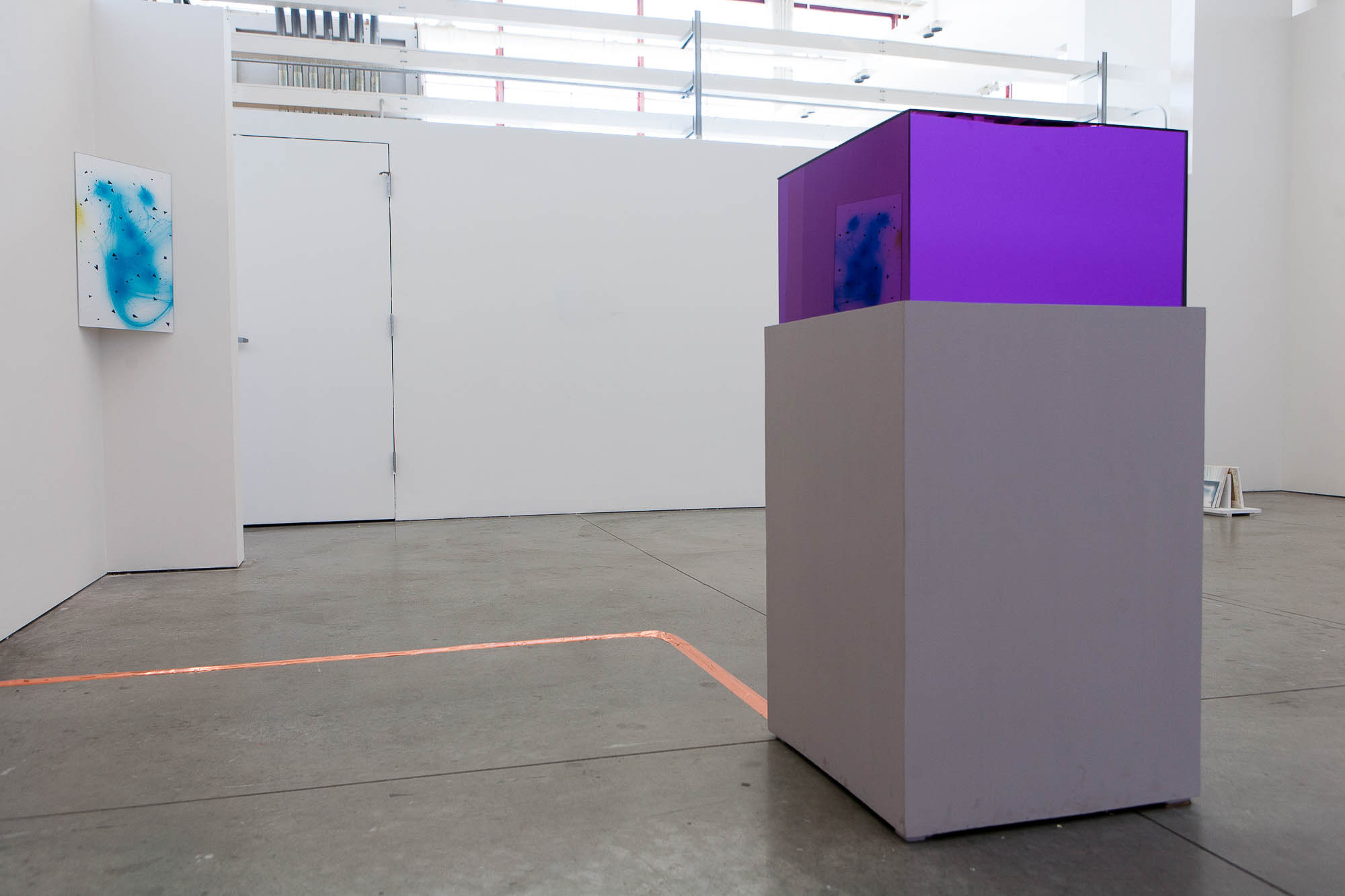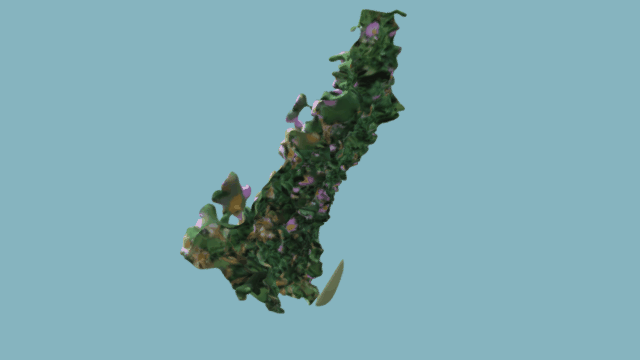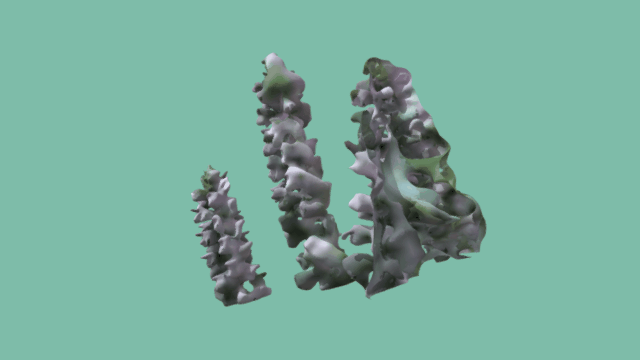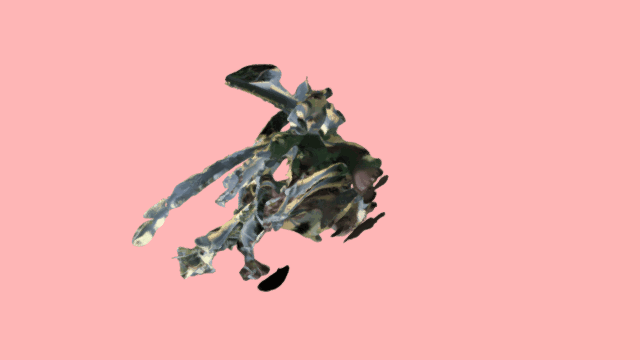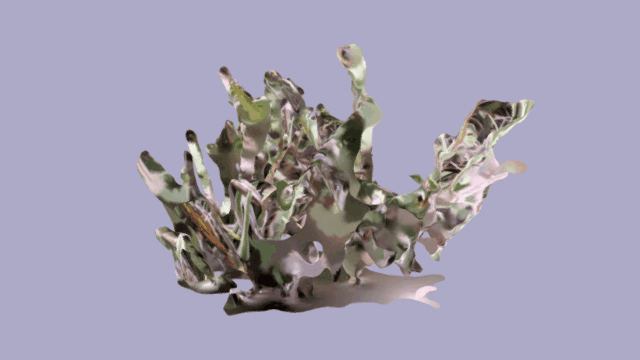Book: Ambient Pressure
2023 | Tall Poppy Press, Melbourne
The book features images from the project Ambient Pressure and includes text from The Nature Book by Tom Comitta.
25.4 x 20.3 cm | 10 x 8 in
88 pages
Exposed spine binding
Box board cover with printed and varnished design
Edition of 200
Available through Tall Poppy Press


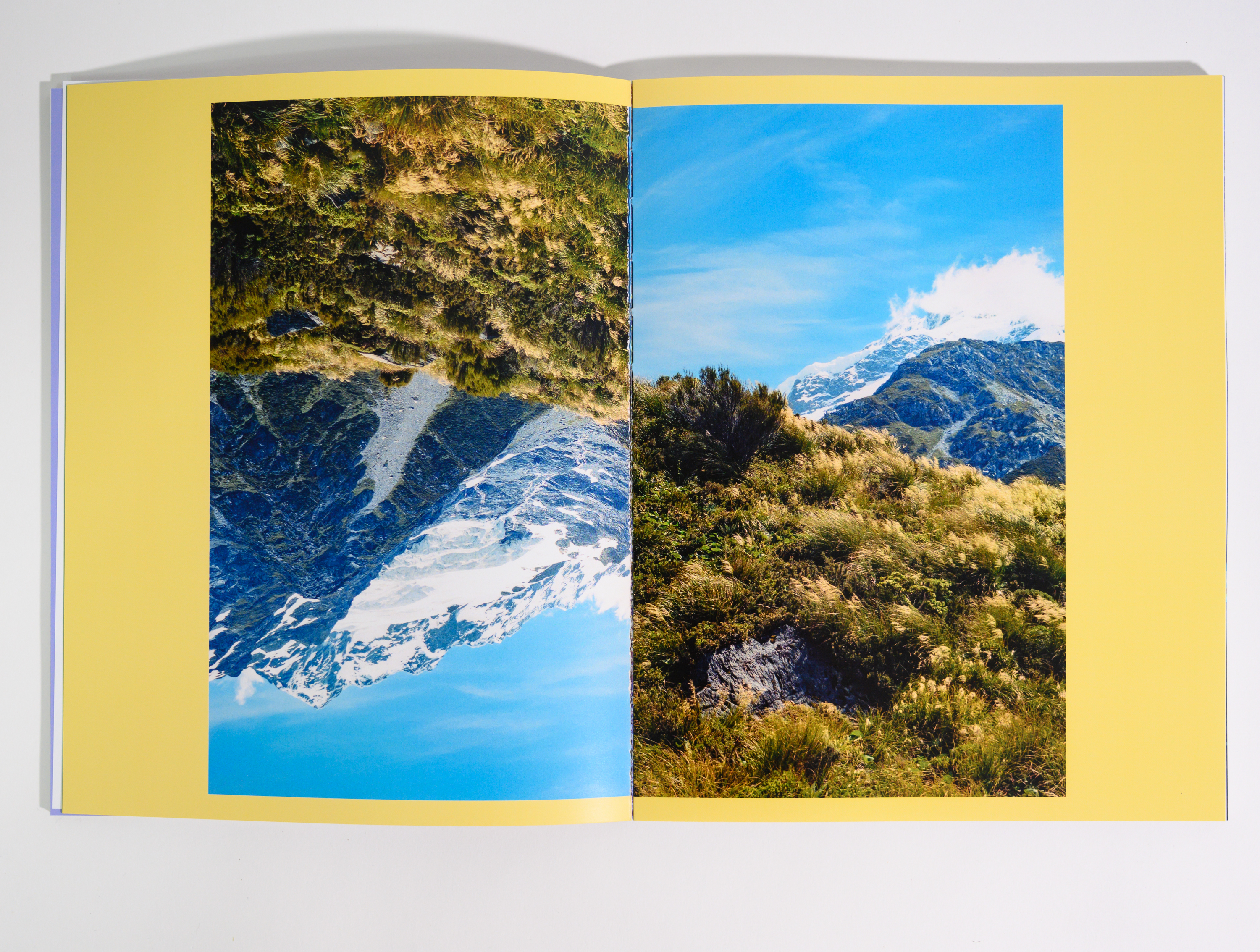


Inverted Landscapes
2020 | PhD thesis exhibition | chromogenic prints, pigment prints, gelatin silver solar prints, digital video, digital 3D models
“The Anthropocene casts a long shadow over everything. I made these artworks as a response to the climate crisis, answering the urgent need to conceptualize nature differently.”

Exhibition at Fiona and Sidney Myer Gallery, Melbourne, Australia Photo Credits: Mark Ashkanasy
Composed of three projects — Ambient Pressure, Surfacing, and Echo — the artworks in the exhibition were formed through creative practice PhD research that addresses how nature is envisioned through photography, video, and scanning technology.
At a time of extreme environmental upheaval, Inverted Landscapes exposes how photography objectifies, abstracts, and distances nature; it simultaneously undermines material semblance and the representational structures of photography. By haptically manipulating conventional landscape imagery, enmeshing photo-materials with natural phenomena, and harnessing the limitations of digital 3D scans of flora, this artistic research highlights the relationalities between nature, culture, and technology.
Inverted Landscapes contends with the material and political implications of visually representing the Anthropocene and attempts to shift habitual ways of seeing — and therefore relating to — more-than-human nature.




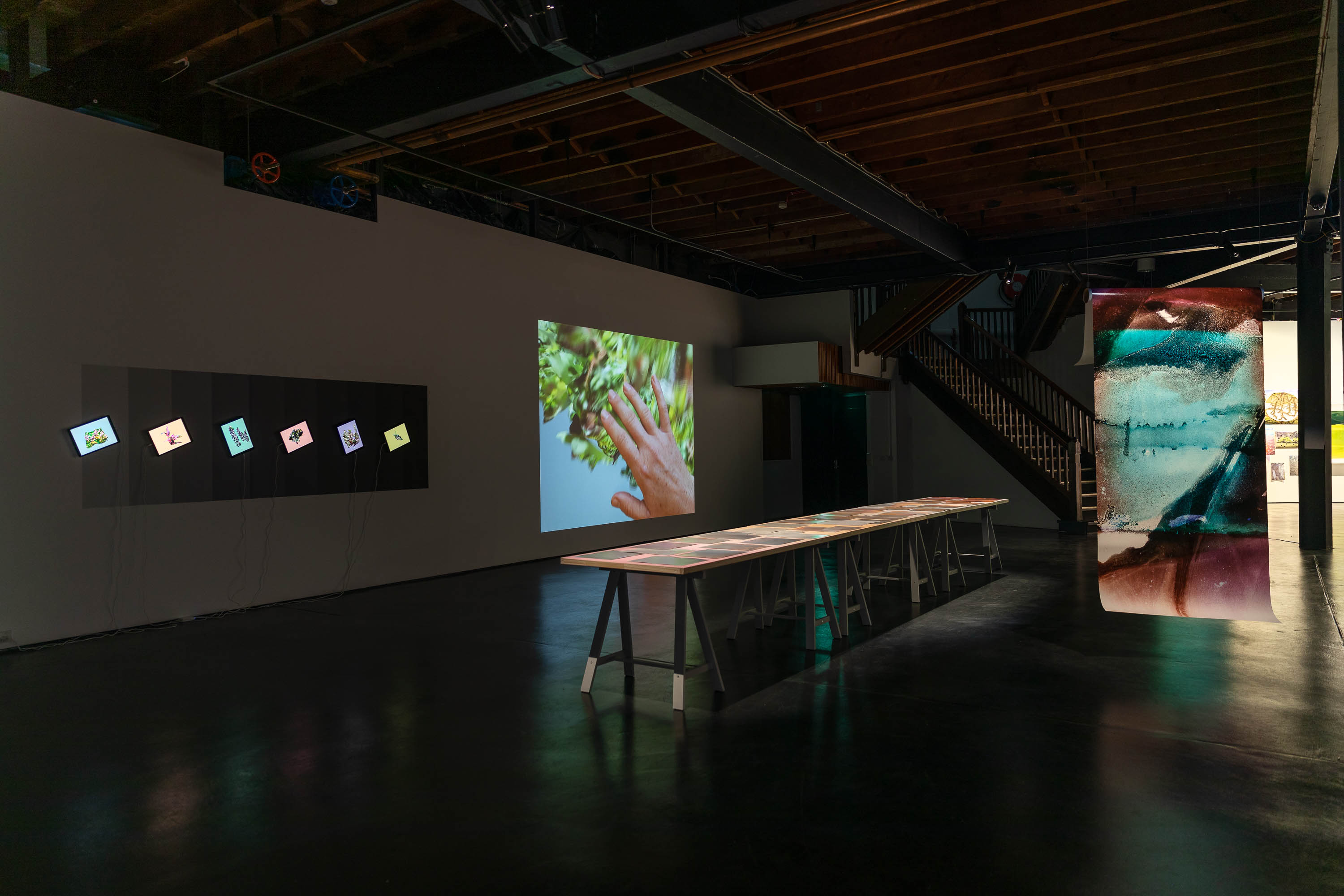


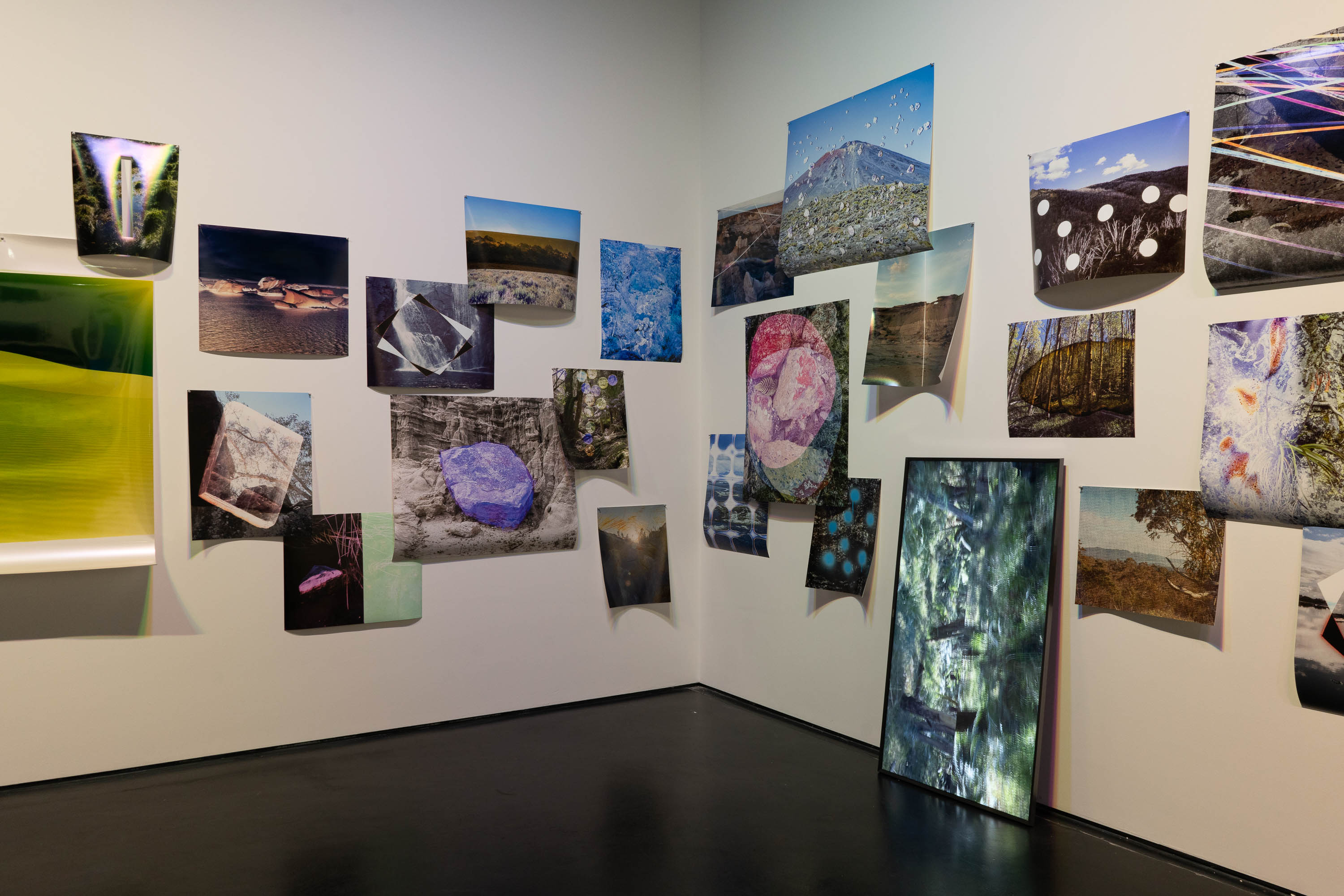

Interference Pattern
2018, 2022 | collaborative installation with Vivian Cooper Smith | chromogenic prints, pigment prints, colored gels
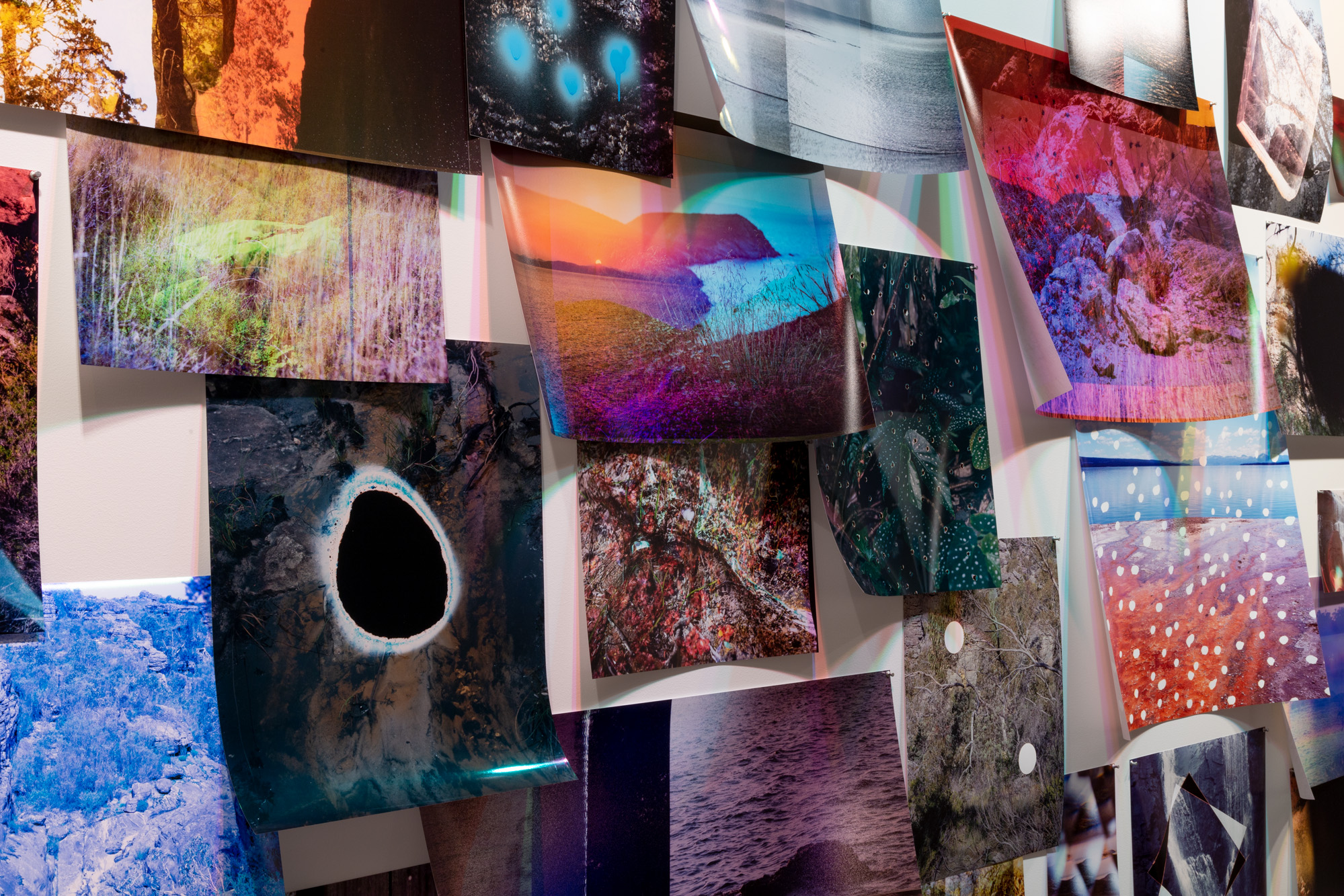
Interference Pattern is a collaborative installation with artist Vivian Cooper Smith developed from a shared an interest in critiquing the ways photography constructs our perceptions of nature through the concept of landscape.
The project is informed by the scientific feminism of Karen Barad, whose diffractive methodology measures ‘interference patterns’ — the effects of difference rather than the differences themselves. Like intersecting ripples made by two rocks thrown into a pond, these differences interact — some intensifying and some negating the other. The installation operates as an interference pattern, it maps the effects of two artists working in complementary and contrasting ways and opens up possibilities for new materialist pathways through photography.
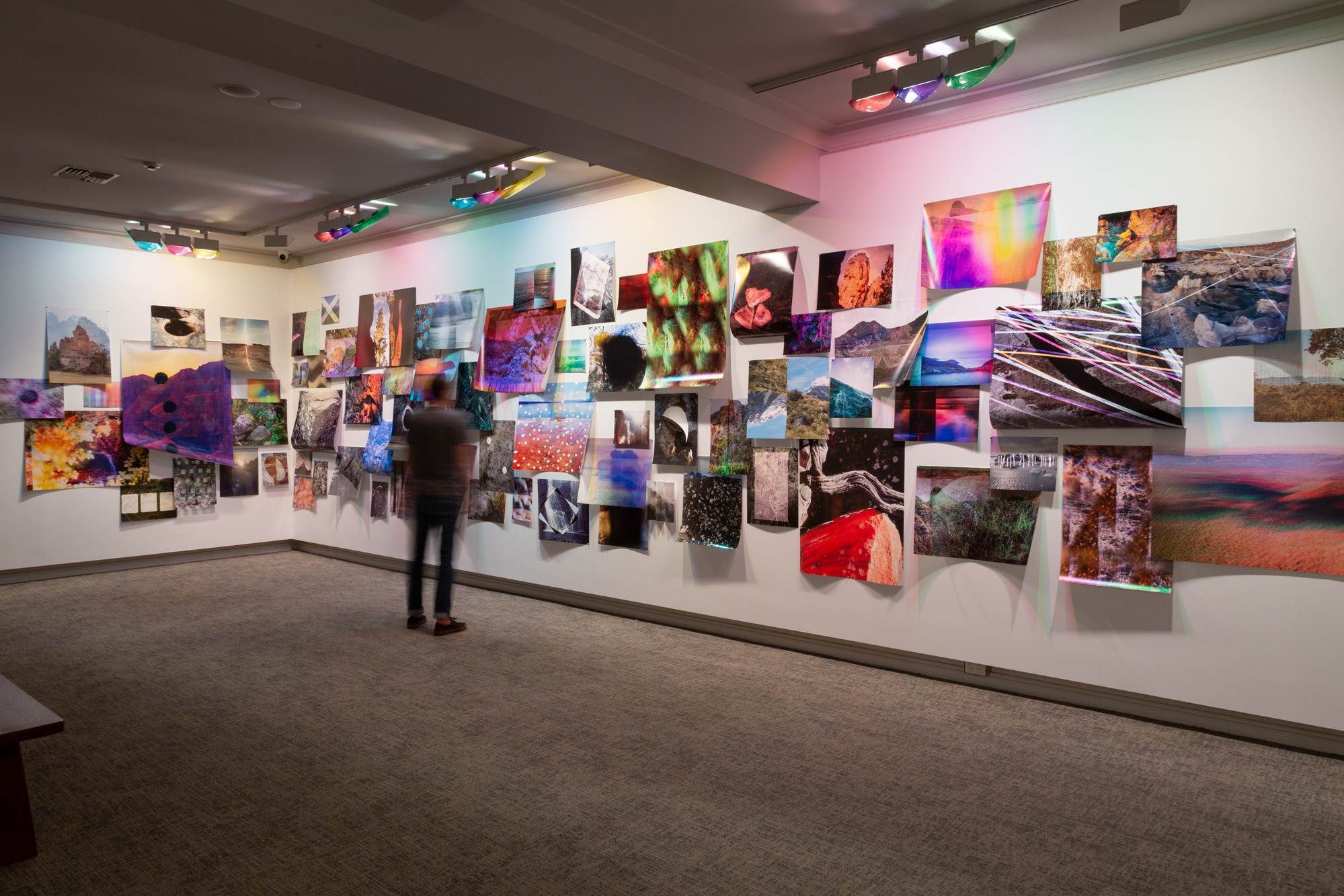
Deep Learning the Climate Emergency
2022 | GAN-generated moving image with audio, 07:35
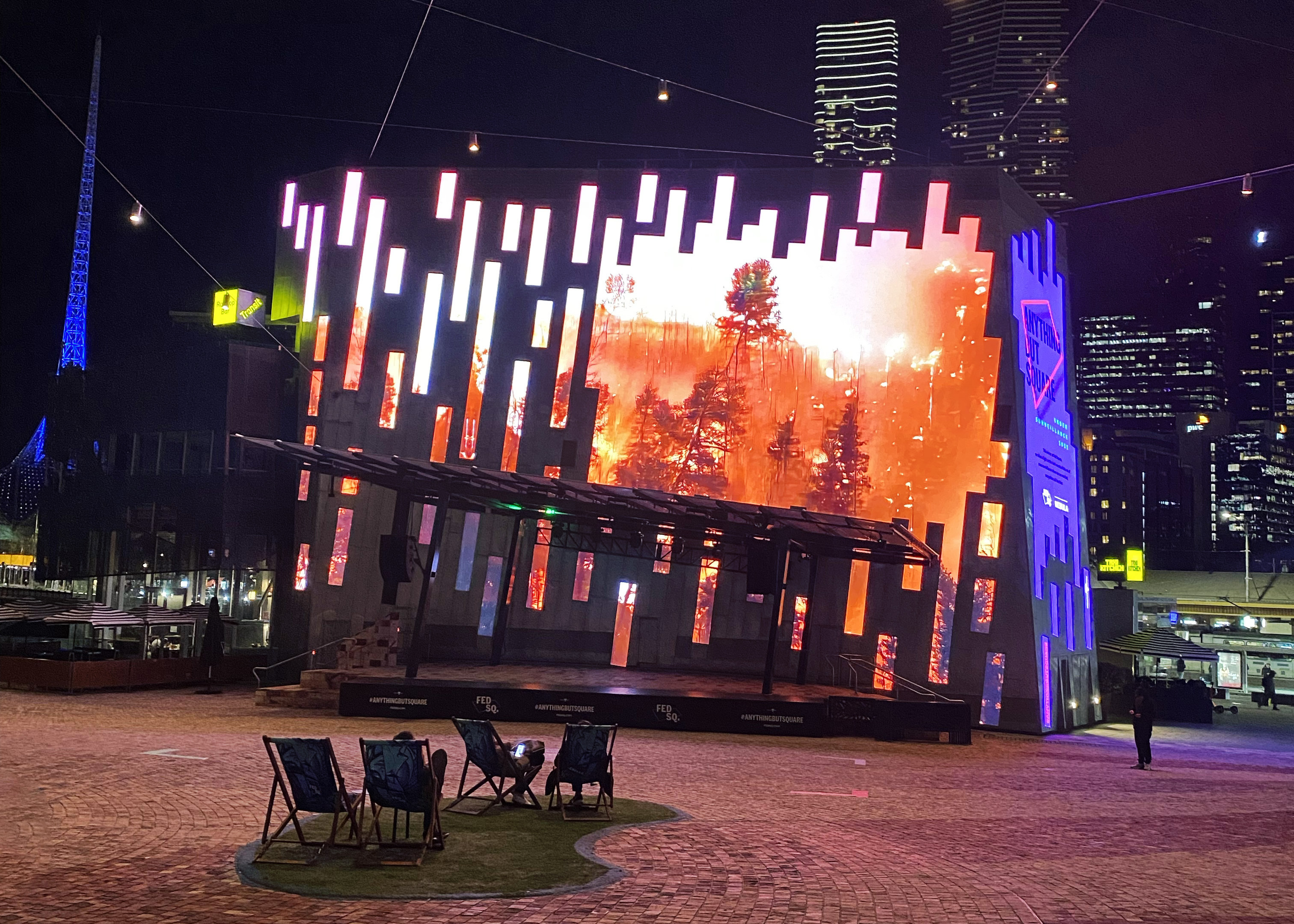
Deep Learning the Climate Emergency uses photography and machine learning to (re)generate the aesthetic patterning of ecological collapse. For this work, I was interested to see if familiar images of the climate emergency, ones that have perhaps lost their potency through repetition, could be reconfigured into a new affective experience. The moving image artwork was made with generative adversarial networks (GANs) trained on image-based datasets depicting the effects of a heating planet: wildfire, bleached coral, drought, melting glaciers, and suns through smoke-filled skies. Refracted through the prism of machine learning, the video is a rendering of the shapes and textures of the climate emergency.
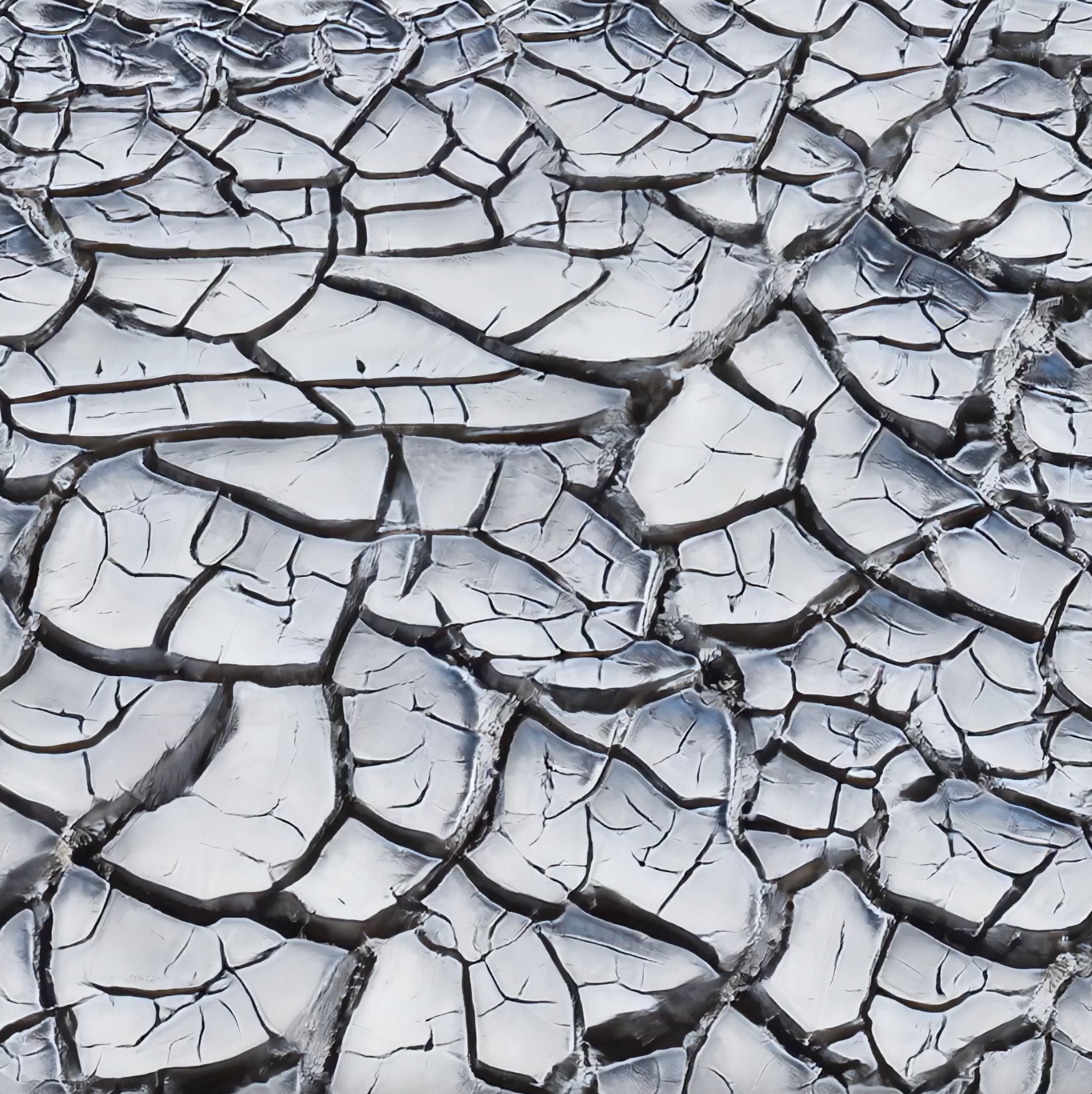
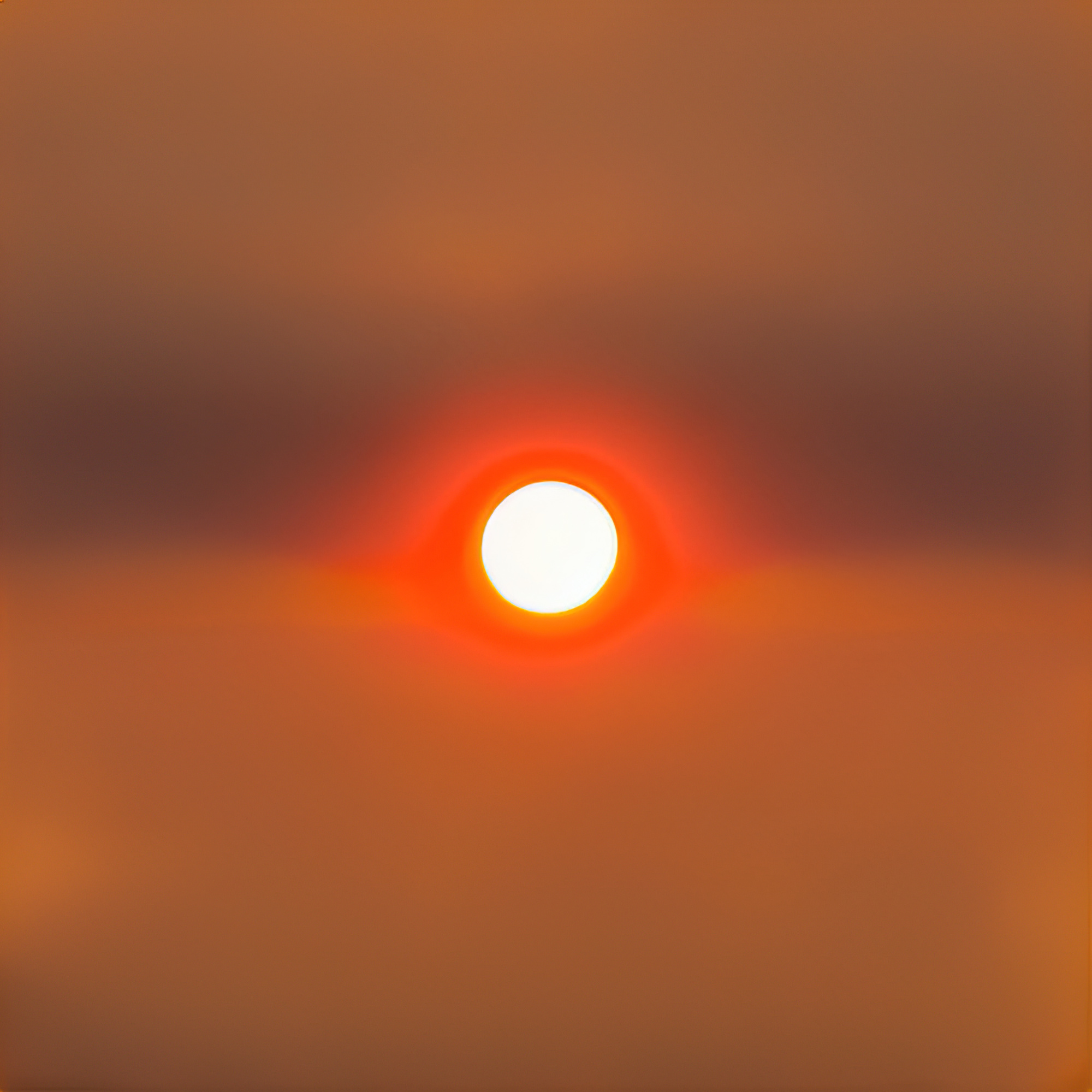

Video Preview
Another Nature: Preliminary Images
2022 | digital infrared photographs
The 2019-2020 summer in Australia was overrun by a megafire that blazed so intensely it could be seen from space. Two years after Black Summer, I traveled to areas impacted by the fires with a camera sensitive to light beyond the visible spectrum. Making photographs and video by recording wavelengths of light typically invisible to human eyes uncovers the uncanny of these burn sites and their subsequent regeneration. Images of these environments depict regrowth in intense shades of blue, orange, and purple, in contrast to charred black trees. I am interested in ways that the effects of climate change can be defamiliarized and made more vivid. While visual information and data about ecological catastrophe are crucial to framing our predicament, there is a need to rework and reimagine representations of it. Can we ‘see’ — and therefore respond — differently to the climate crisis with creative applications of science?
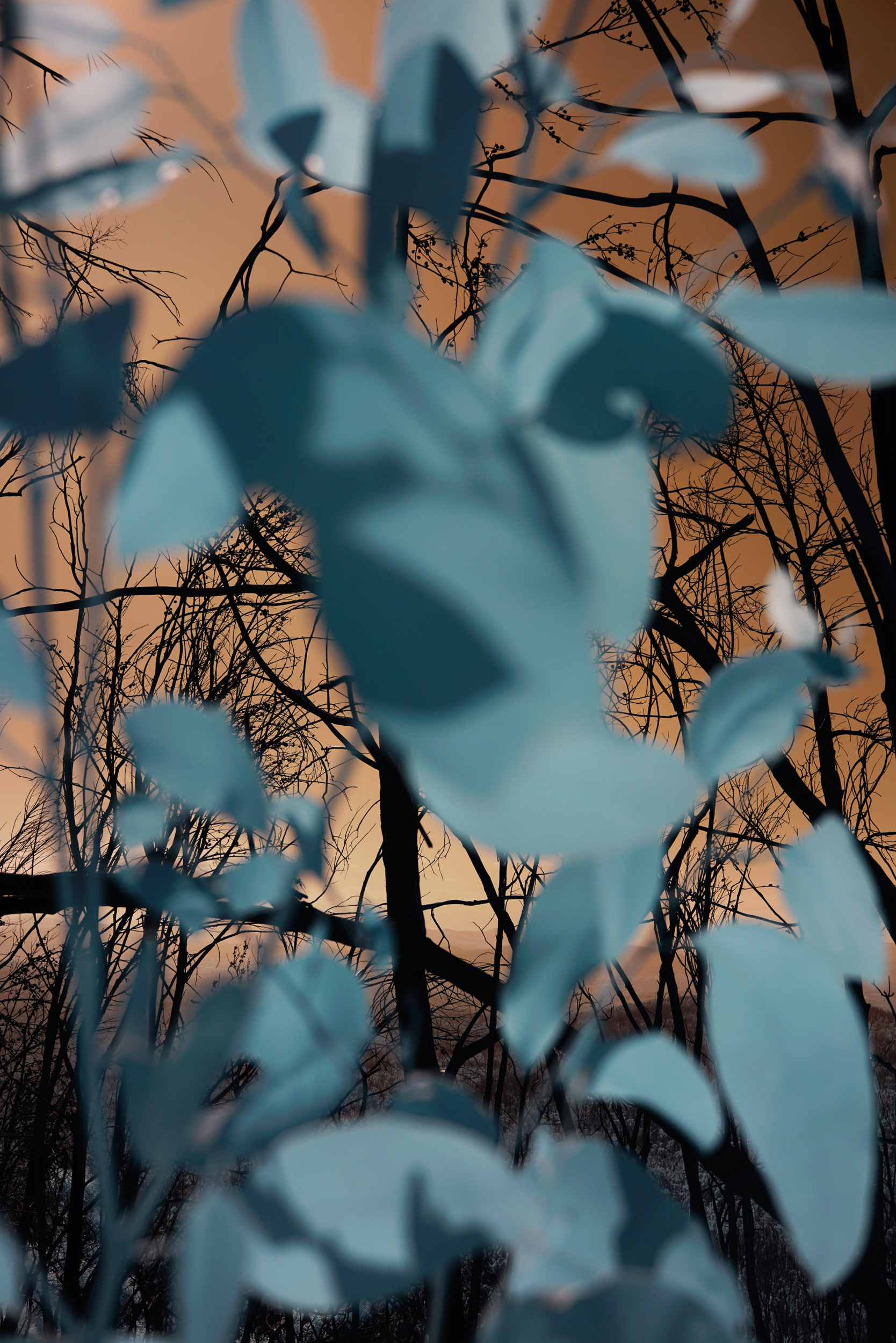

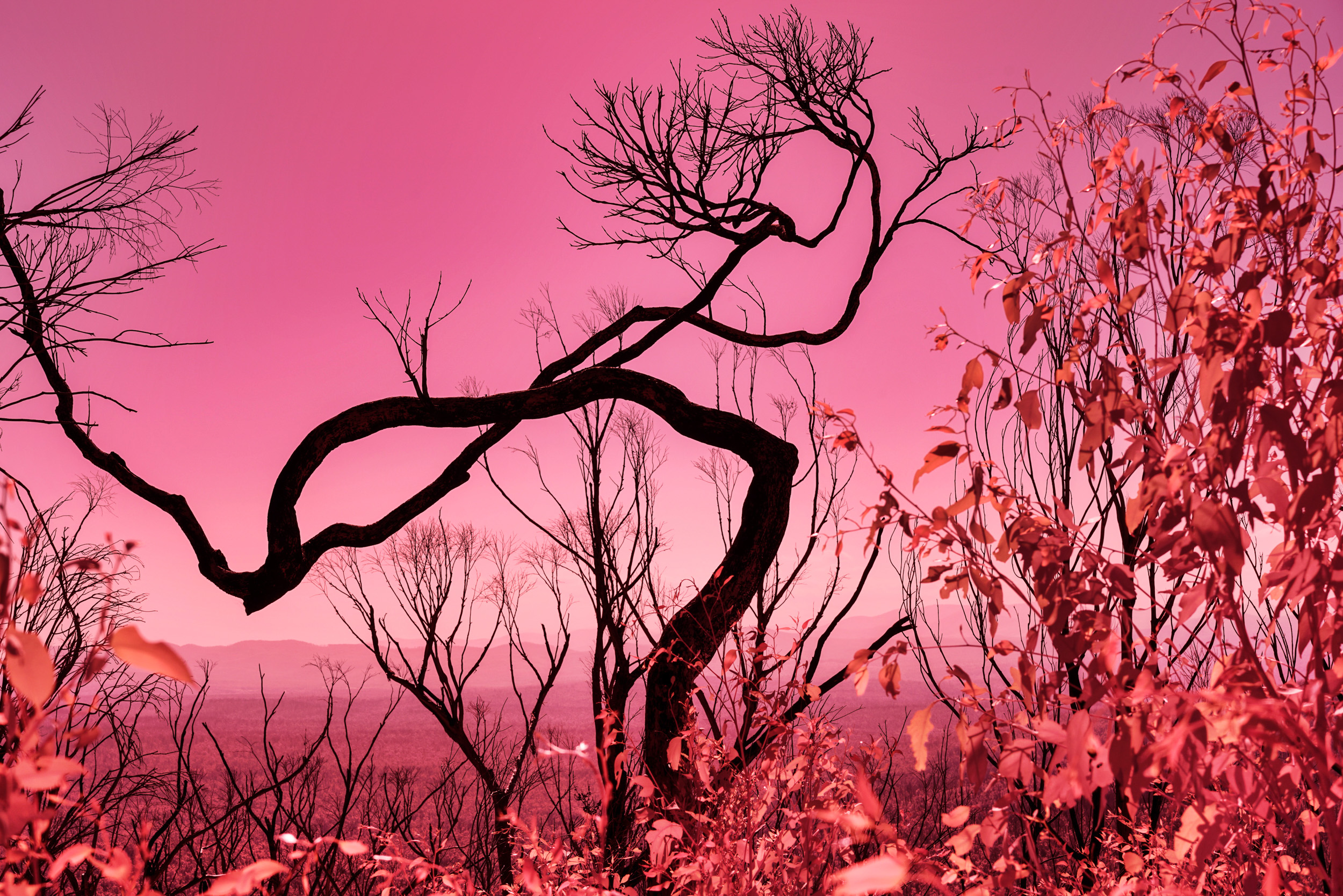


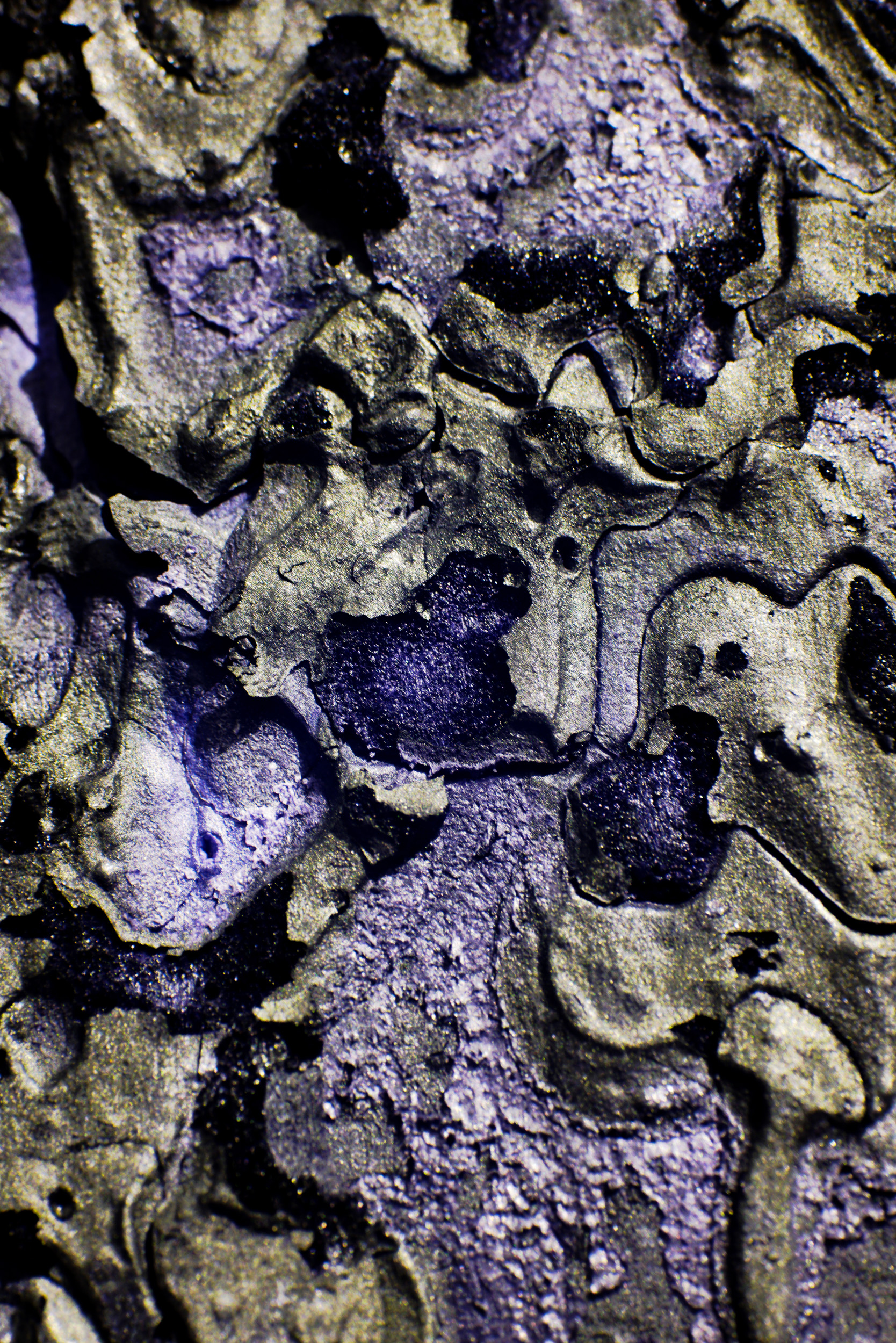
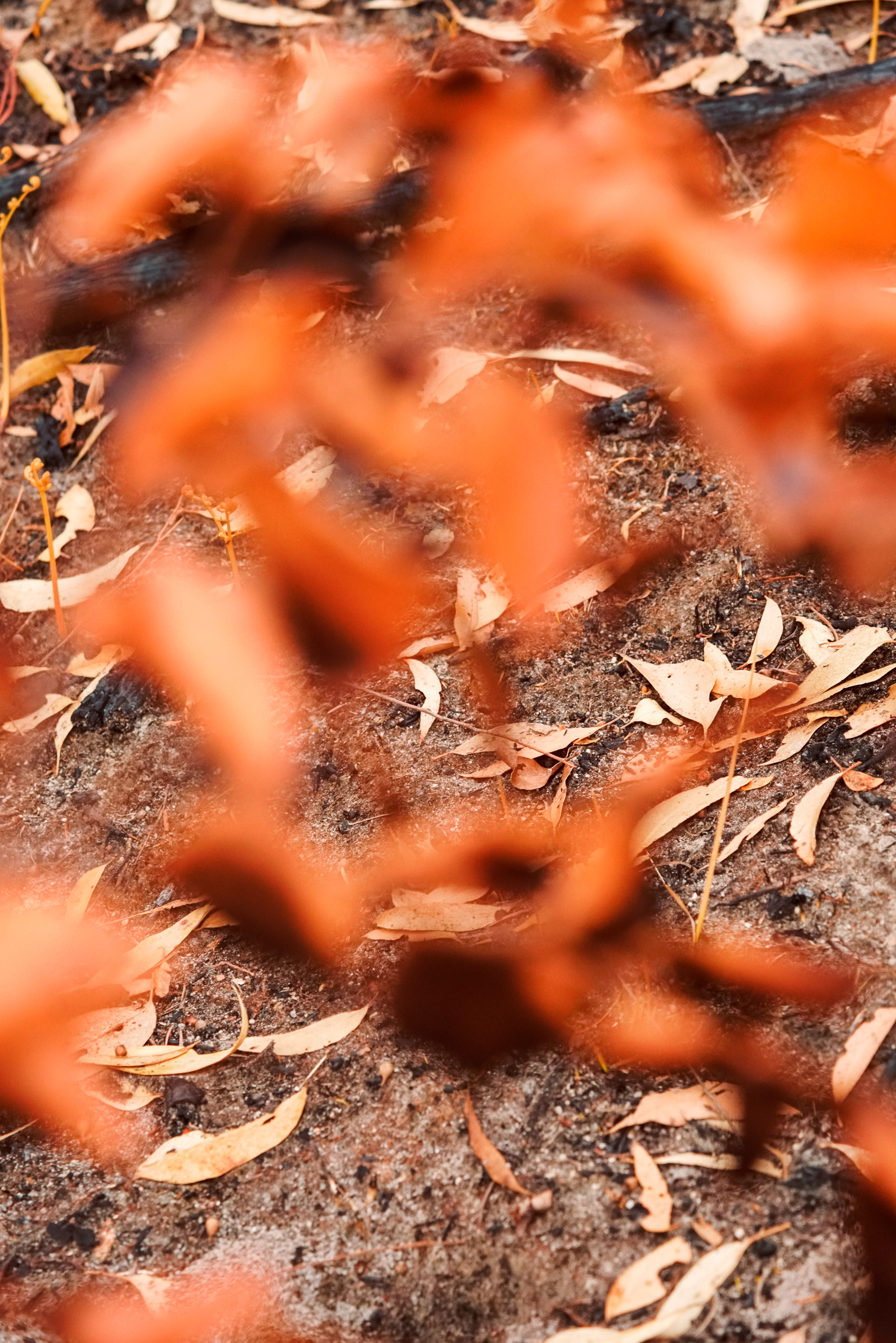
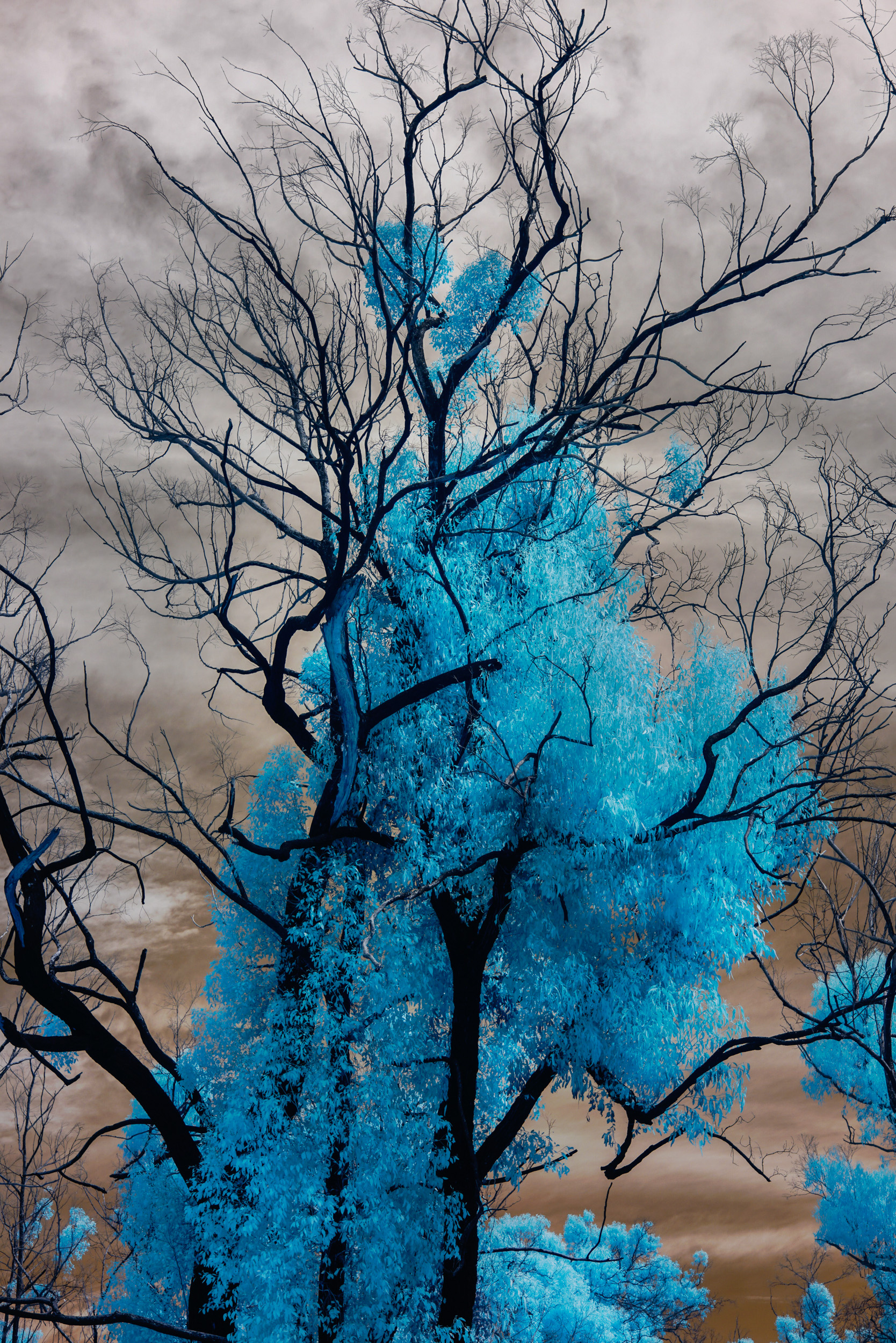

Ambient Pressure
2017–ongoing | 70+ pigment prints and chromogenic prints, digital video
Ambient Pressure is an ongoing project that draws attention to the ways that photography has literally and conceptually ‘framed’ nature. The artworks emerge from a combination of analog and digital interventions, involving the manipulation and physical modification of photographs. The images undergo a dual composition process: first during film capture, and then through the transformation of negatives, scans, and prints using tools such as blades, lighters, markers, plastic, rocks, bleach, and other materials. In the second phase of composition, intentional marks, ruptures, or overlays are applied to emphasize that photographs are not transparent windows to the world but rather constructed representations. This process — which changes the material surface of the photographs — exposes the photographic conditions that objectify and create a distance between nature and our human experience.
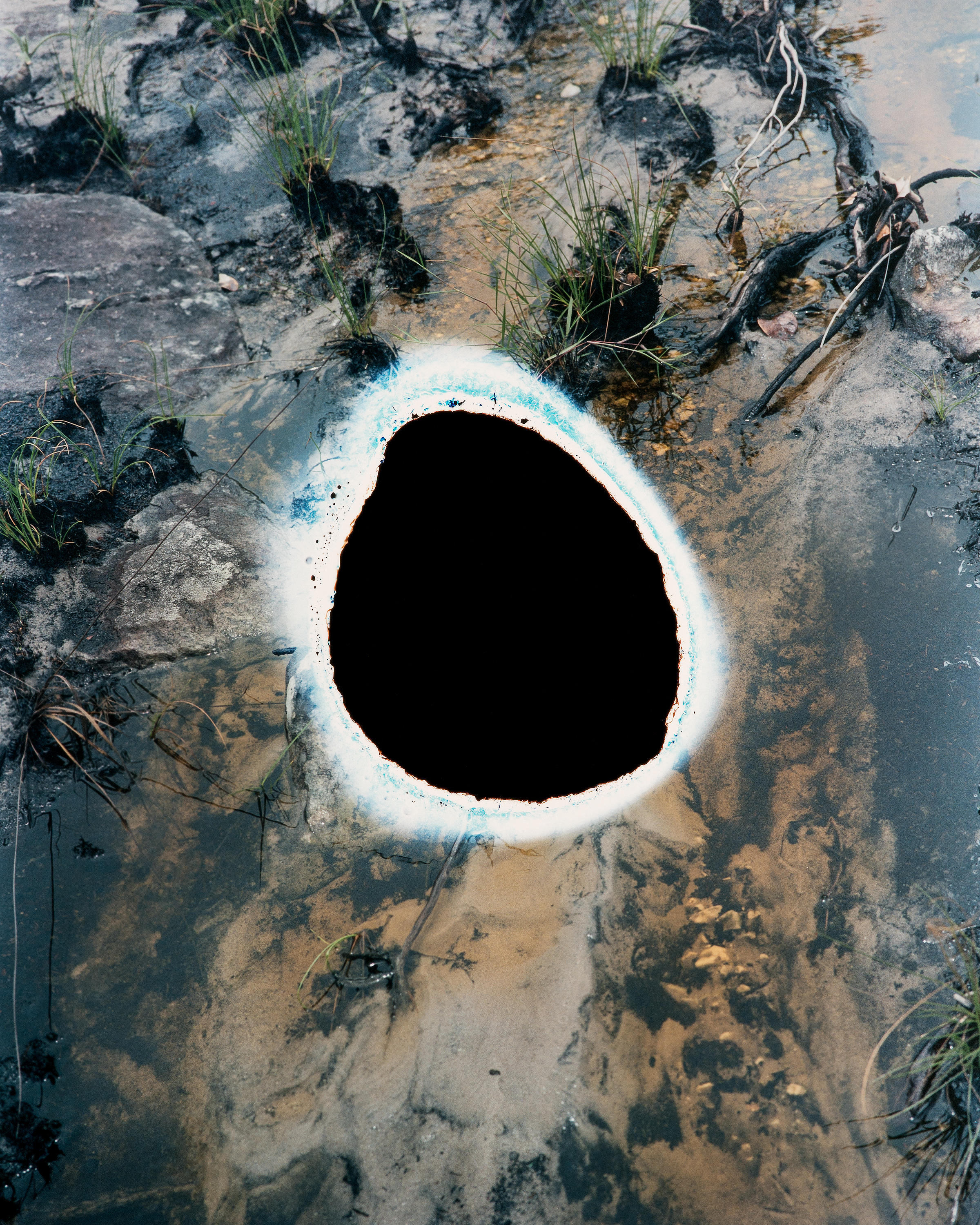
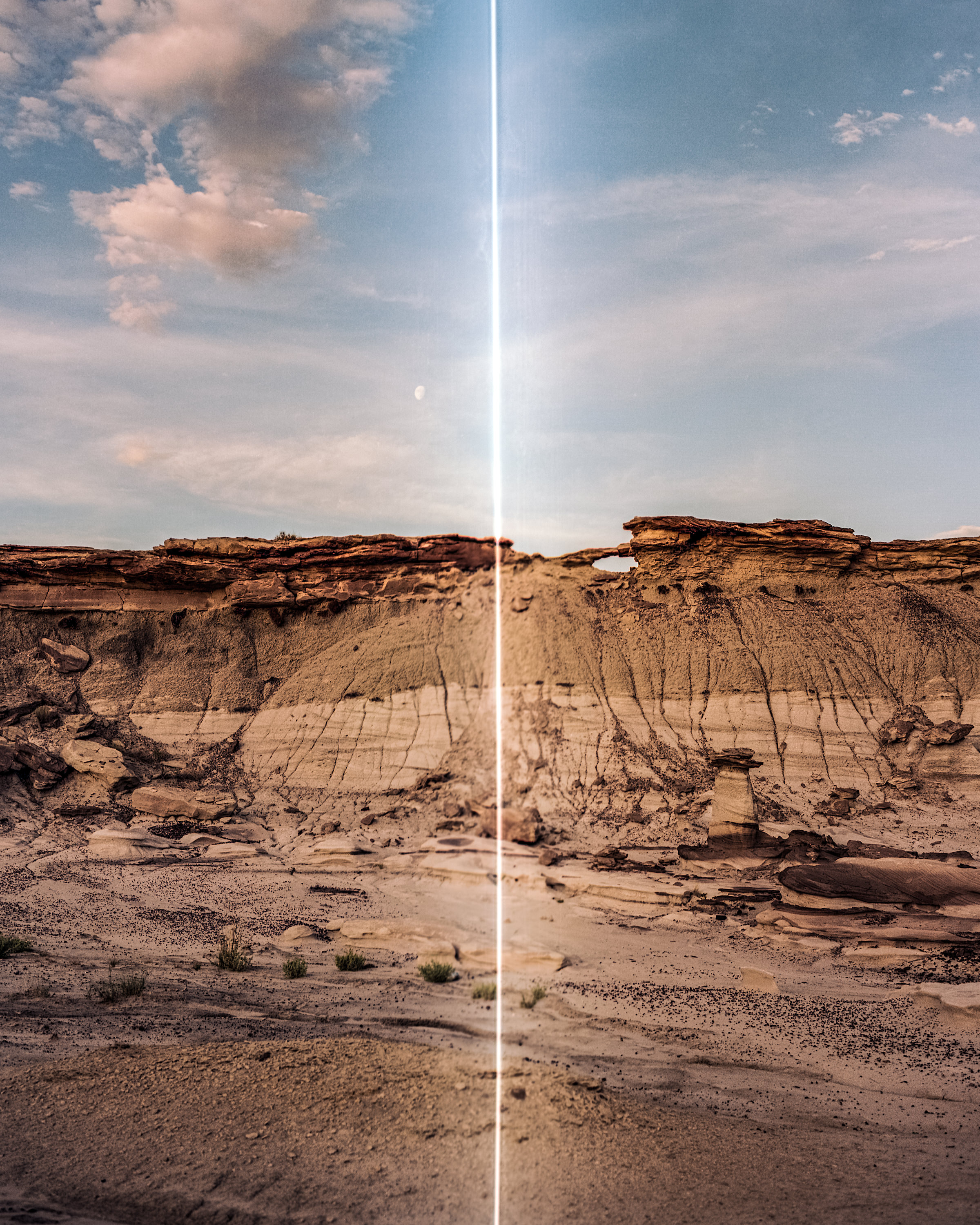
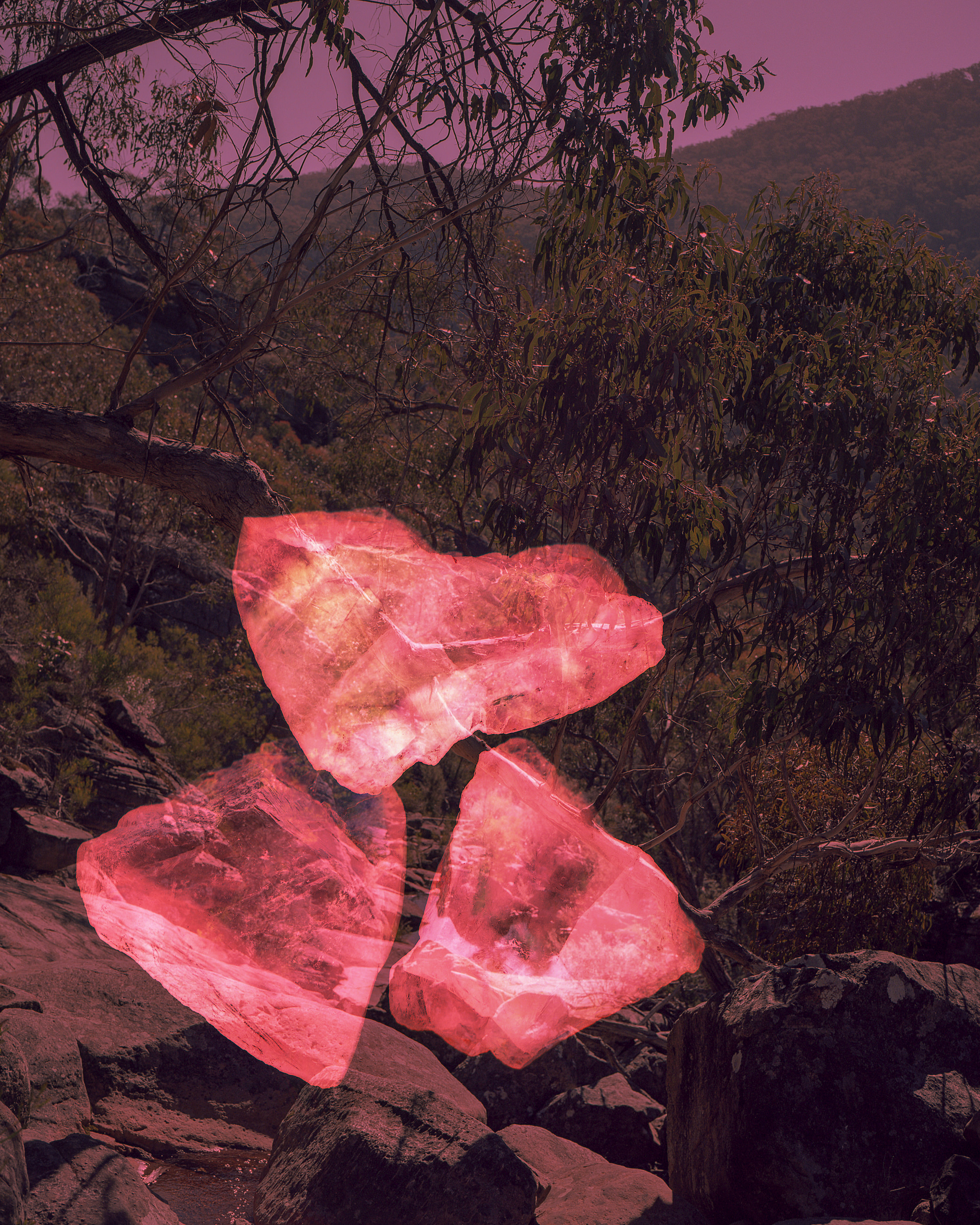
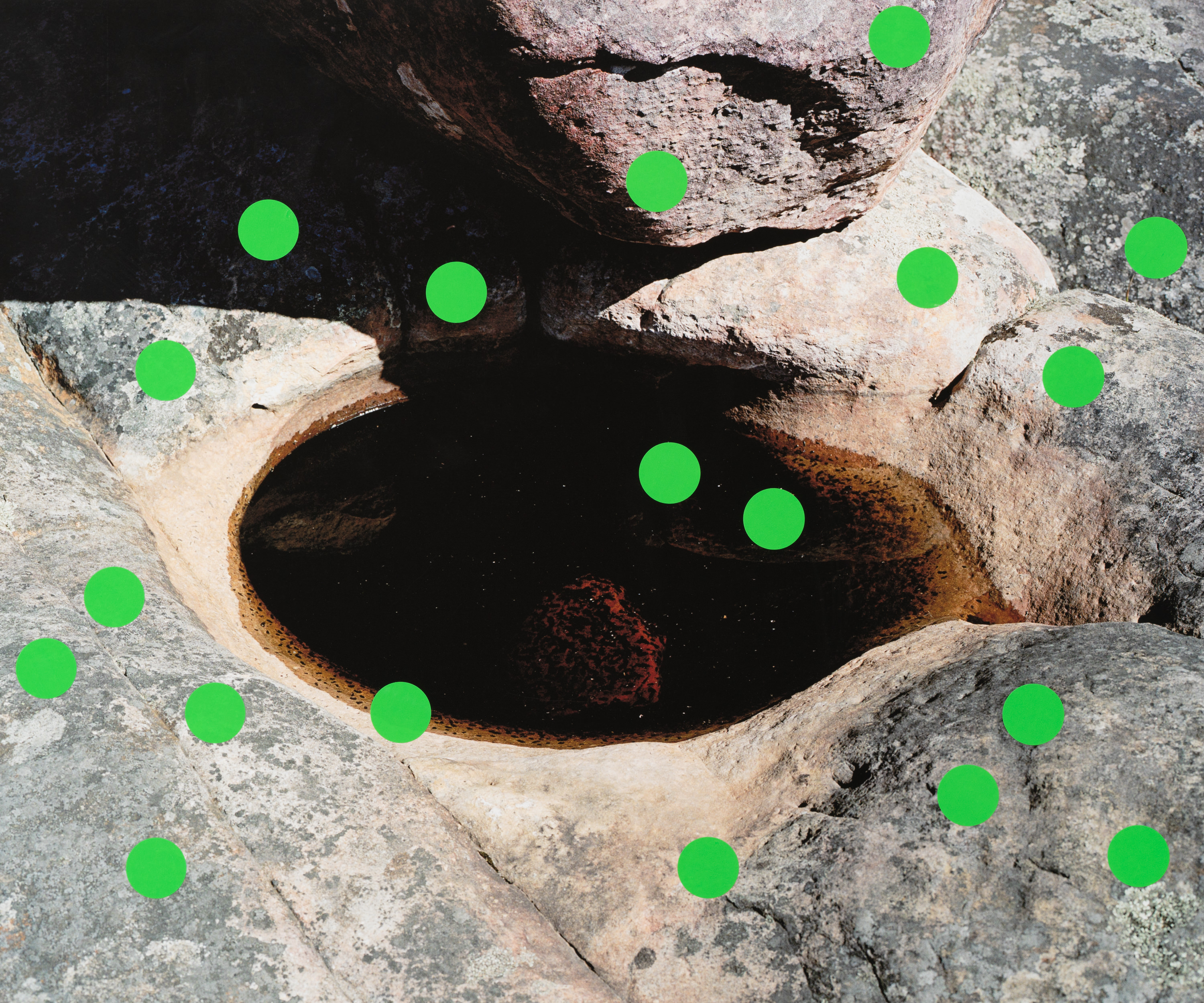
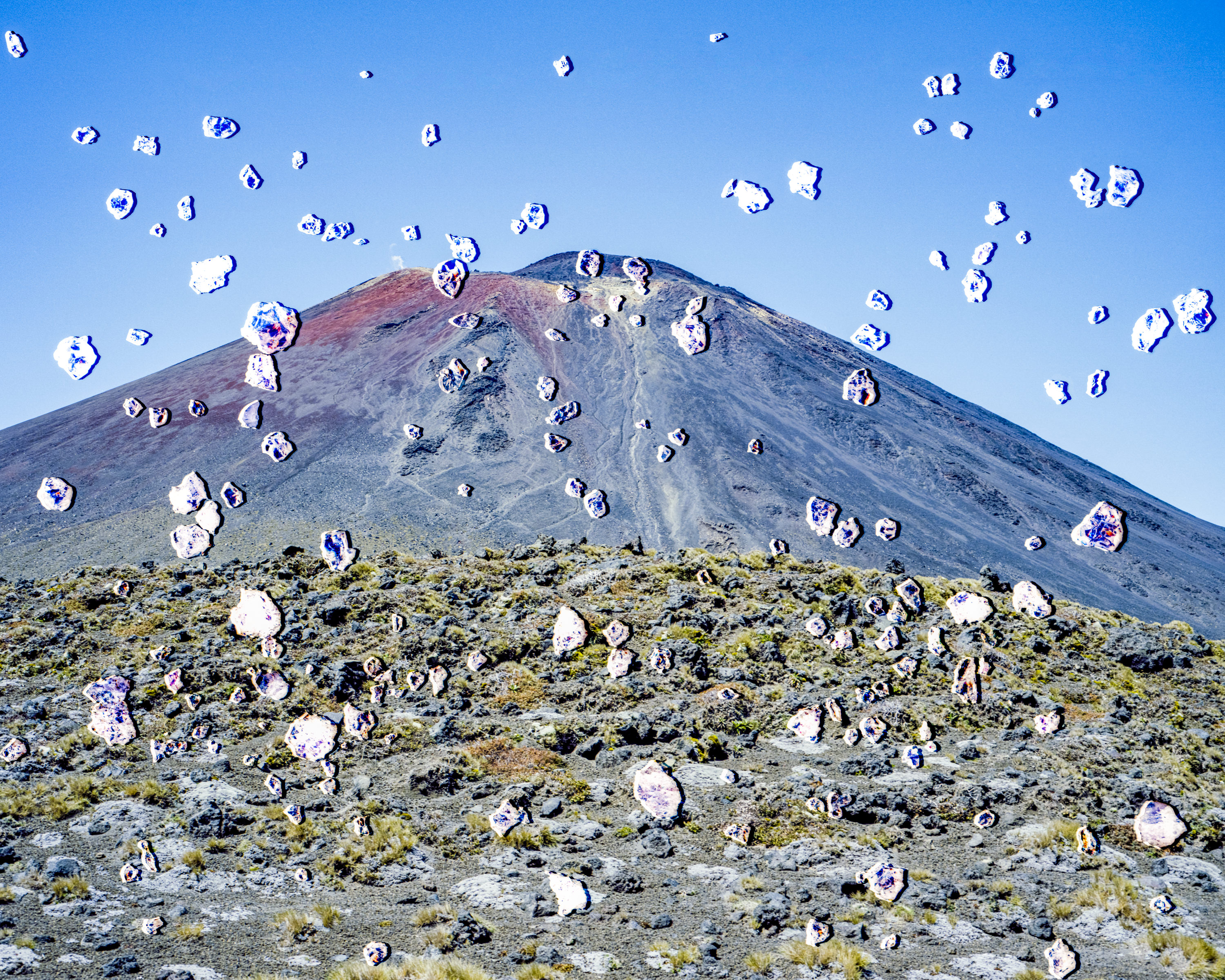
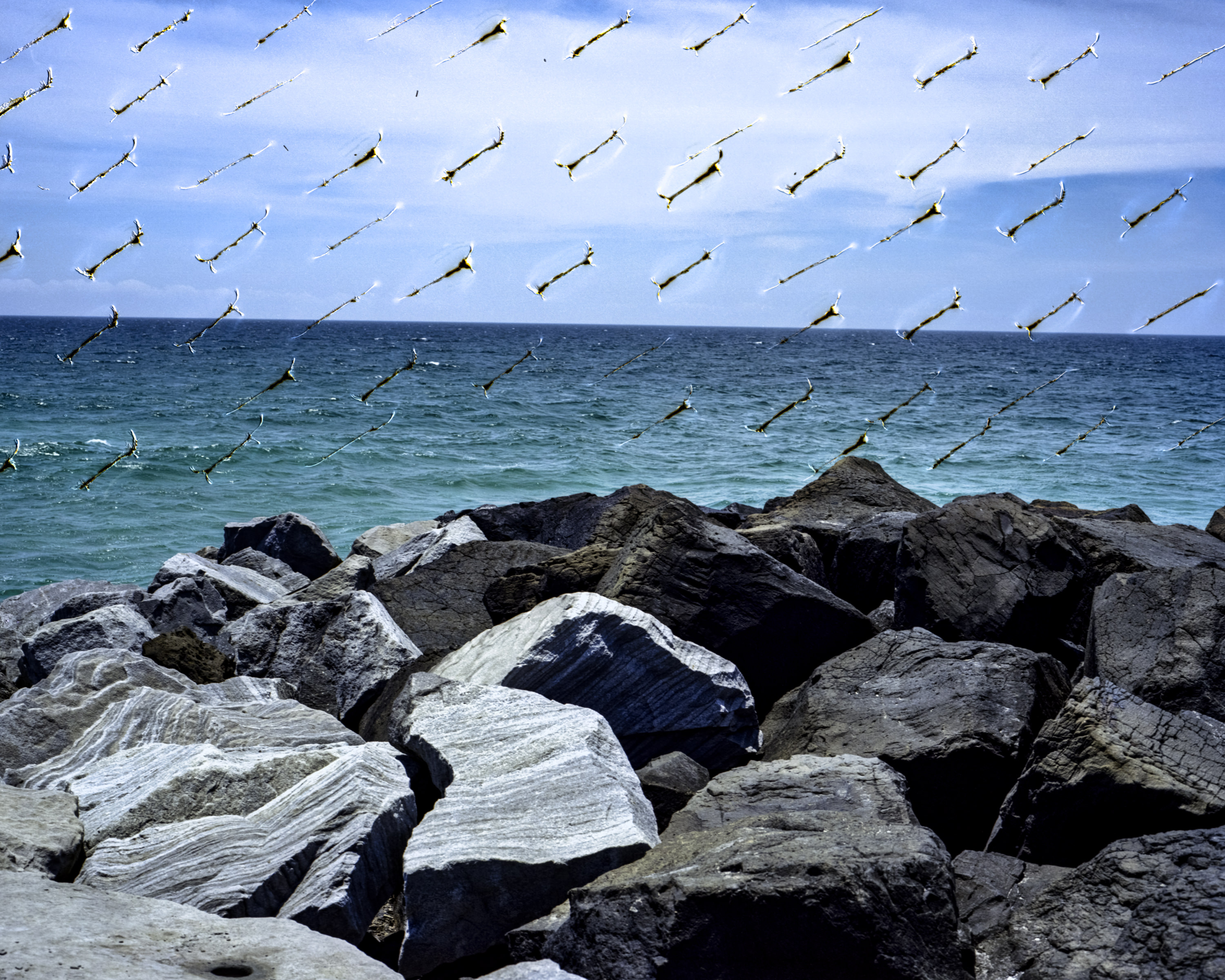
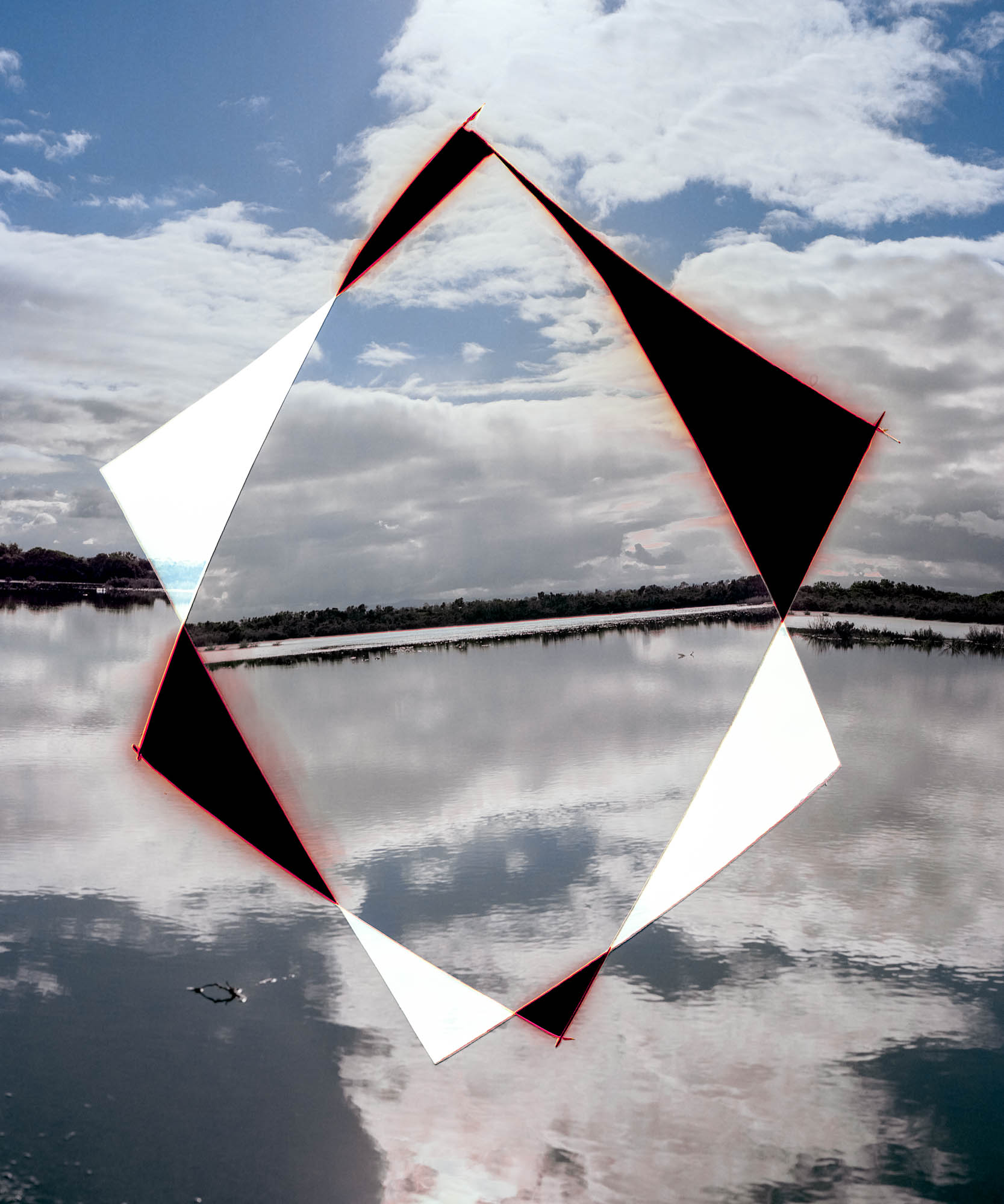
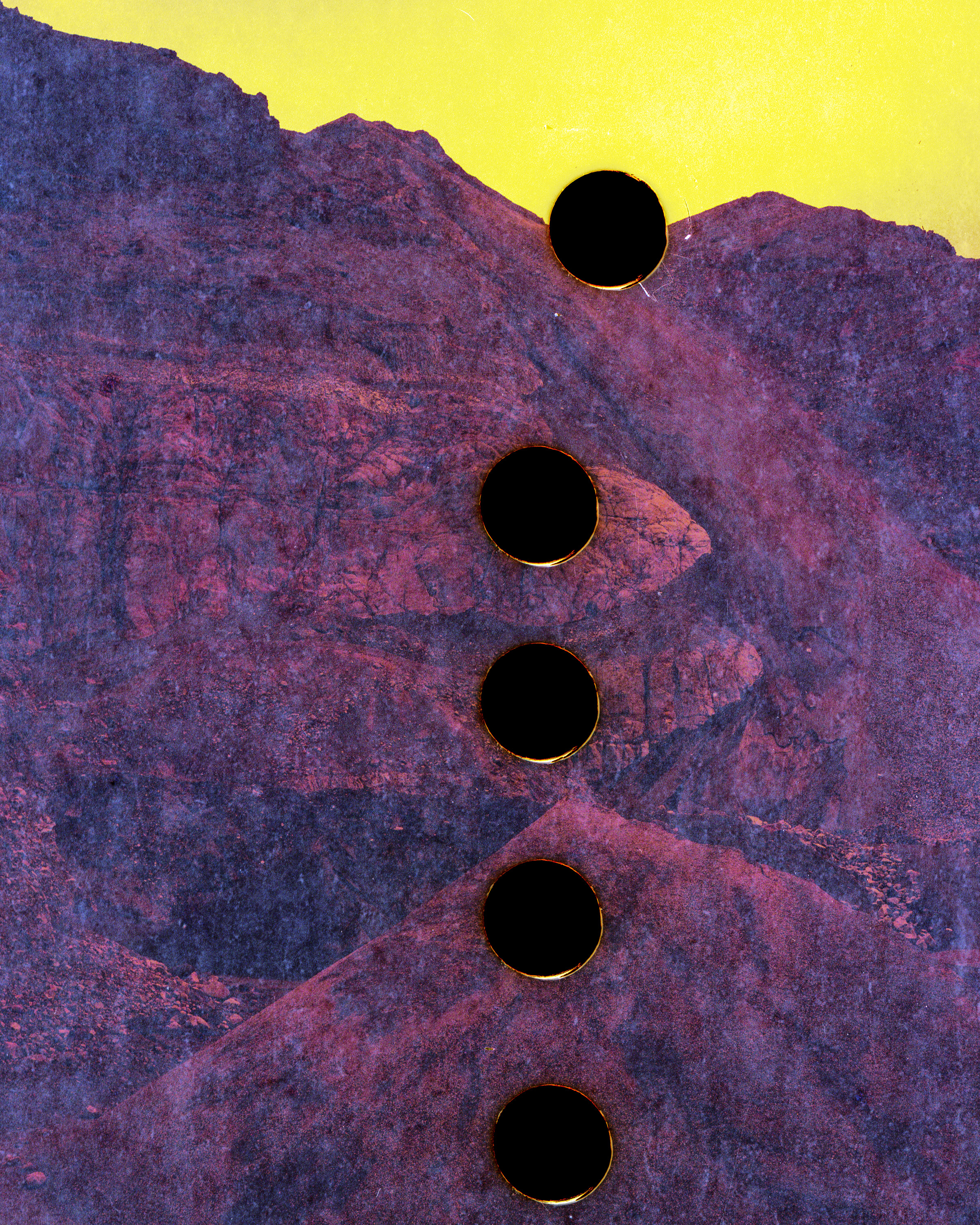

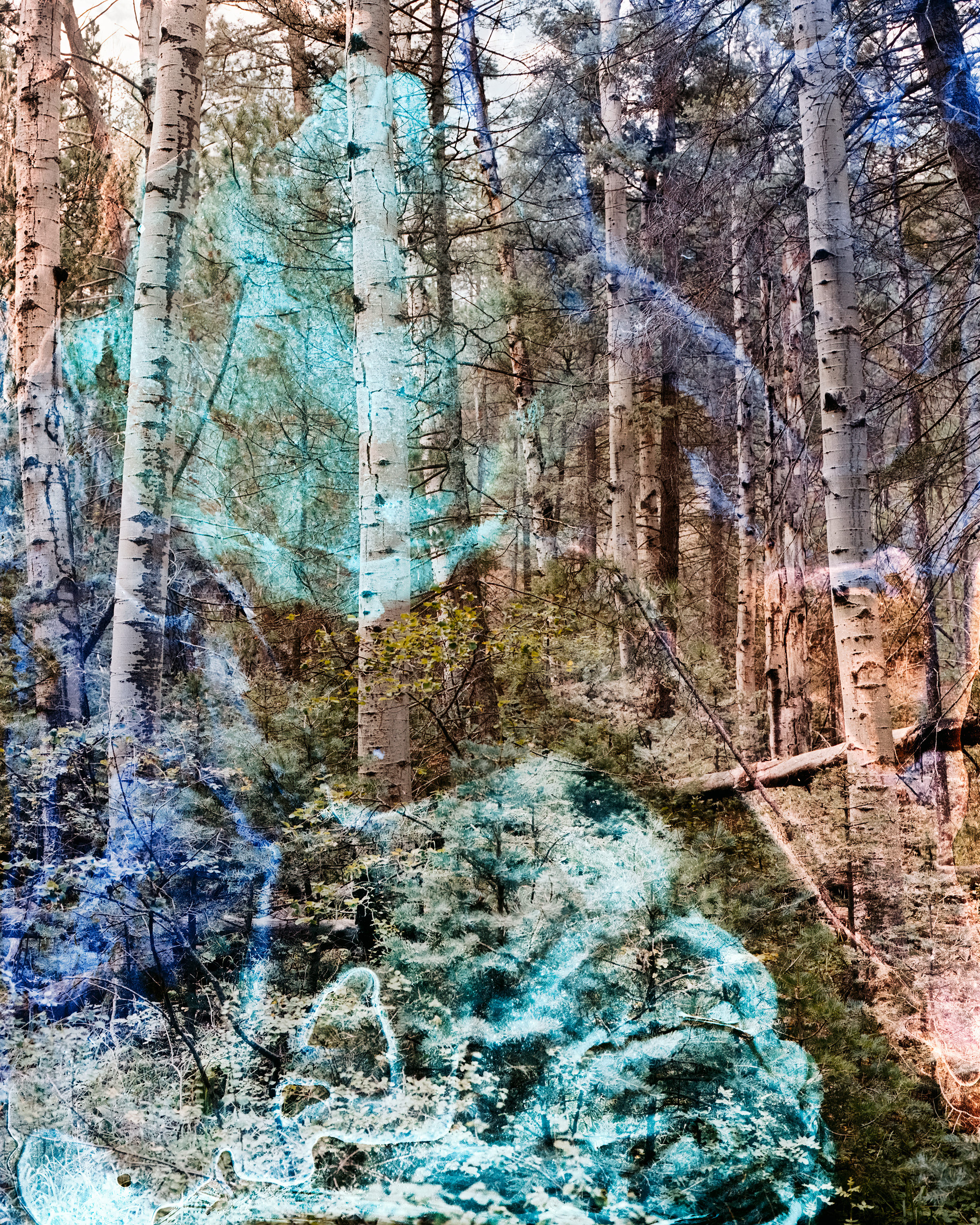
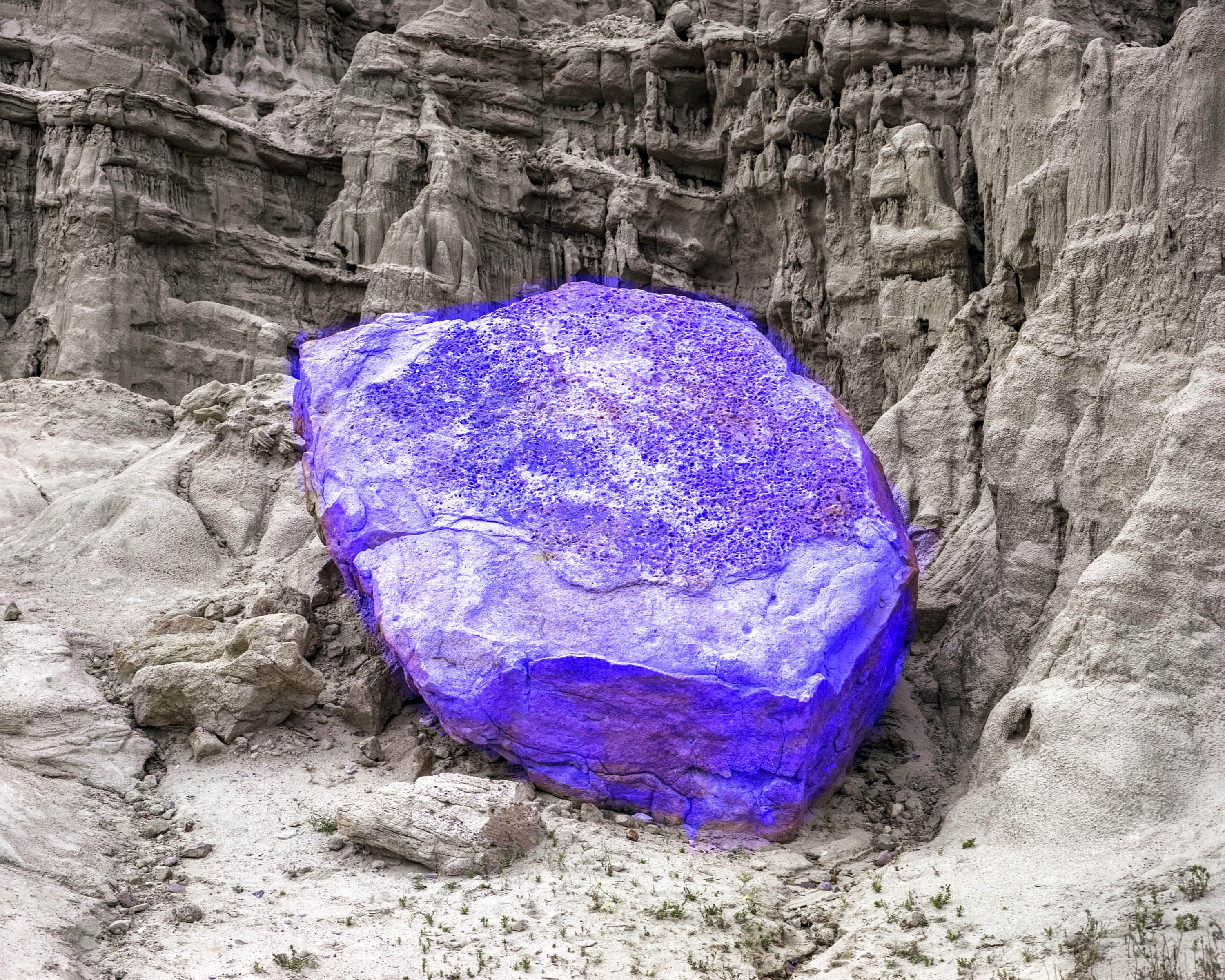

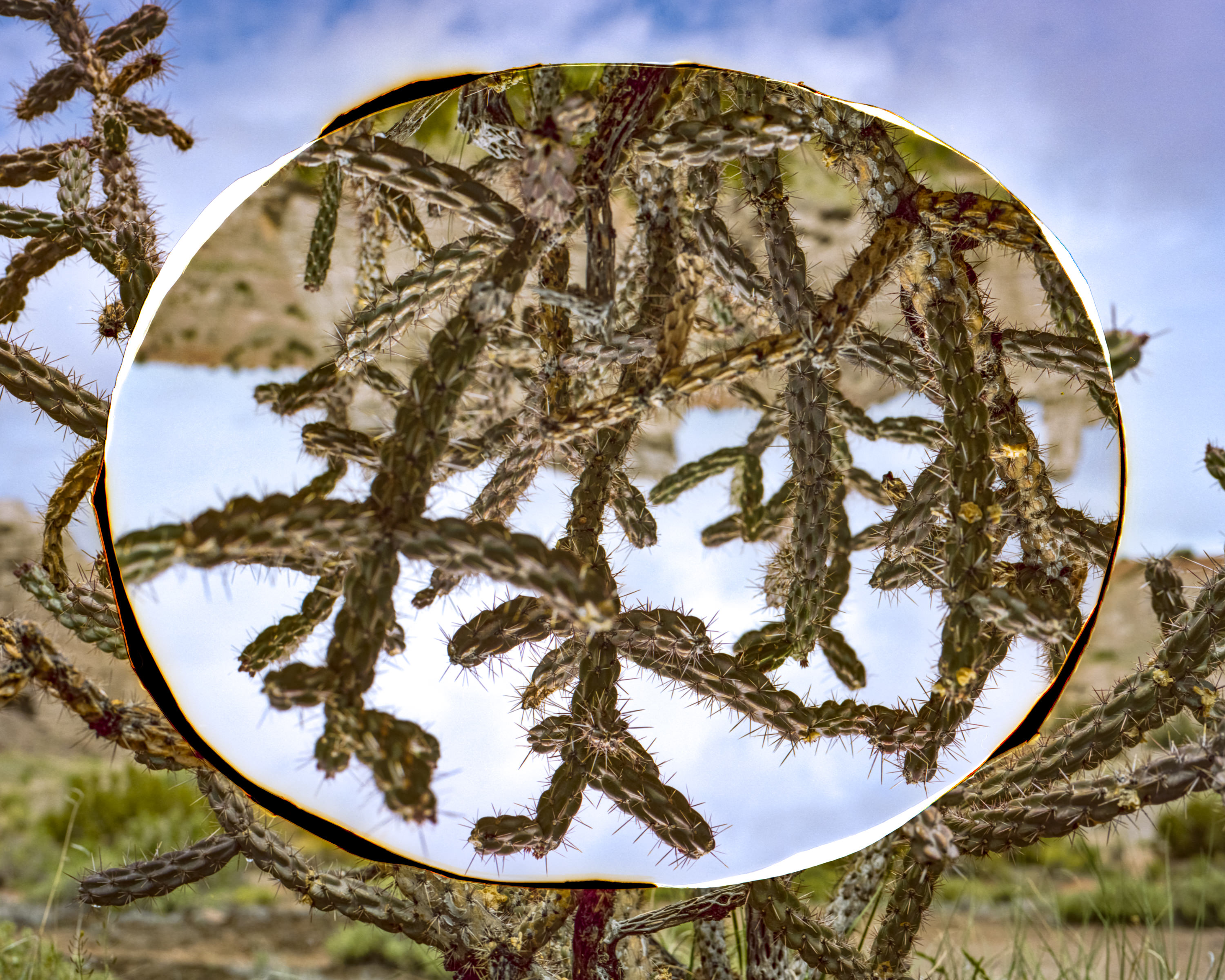
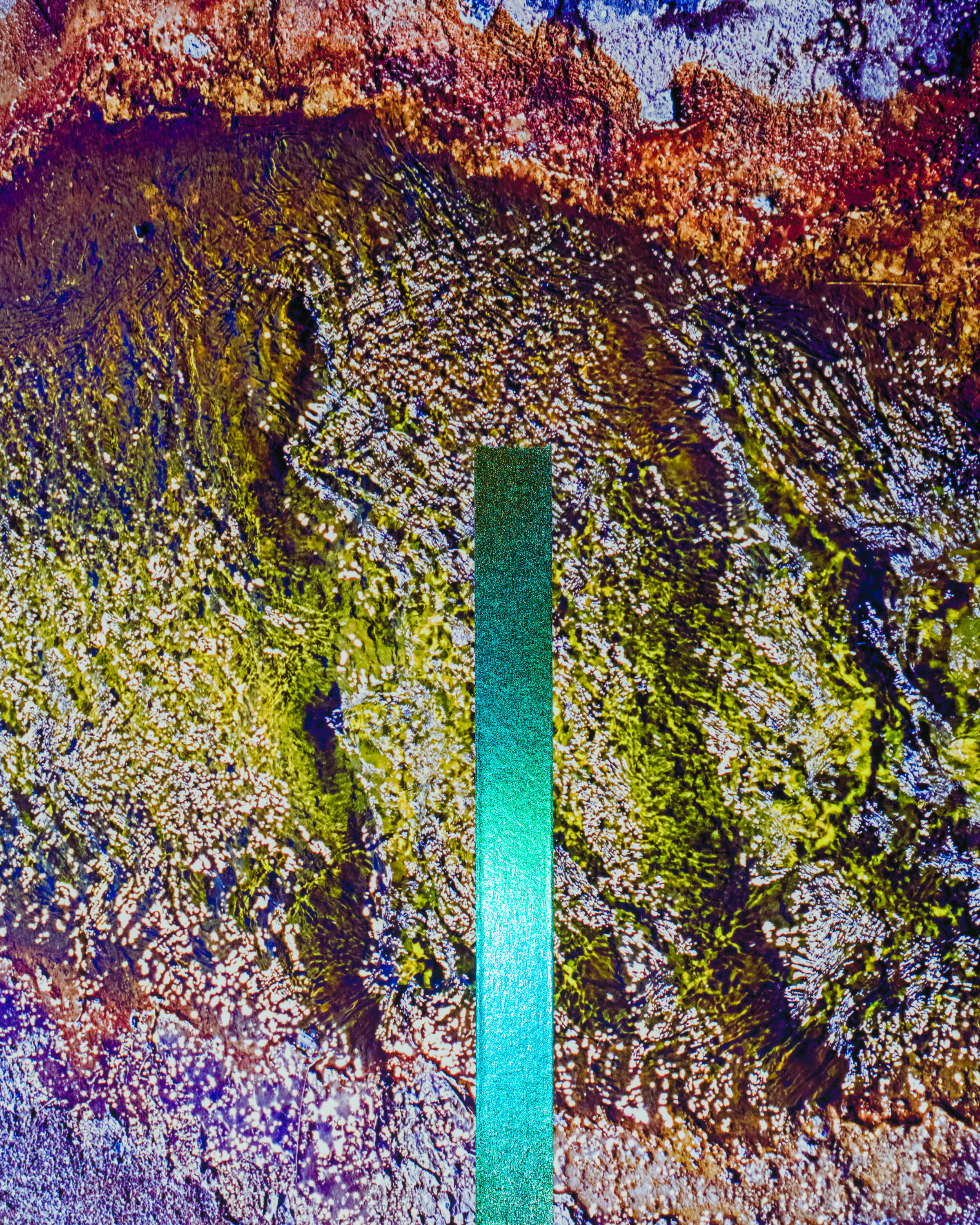
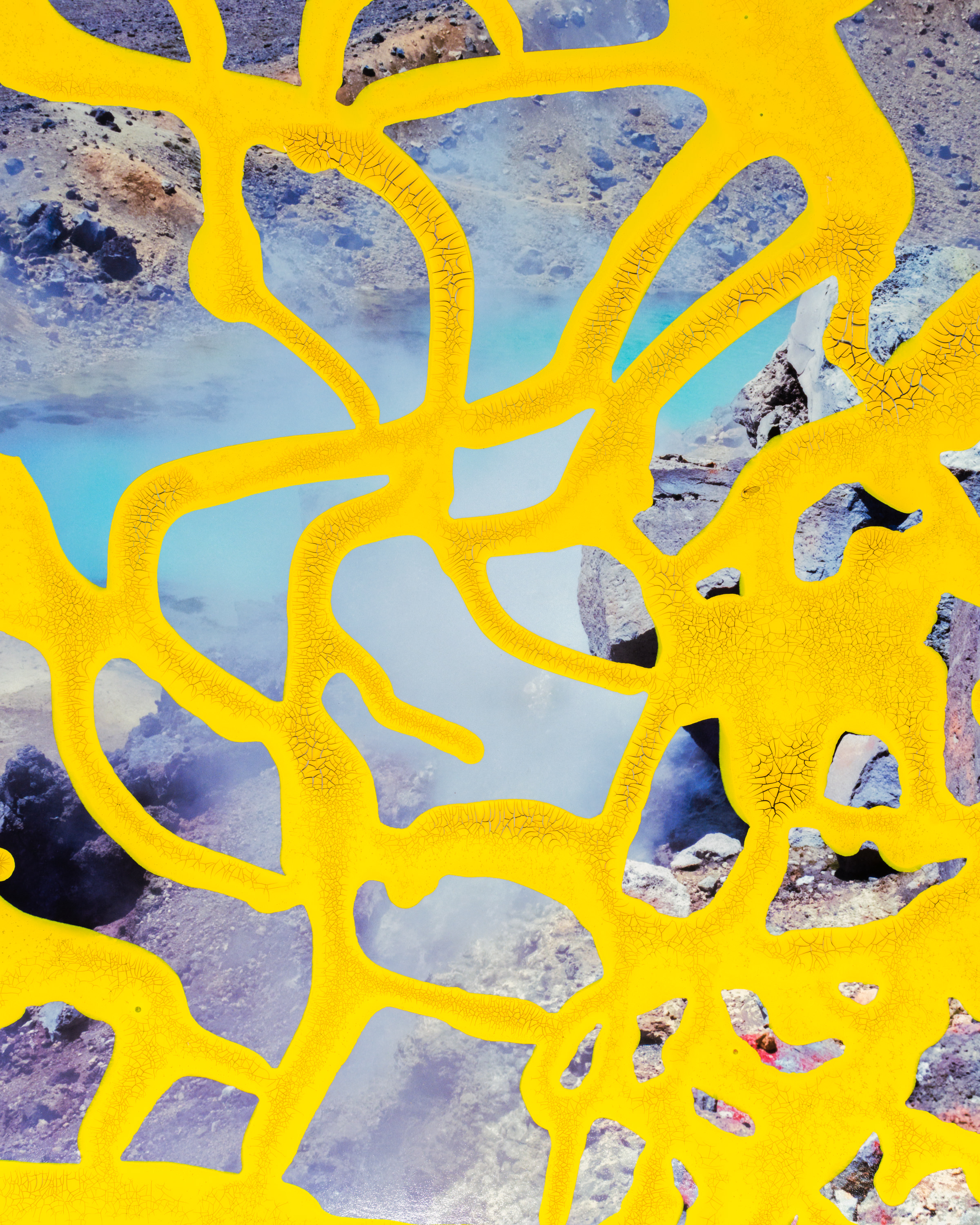
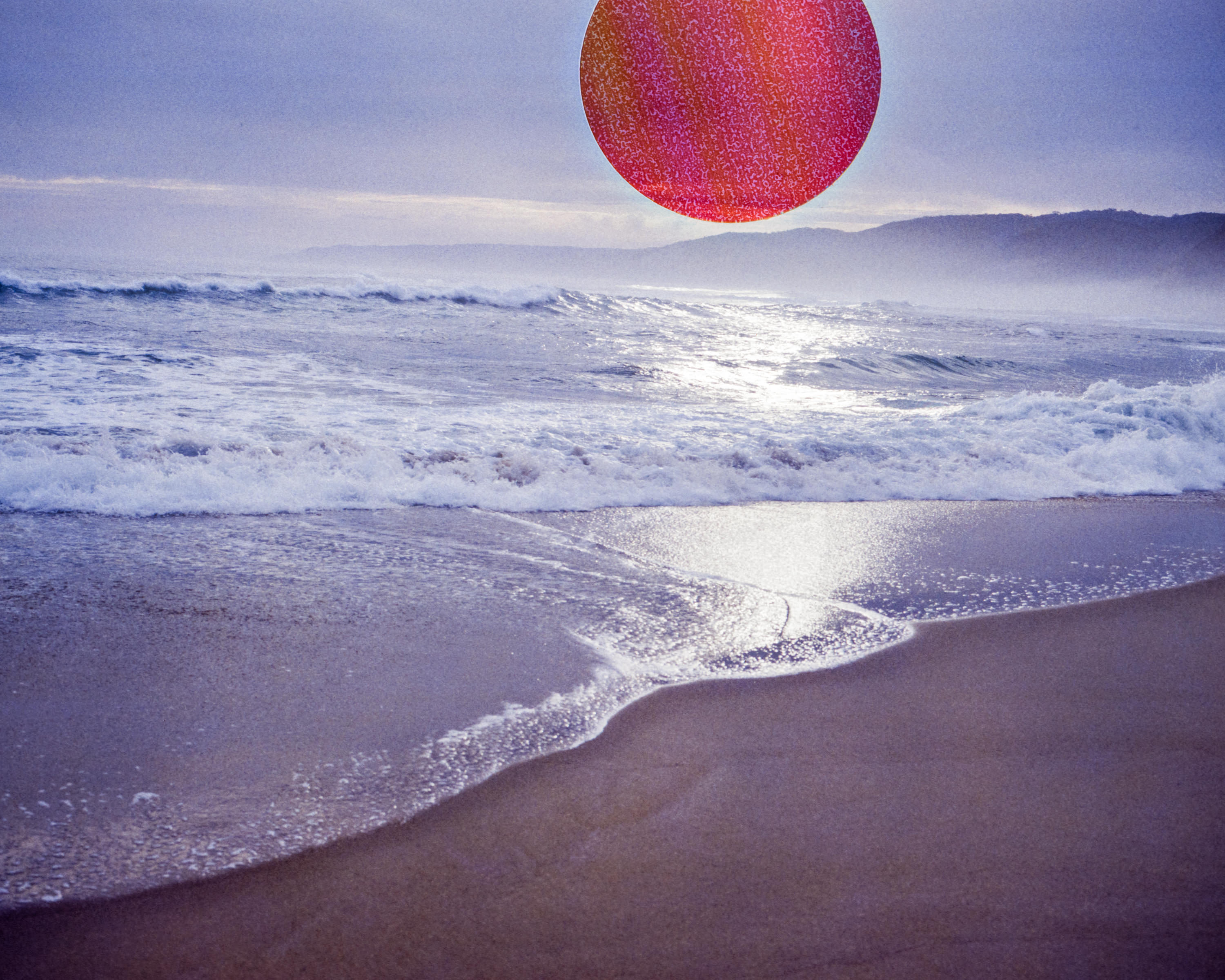
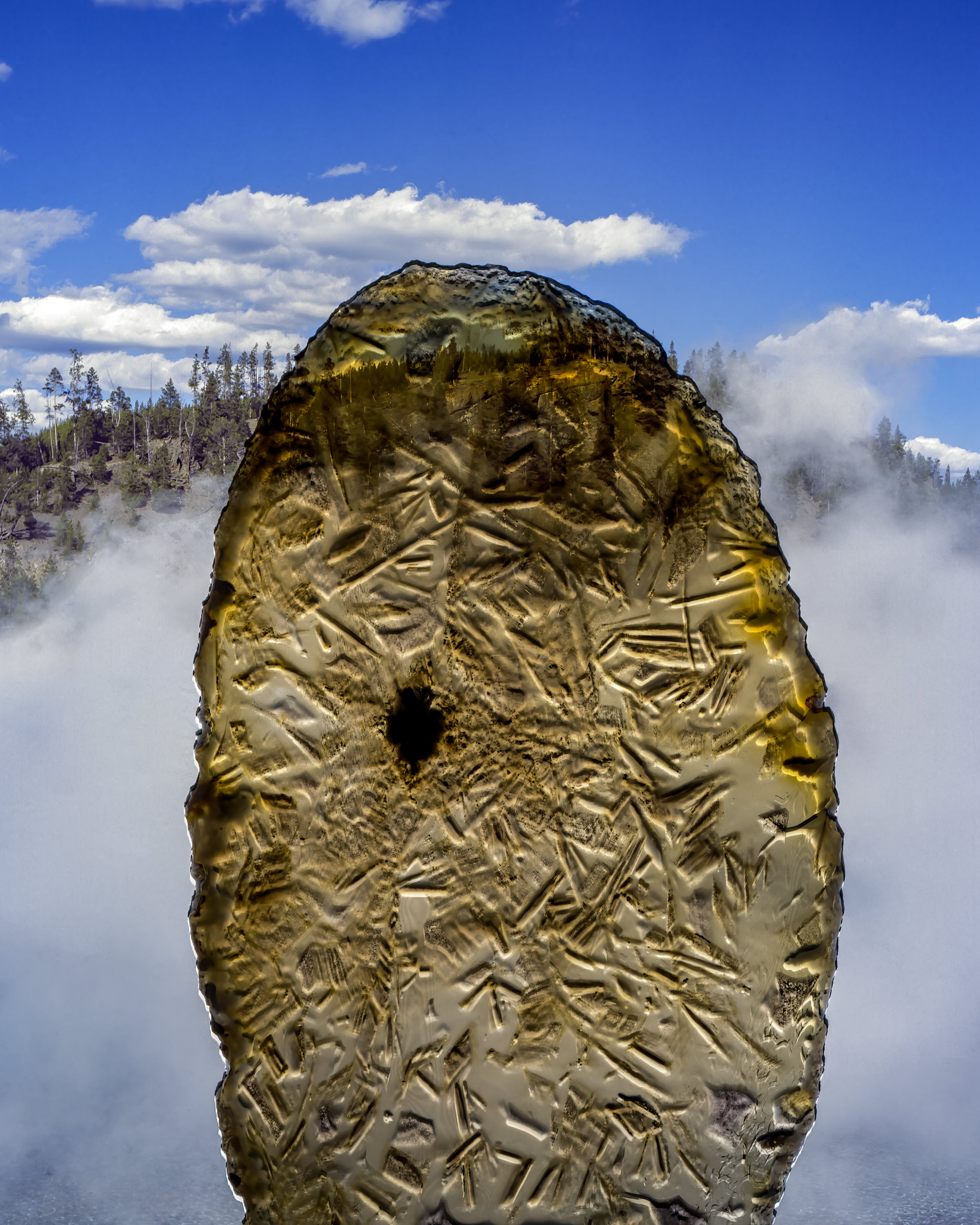
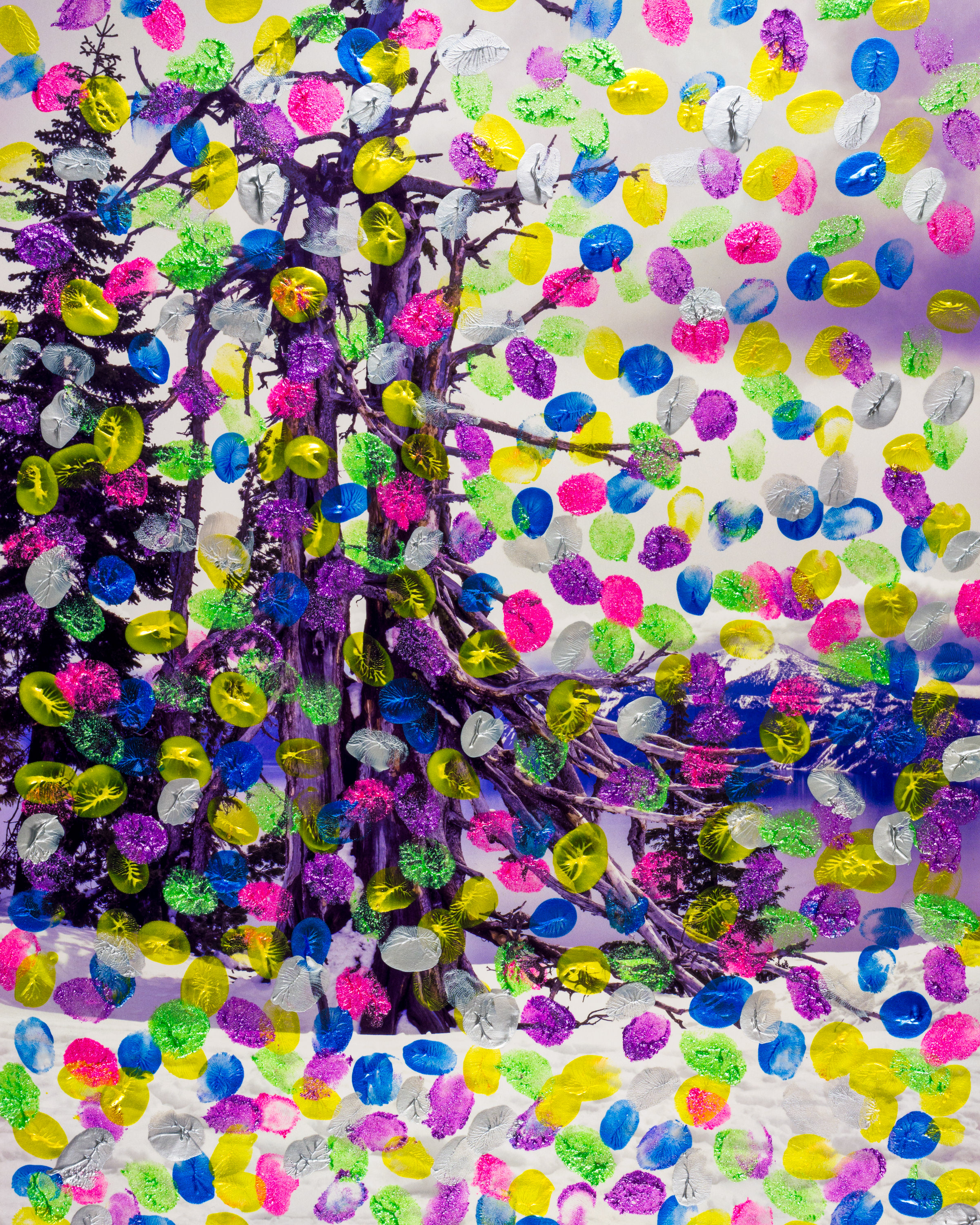
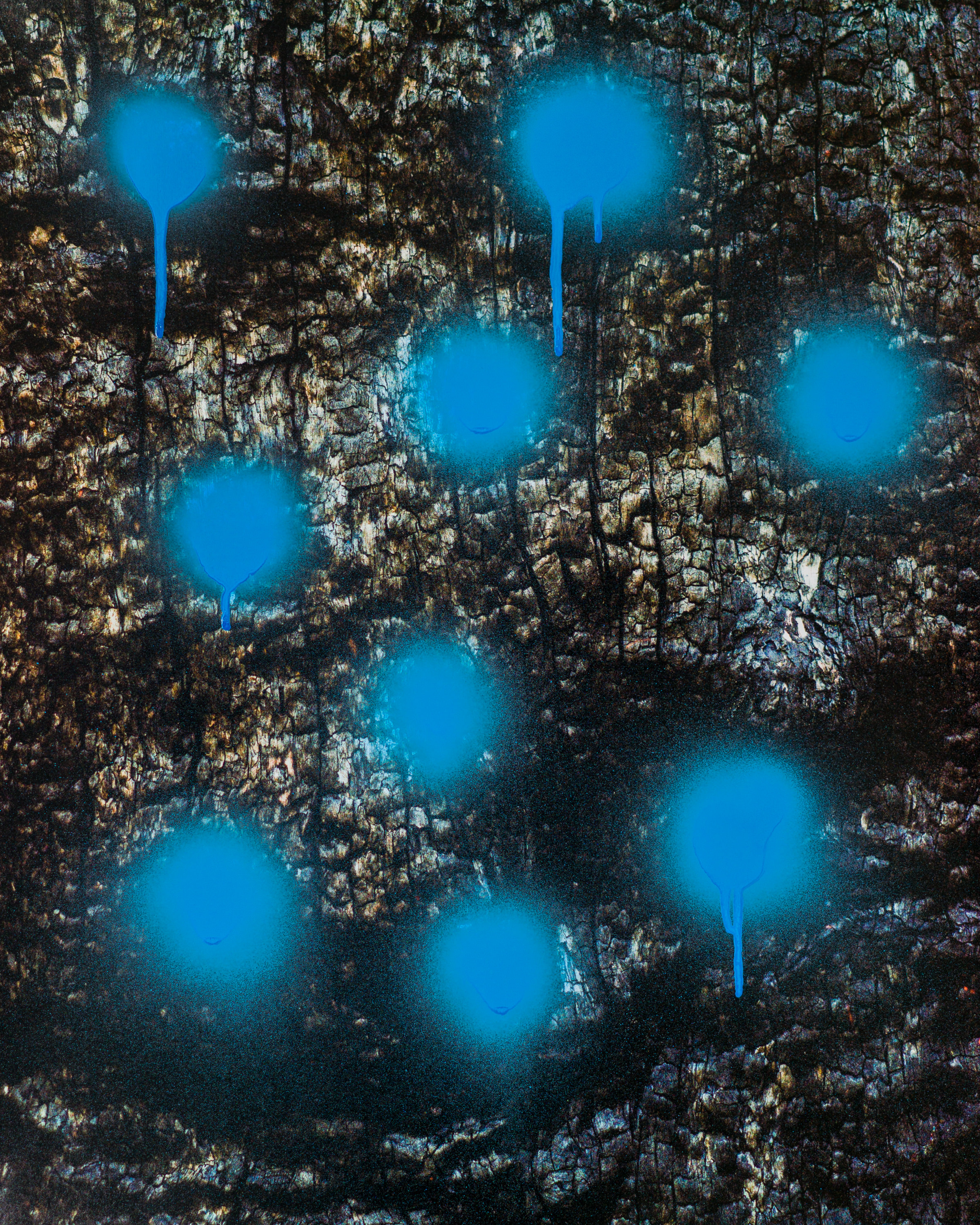

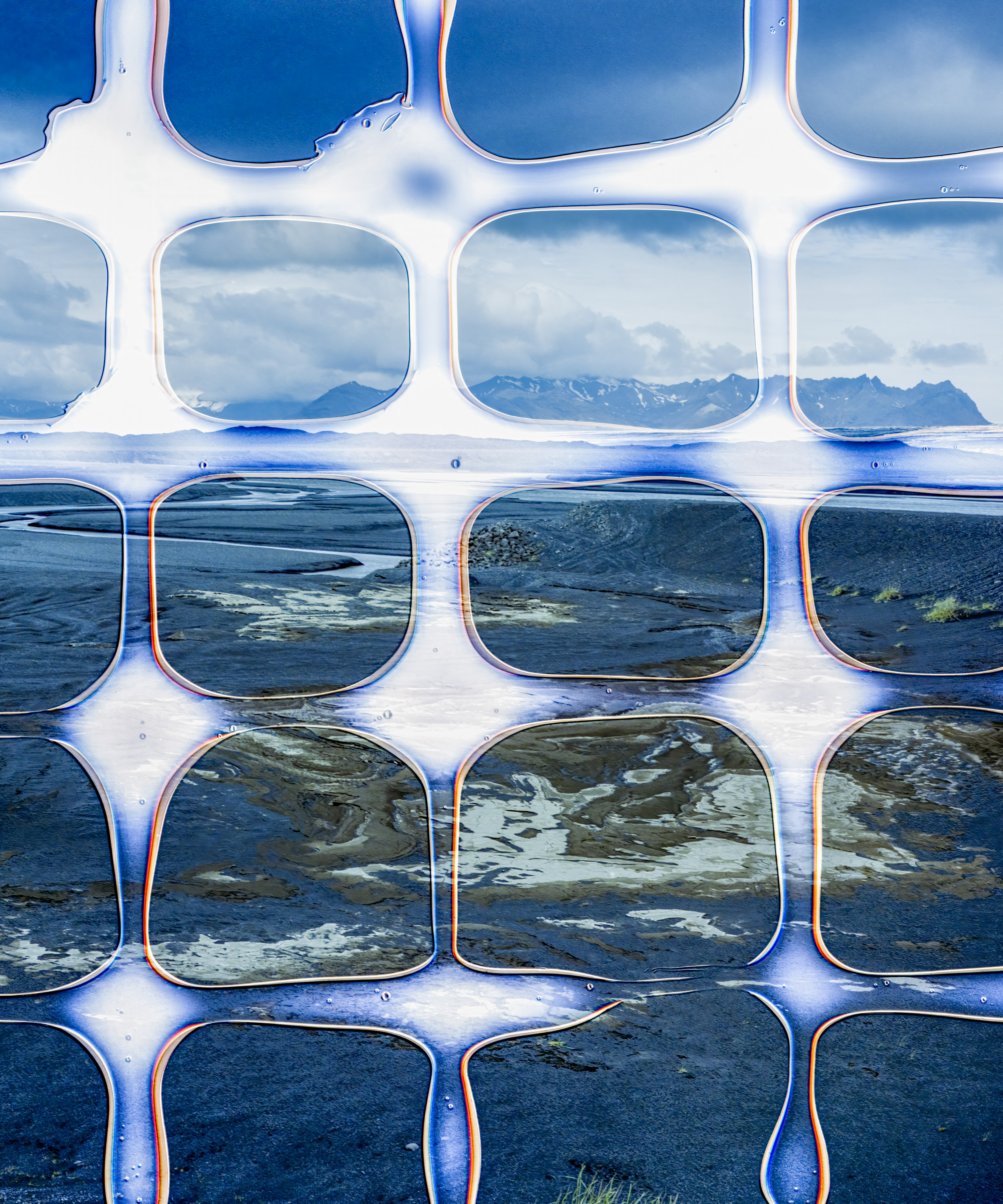
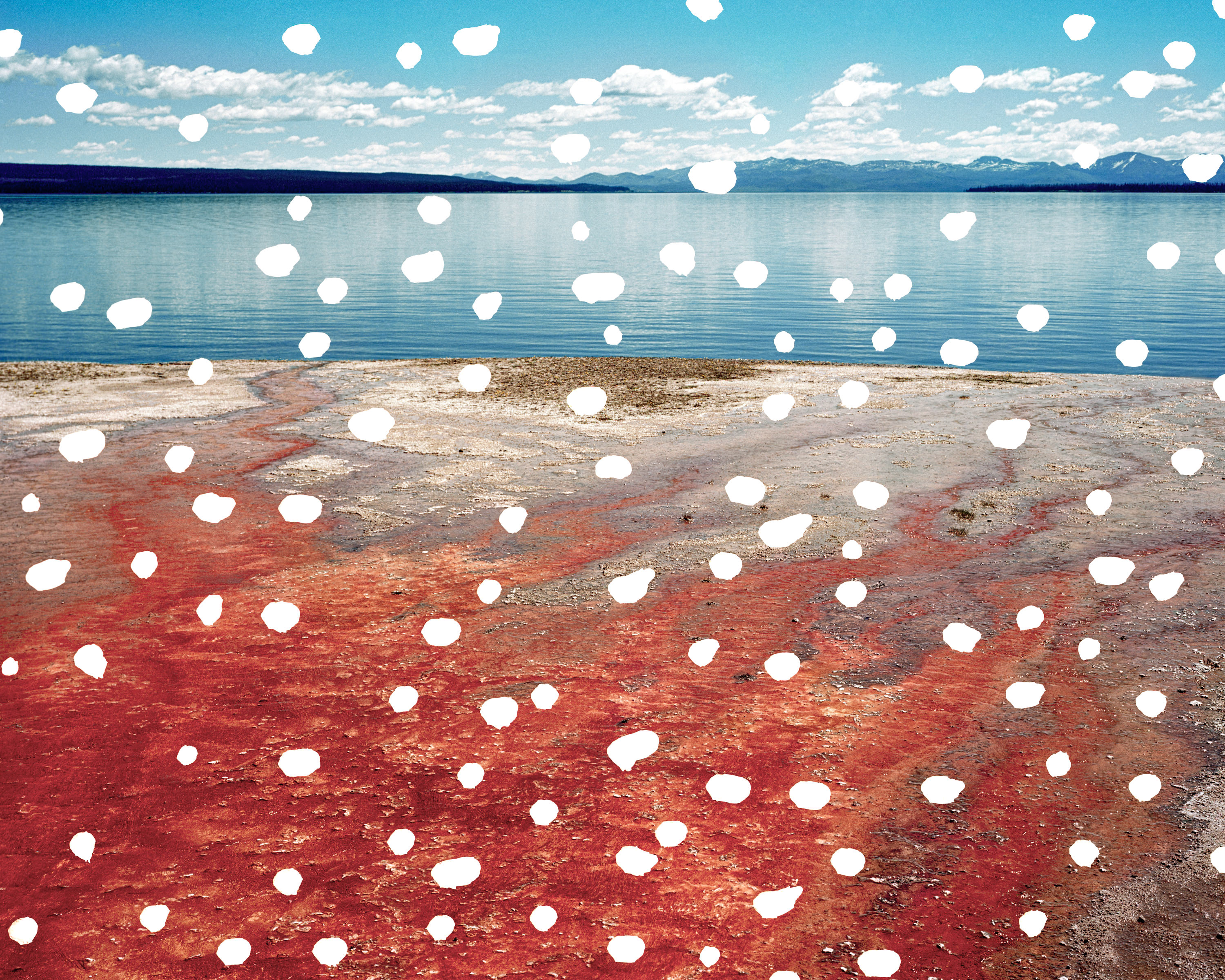
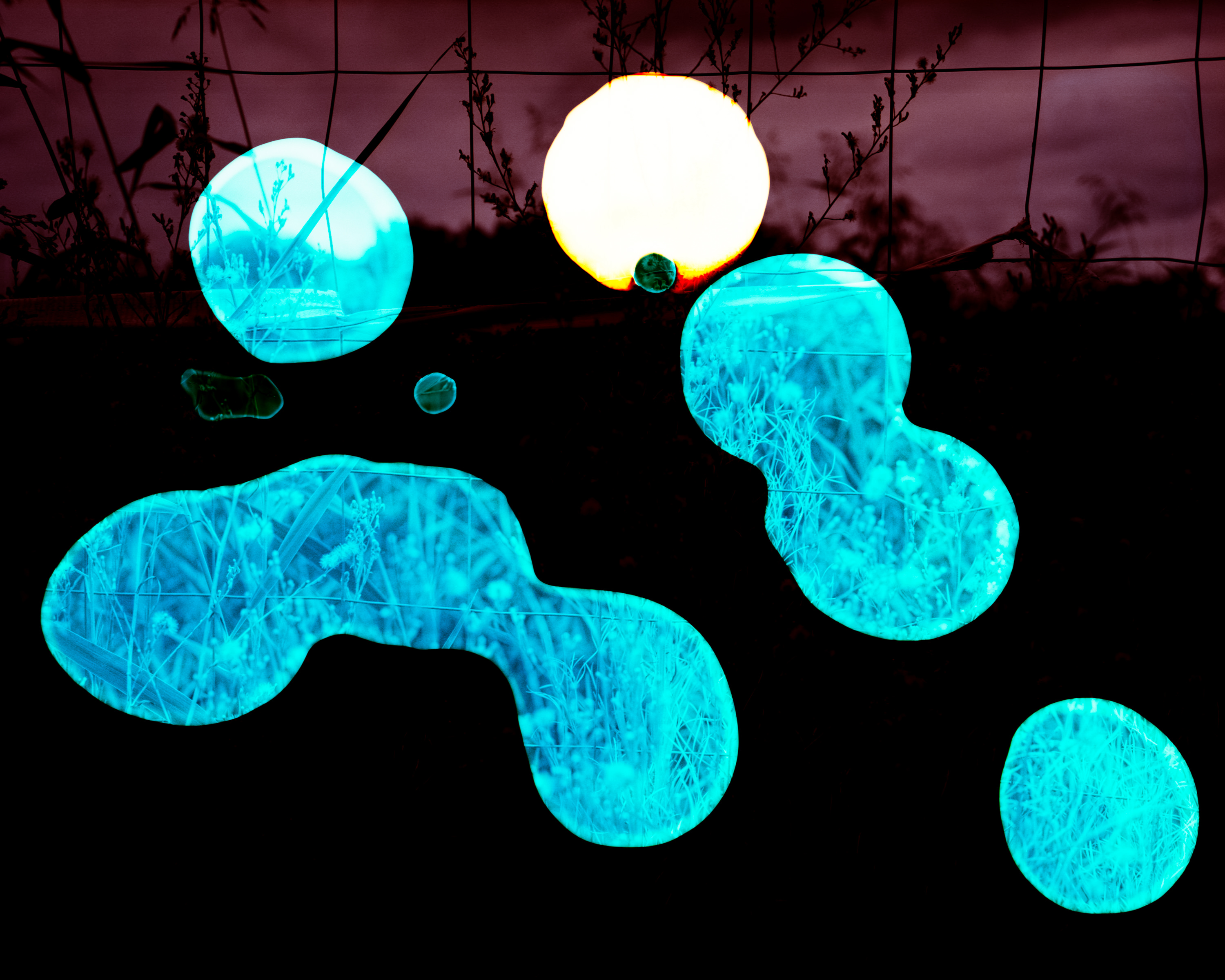
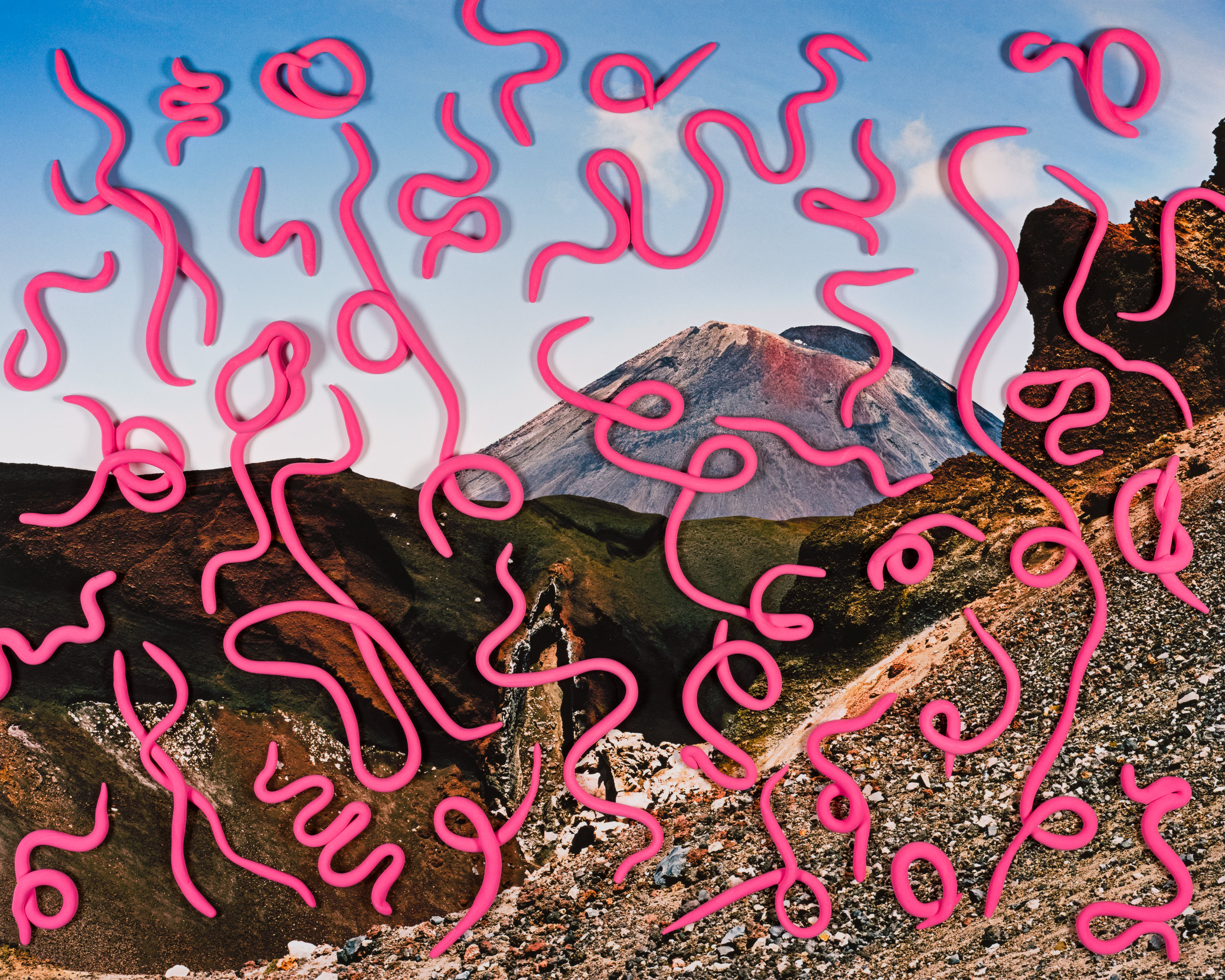
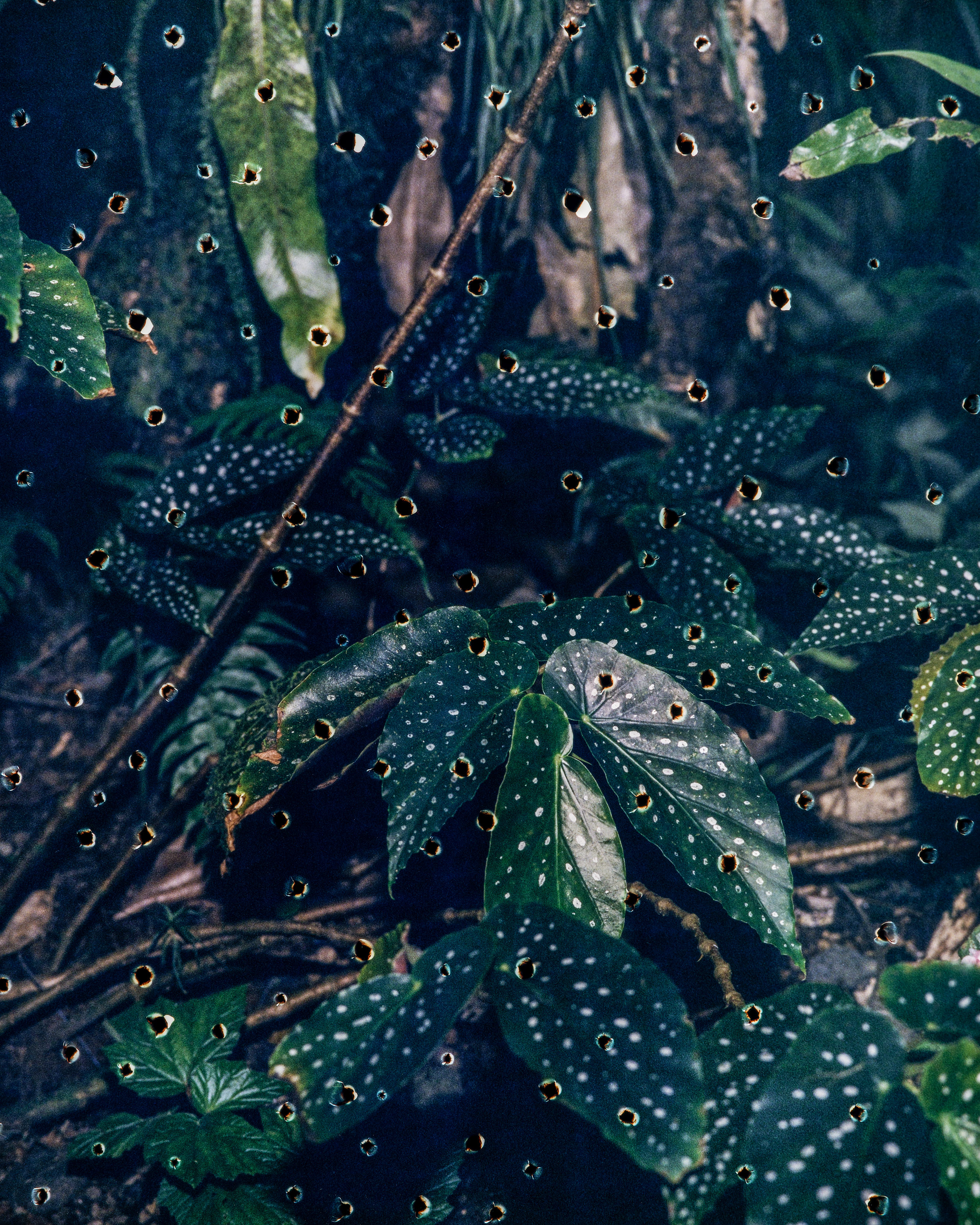
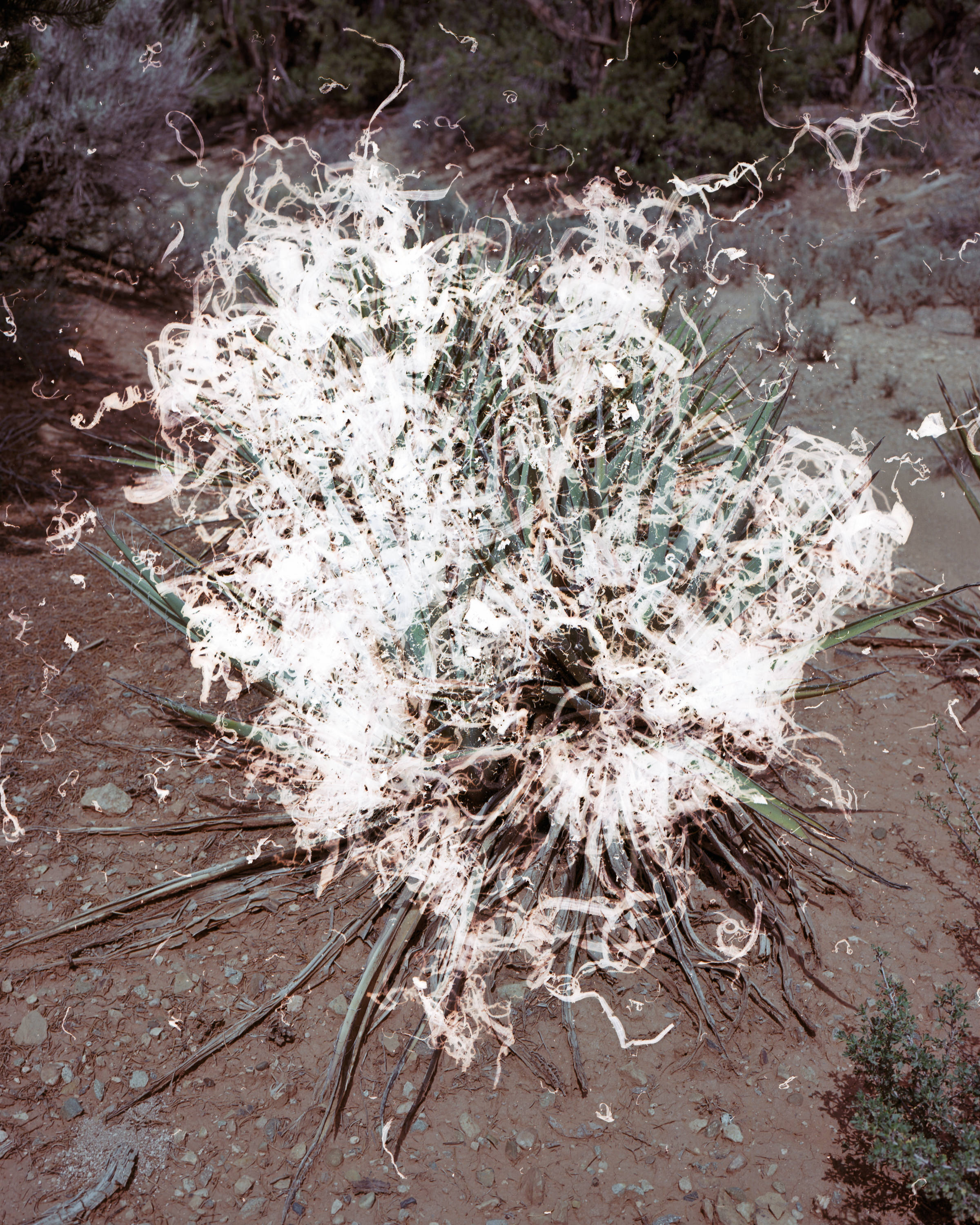
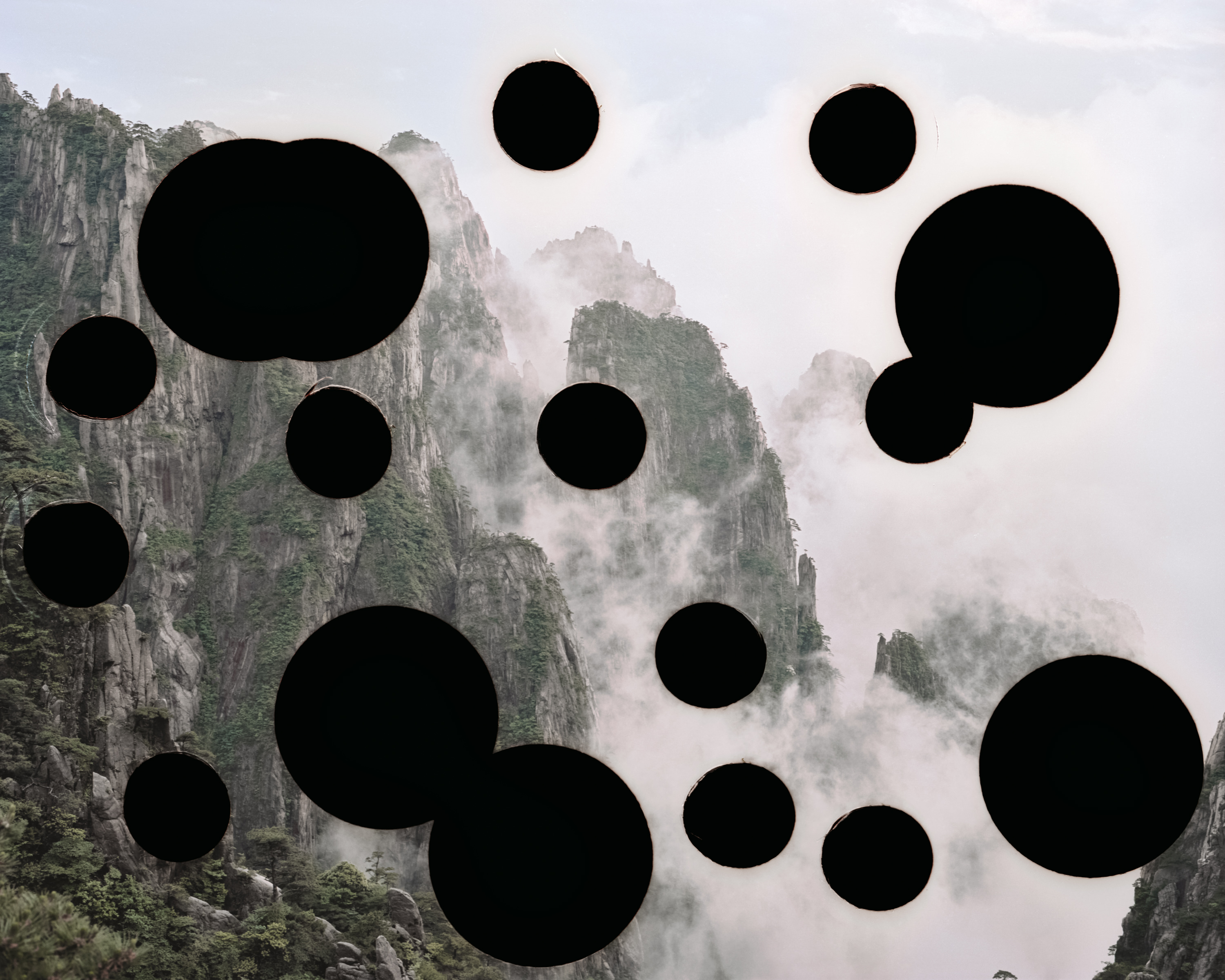
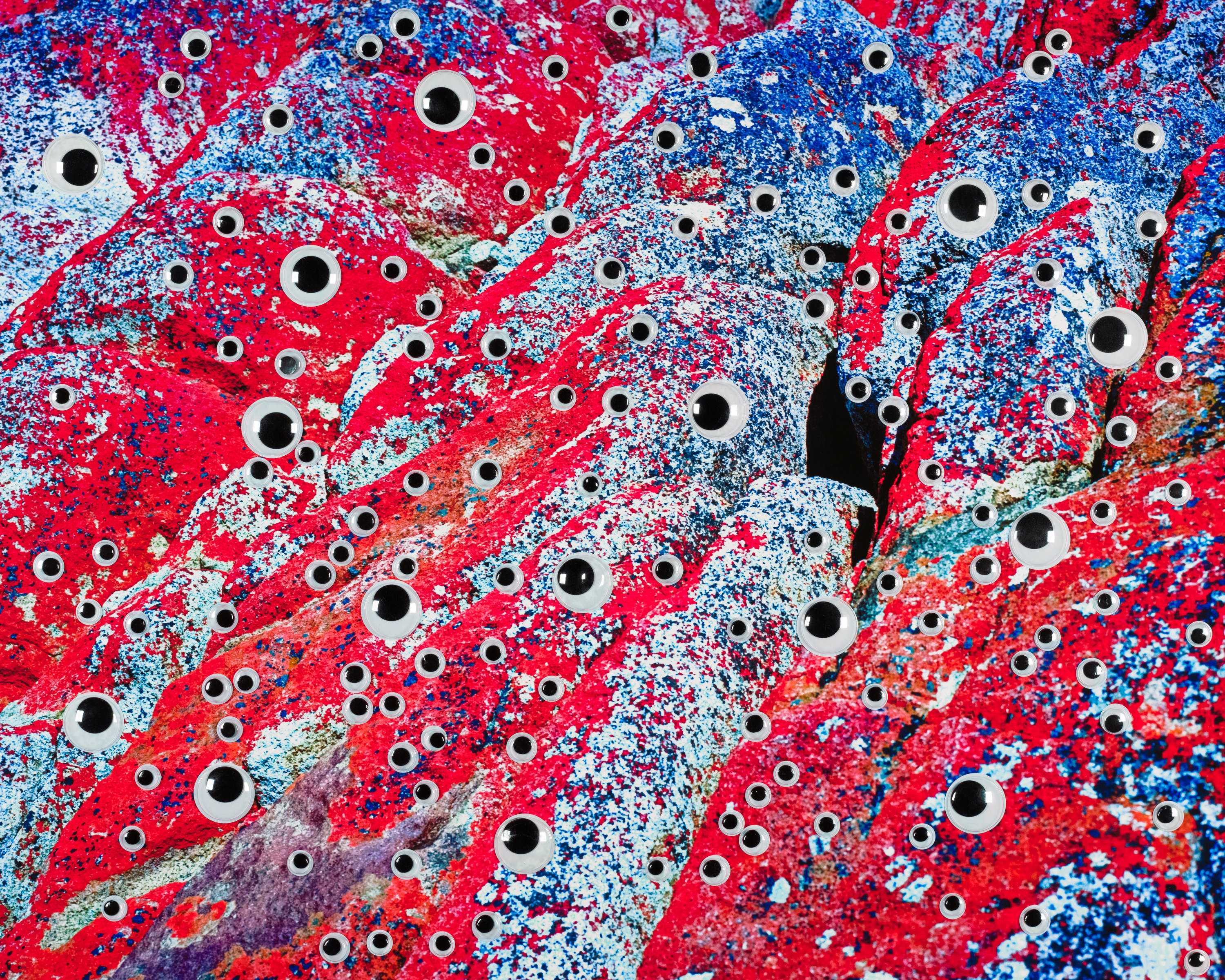
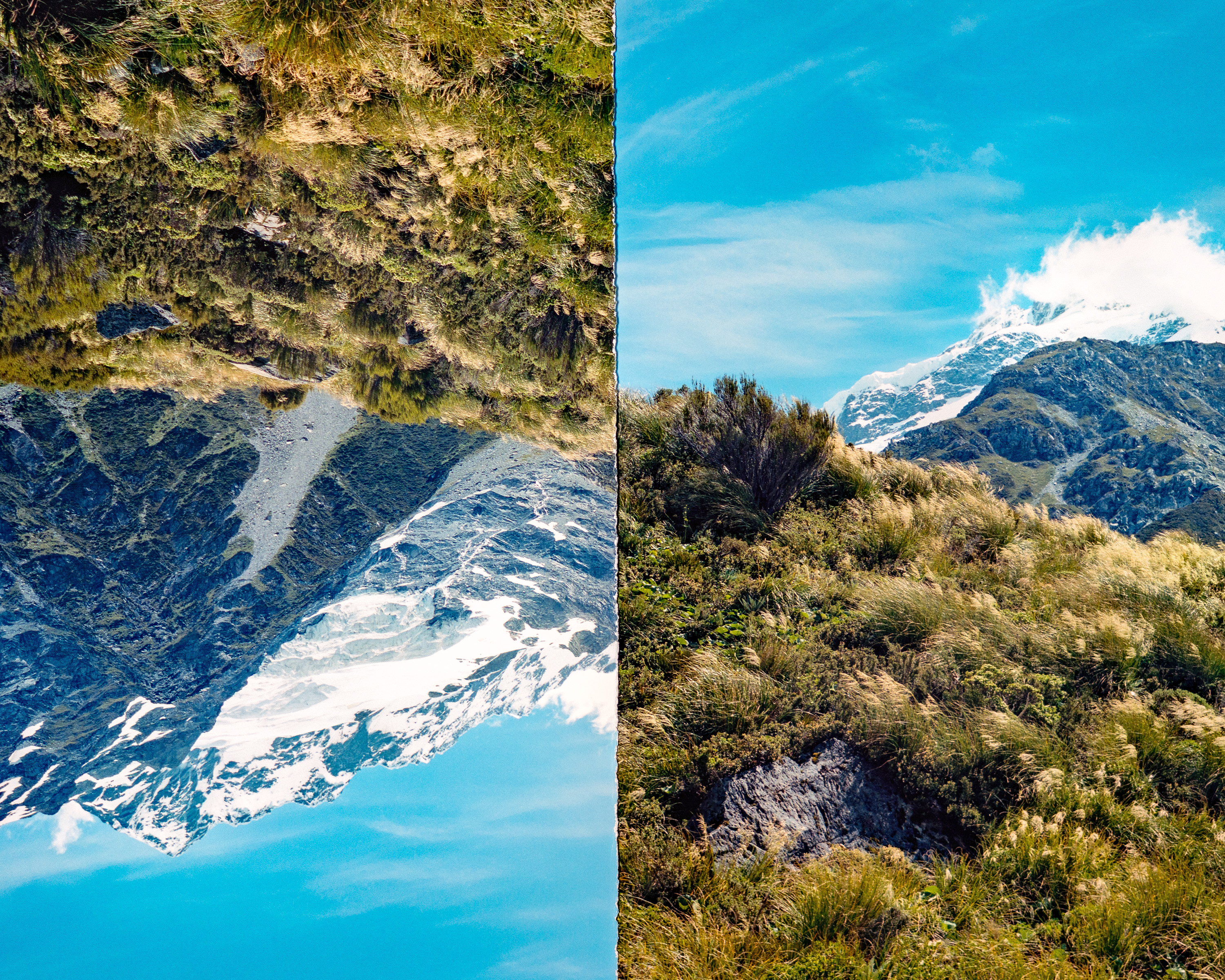
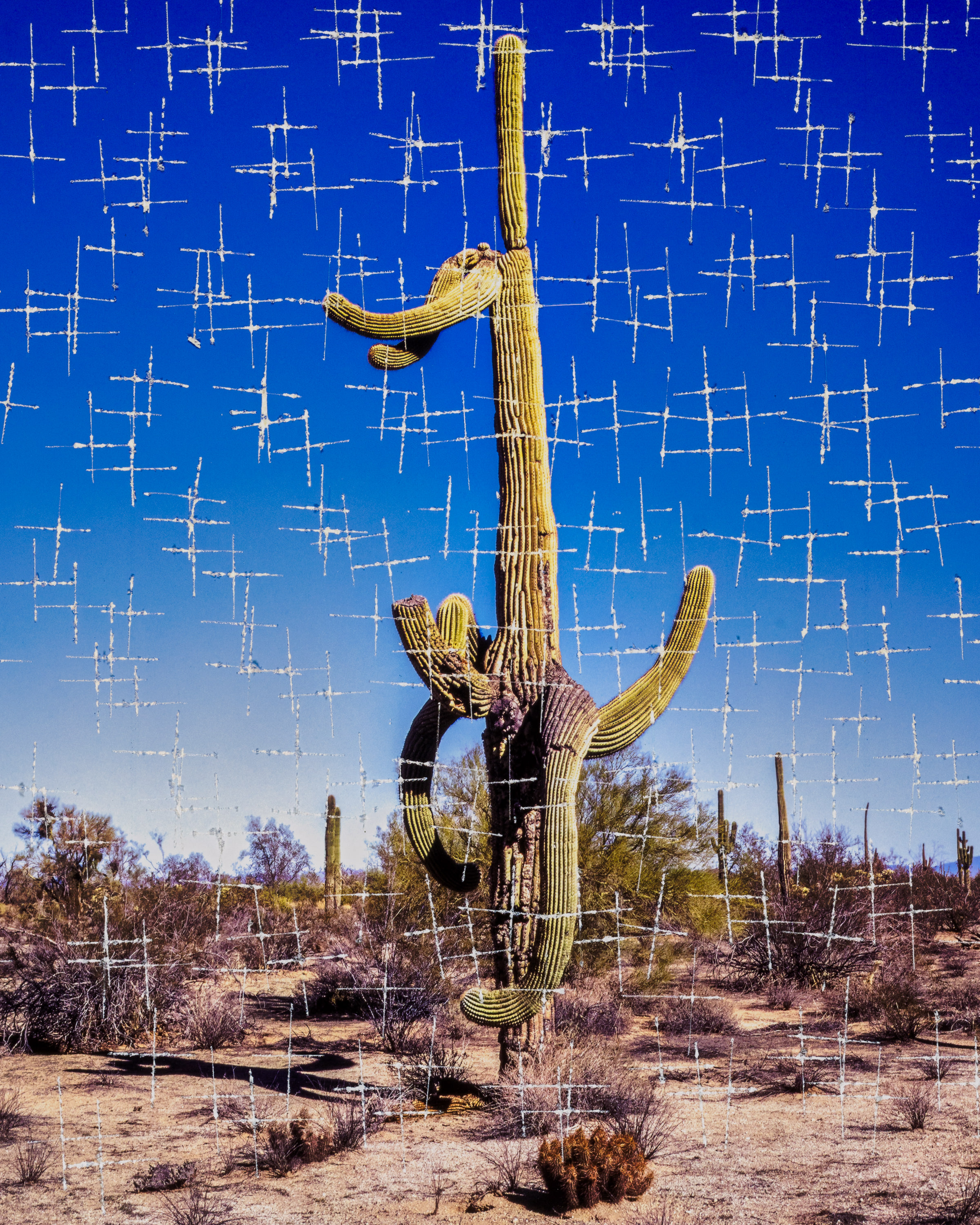

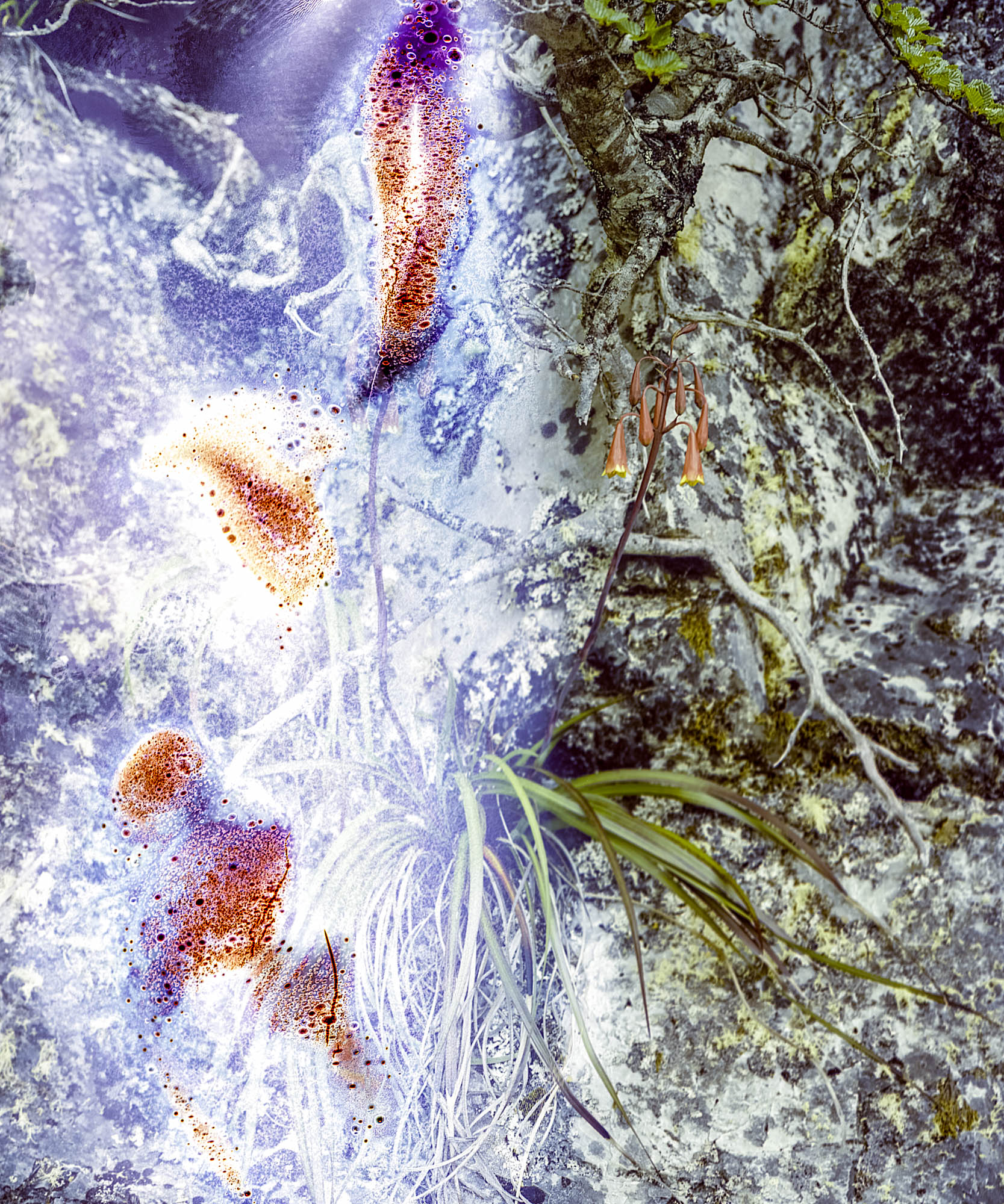

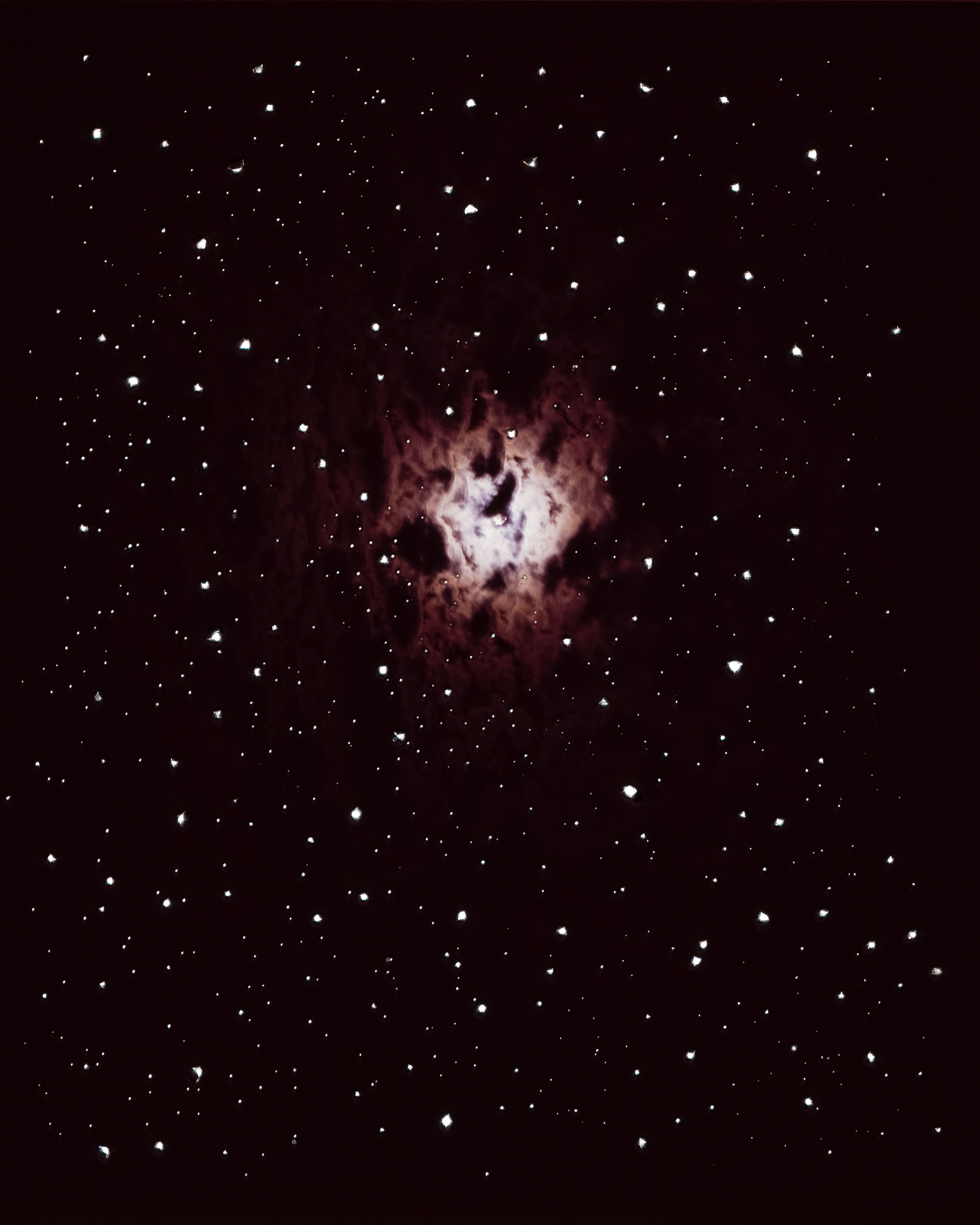
A selection of images from this series is available as editioned prints, 20 x 24 in and 42 x 50 in.
In 2023, Ambient Pressure was published as a photobook with Tall Poppy Press.
In 2023, Ambient Pressure was published as a photobook with Tall Poppy Press.
Ambient Pressure (Black Hole), 2020–, preview of looped video
Echo
2020 | digital 3D models from photogrammetry scans, digital video
(images link to manipulatable online artworks)
Generated from photogrammetric and depth scans of plants, Echo is a series of digital 3D objects whose botanical forms are riddled with flaws and information gaps. In order to explore the aesthetic and conceptual potential of digital thresholds, the project was made with a 3D scanner at the edge of viability in uncontrolled lighting conditions outdoors. Due to the intensity of light and the complex shape of plants, the scanner was unable to accurately convert the flora’s colors, forms, and textures into precise digital 3D models. The resulting artworks are digital botanical objects that carry with them visual glitches of their translation from physical to digital materiality. The photographic images depicting petals and grasses melt and blur. Other forms are missing structural information; as if eaten by insects, chunks of leaves are absent. These aesthetic aberrations are an expression of data’s instability, visual errors that expose the precariousness of representation within photomedia technologies.
Surfacing
2017-2018 | gelatin silver prints, chromogenic prints
Surfacing is a camera-less project that explores the materiality of photomedia and the potential for a new kind of landscape photography. These pictures are made ‘with’ rather than ‘of’ the environment by using natural phenomena as both the subject of and the means to create artworks. While landscape photography historically depicts scenery and implies distance, this project makes a direct connection between the forces of an environment and a photographic image. Created by exposing light-sensitive film and paper to geothermal activities and high-salinity environments, the series incorporates different approaches applied to both gelatin silver and chromogenic photo papers.


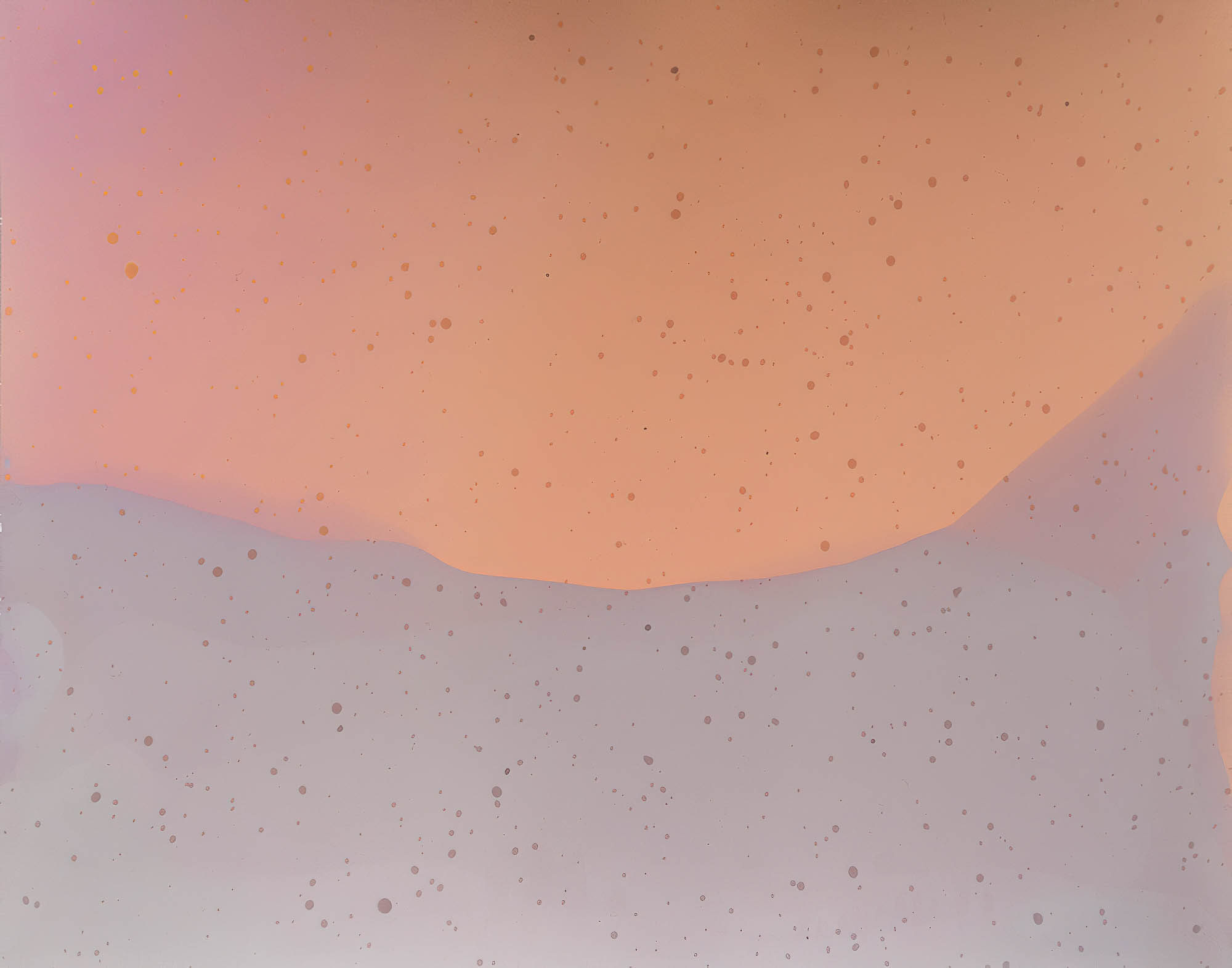





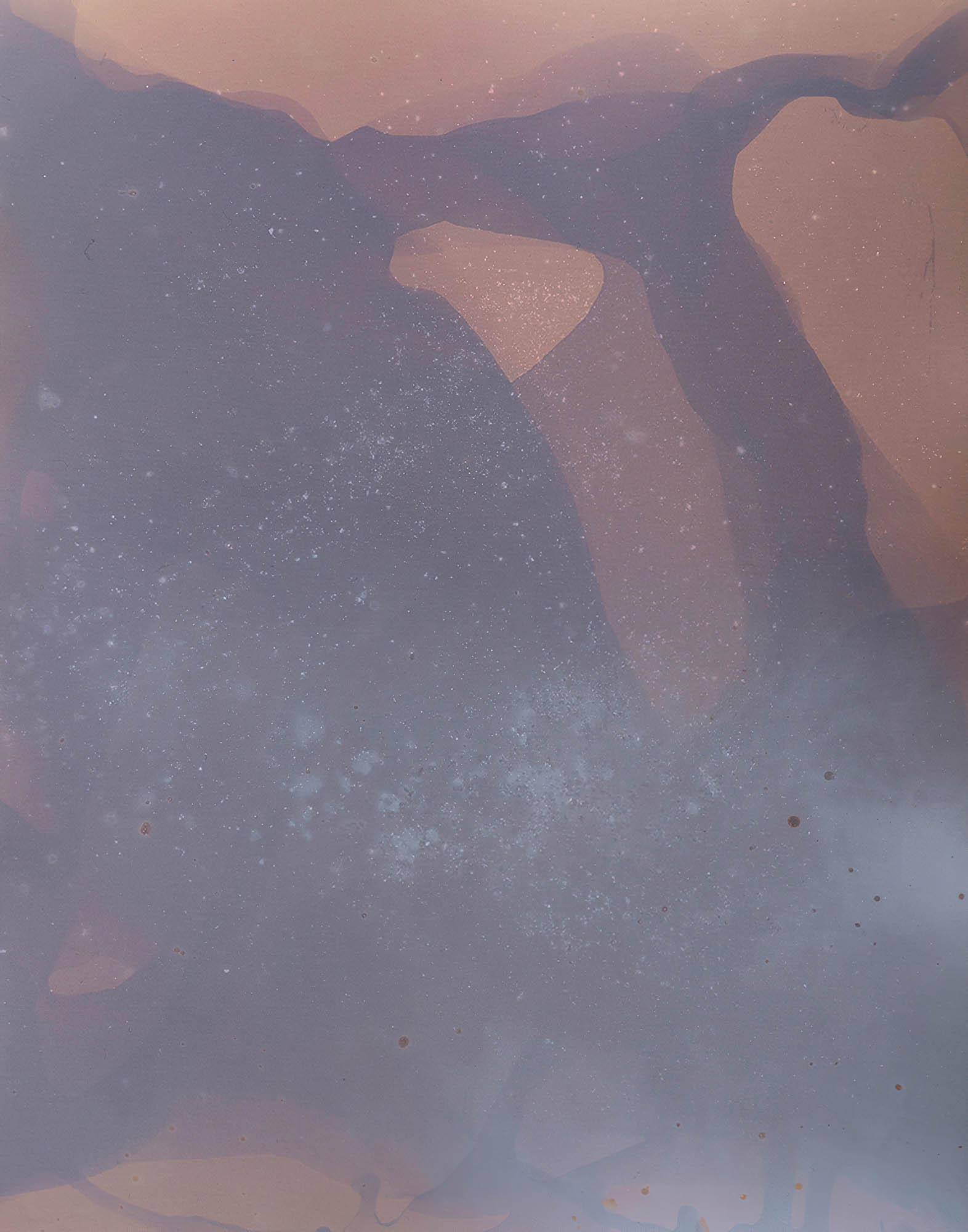
Surfacing (gelatin silver), gelatin silver paper, geothermal activity, approx. 28 x 35.5 cm (11 x 14 in) or 40.64 x 50.8 cm (16 x 20 in) each
In this first approach, silver gelatin photographic paper was physically exposed to geyser plumes and steam vents to create unpredictable forms and colours. Black and white gelatin silver darkroom paper reveals pink, grey, blue, purple, and orange forms that developed through correspondences between the silver particles suspended in gelatin on the surface of paper, the chemical and temperature composition of the geothermal features, the UV rays from the sun, and the duration of contact.
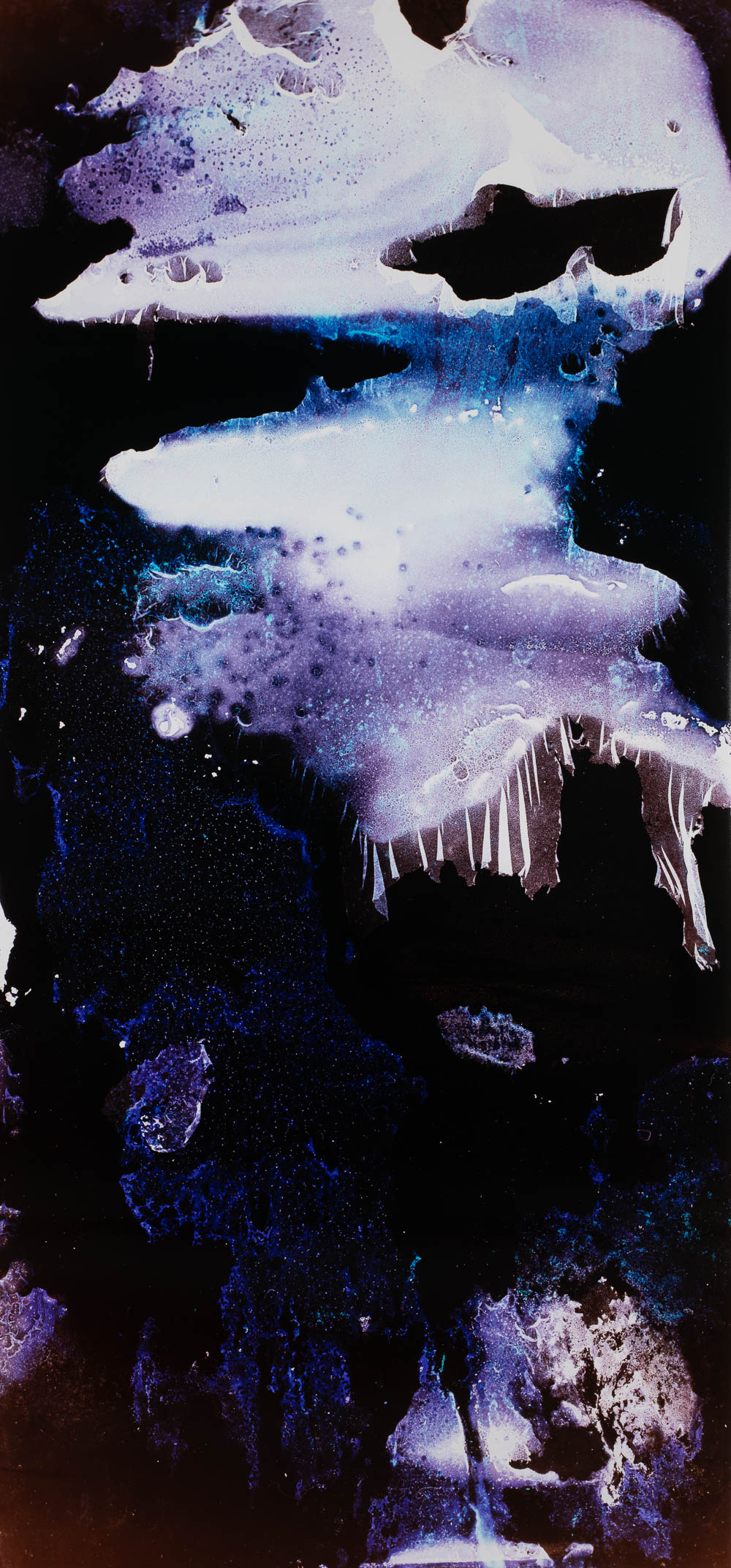
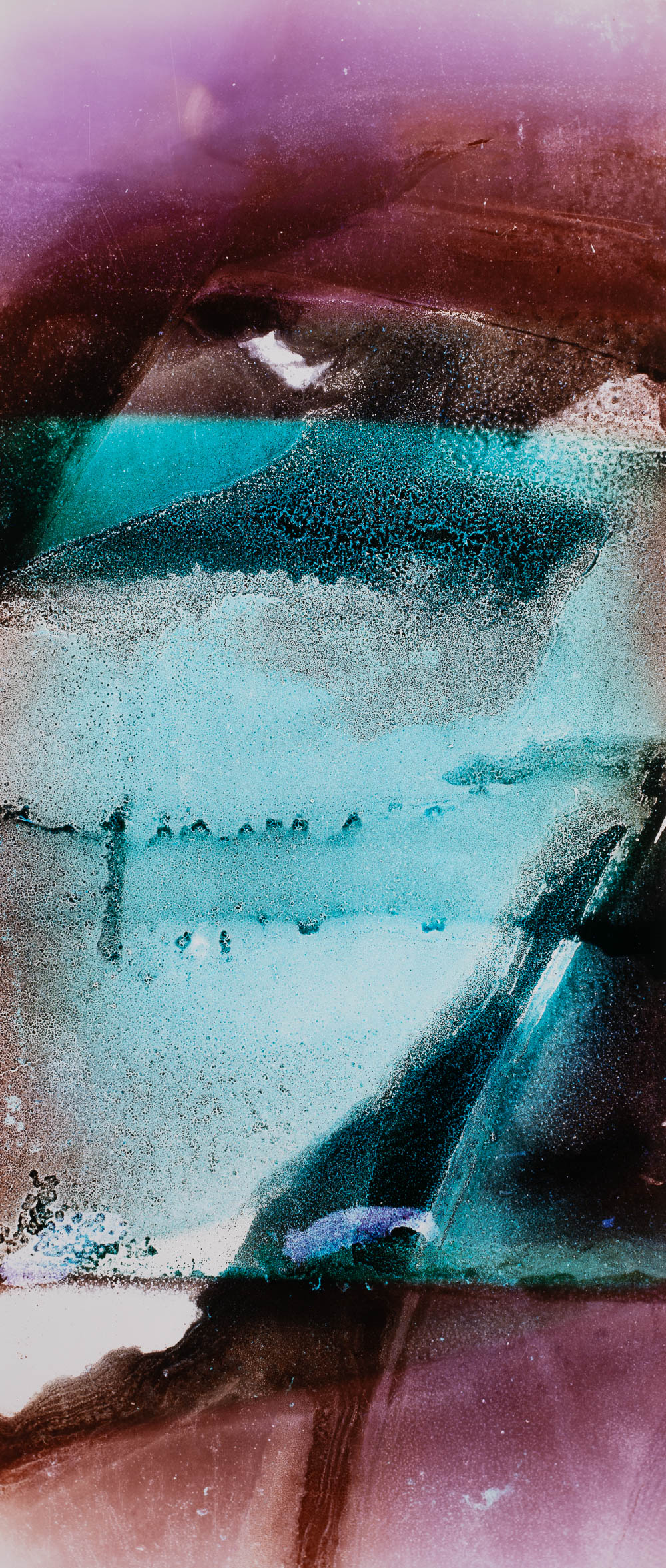


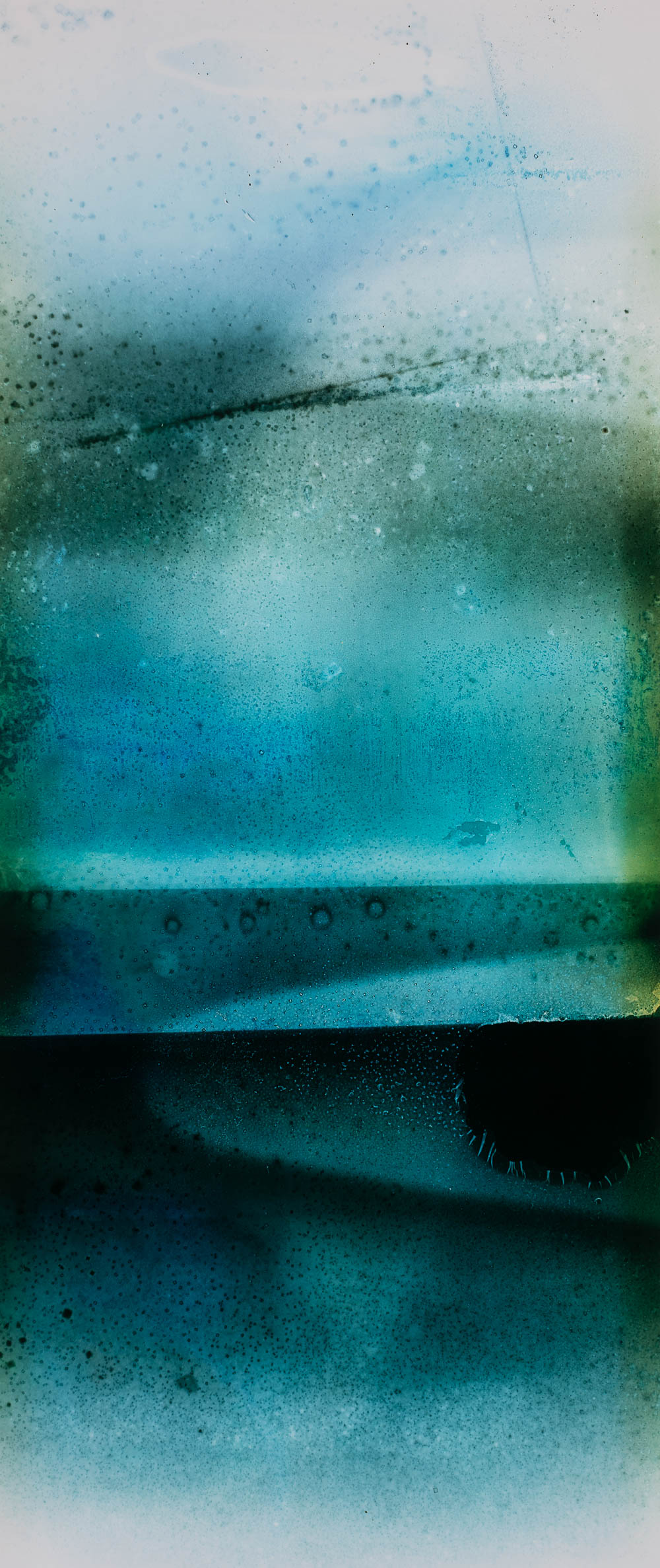
Surfacing (chromogenic), printed from photographic film submerged in salt and algae laden lake water approx. 101.6 x 213 cm to 101.6 x 228.6 cm (40 x 85 to 40 x 90 in)
For Surfacing (chromogenic), photographic film was submerged in lake water laden with salt, algae, and bacteria for months on end. Large prints on chromogenic paper were then made in the darkroom from these ‘environmental’ negatives. Instead of imaging the instantaneous photographic moment, a more earthly time emerged on the film. Salt crystals formed and the emulsion began to break down. The aim of these approaches was to generate images that resonate with aspects of the earth like minerals, time, and transformation.
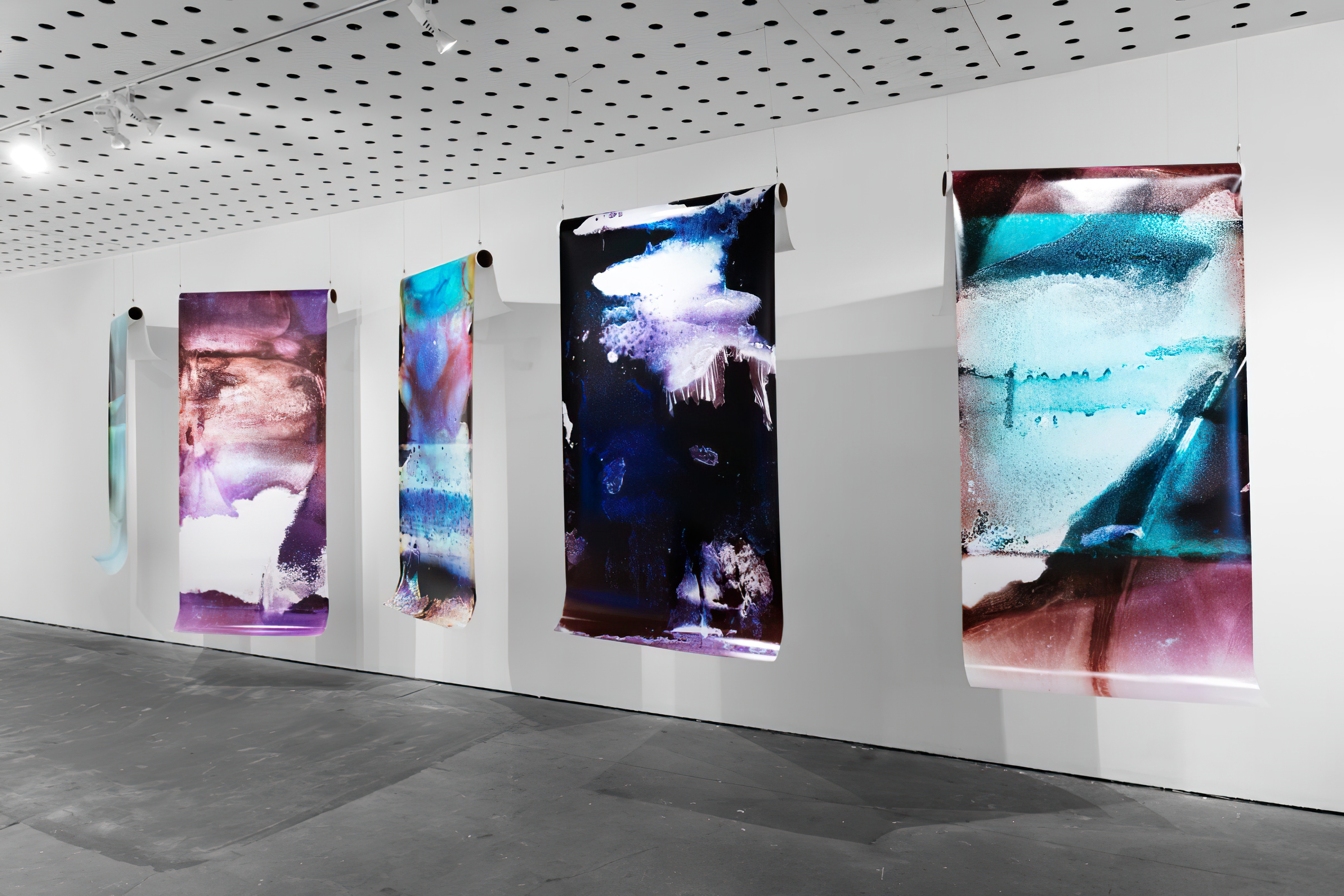
Surfacing (Chromogenic) exhibited at the Centre for Contemporary Photography, Melbourne, Australia
Photo Credit: Hannah Nikkelson
The Image Looks Back
2021 | curated exhibition at RMIT Art Gallery, Melbourne, Australia | part of PHOTO2021 | co-curated with Alison Bennett, Shane Hulbert, and Daniel Palmer
If the photograph has conventionally been understood as a record or memory of the world, what happens when the image looks back? Thirty years after the commercial release of photo-imaging software such as Photoshop, this exhibition explores the reconfiguration of photography in the context of algorithmic processes, machine vision and networked circulation. It features responses by Australian and international artists, photographers and technologists, each speculating on the social and political ramifications of these profound changes in the ecology of the image. The exhibition asks how notions of visual truth and human experience are shaped by new technologies of vision.
The exhibition catalog can be found here and the virtual version of the exhibition here.
Participating artists:
Jacqueline Felstead
Joan Fontcuberta
Forensic Architecture
Mike Gray
Joe Hamilton
Thomas Hirschhorn
Rhonda Holberton
Fei Jun
Amalia Lindo
Rosa Menkman
Tyler Payne
Joachim Schmid
Winnie Soon
Queertech.io
Jacqueline Felstead
Joan Fontcuberta
Forensic Architecture
Mike Gray
Joe Hamilton
Thomas Hirschhorn
Rhonda Holberton
Fei Jun
Amalia Lindo
Rosa Menkman
Tyler Payne
Joachim Schmid
Winnie Soon
Queertech.io
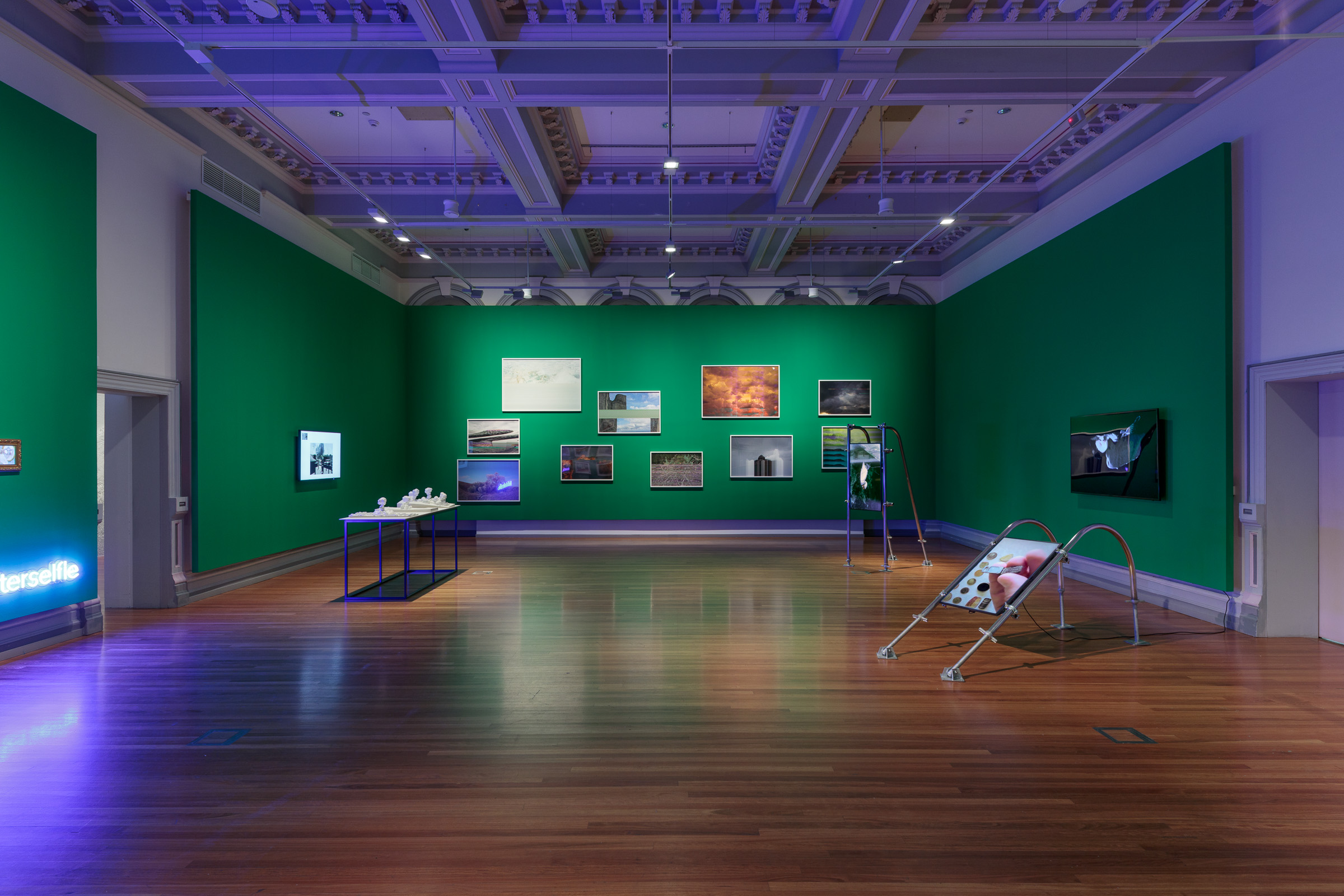
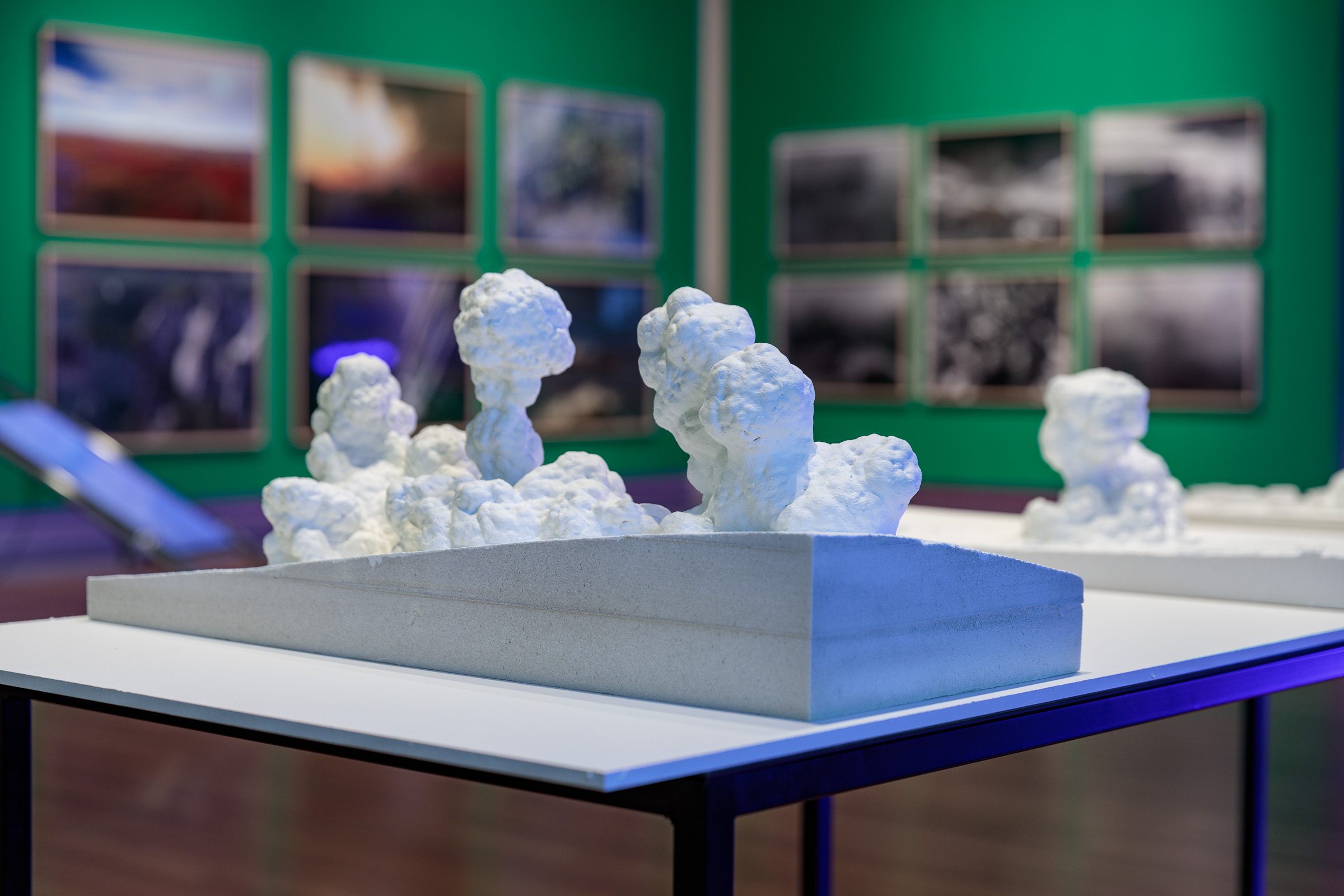

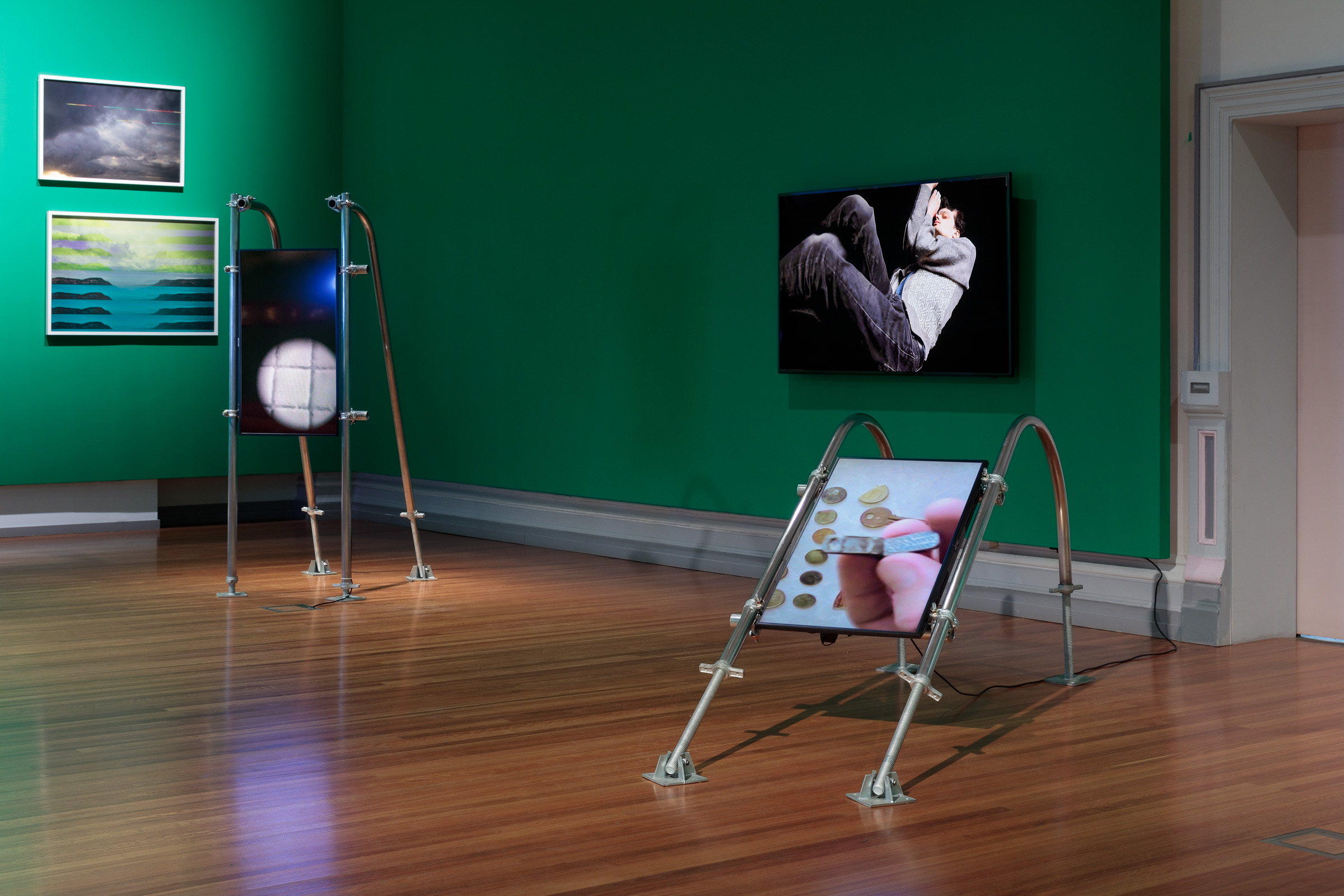
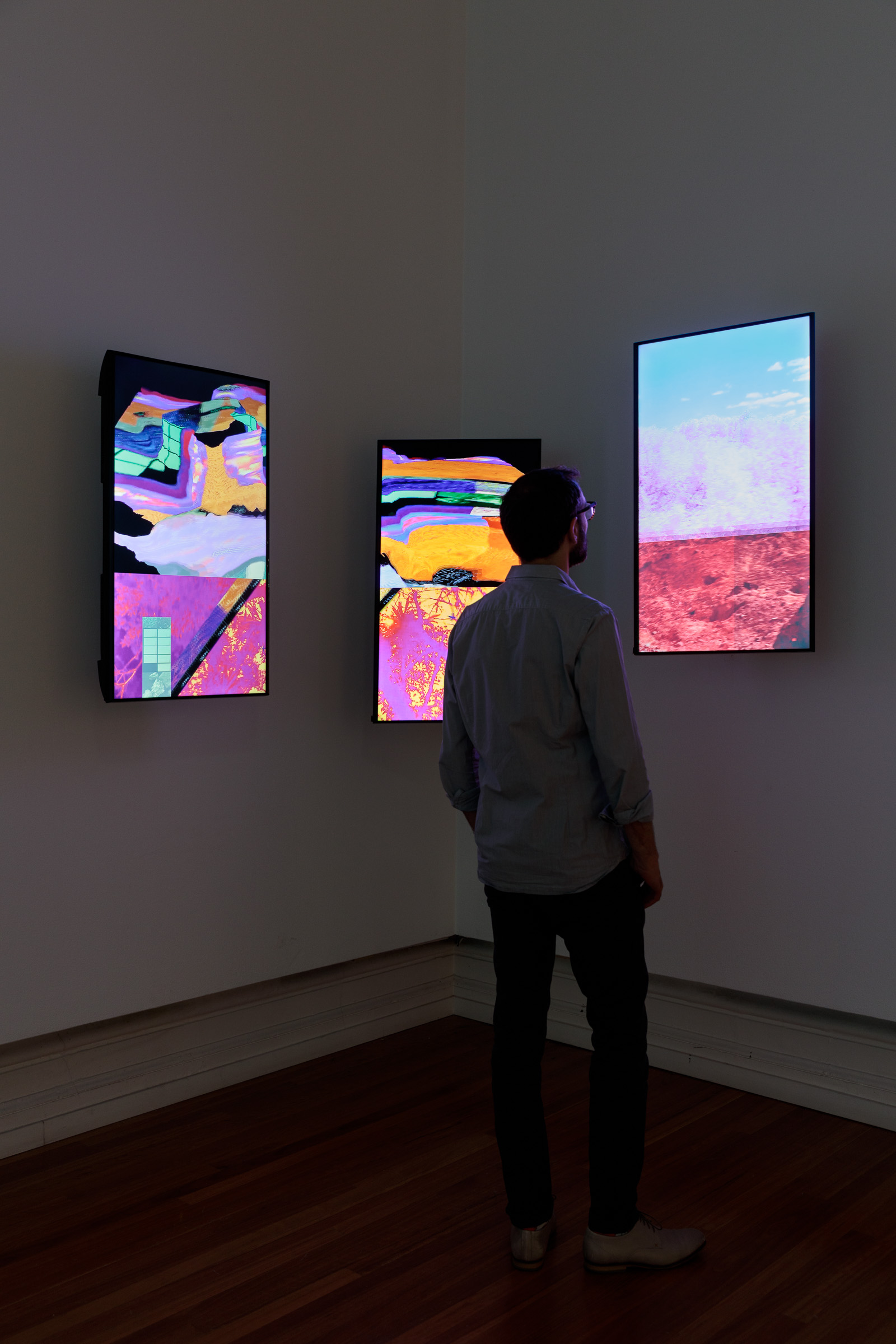
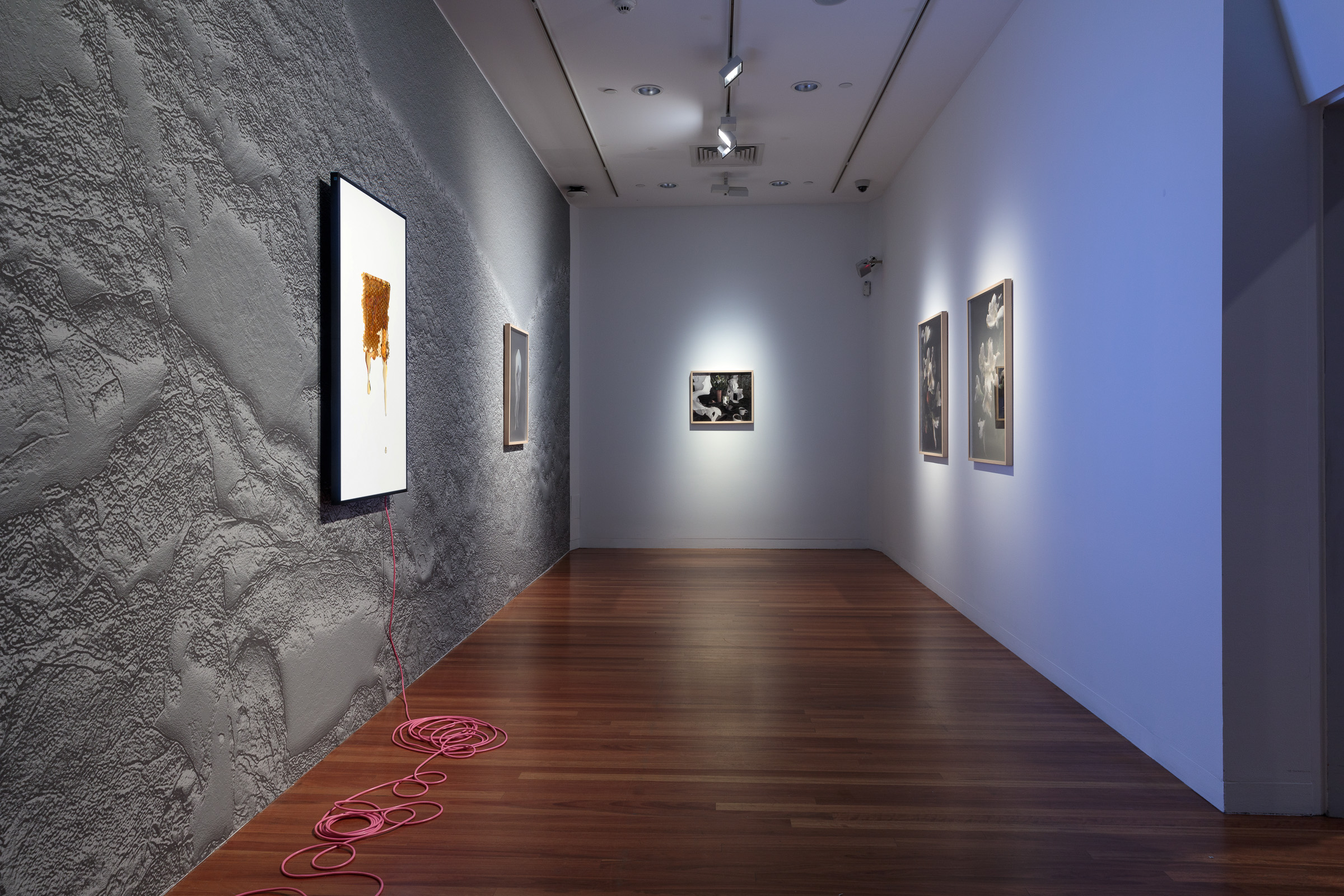
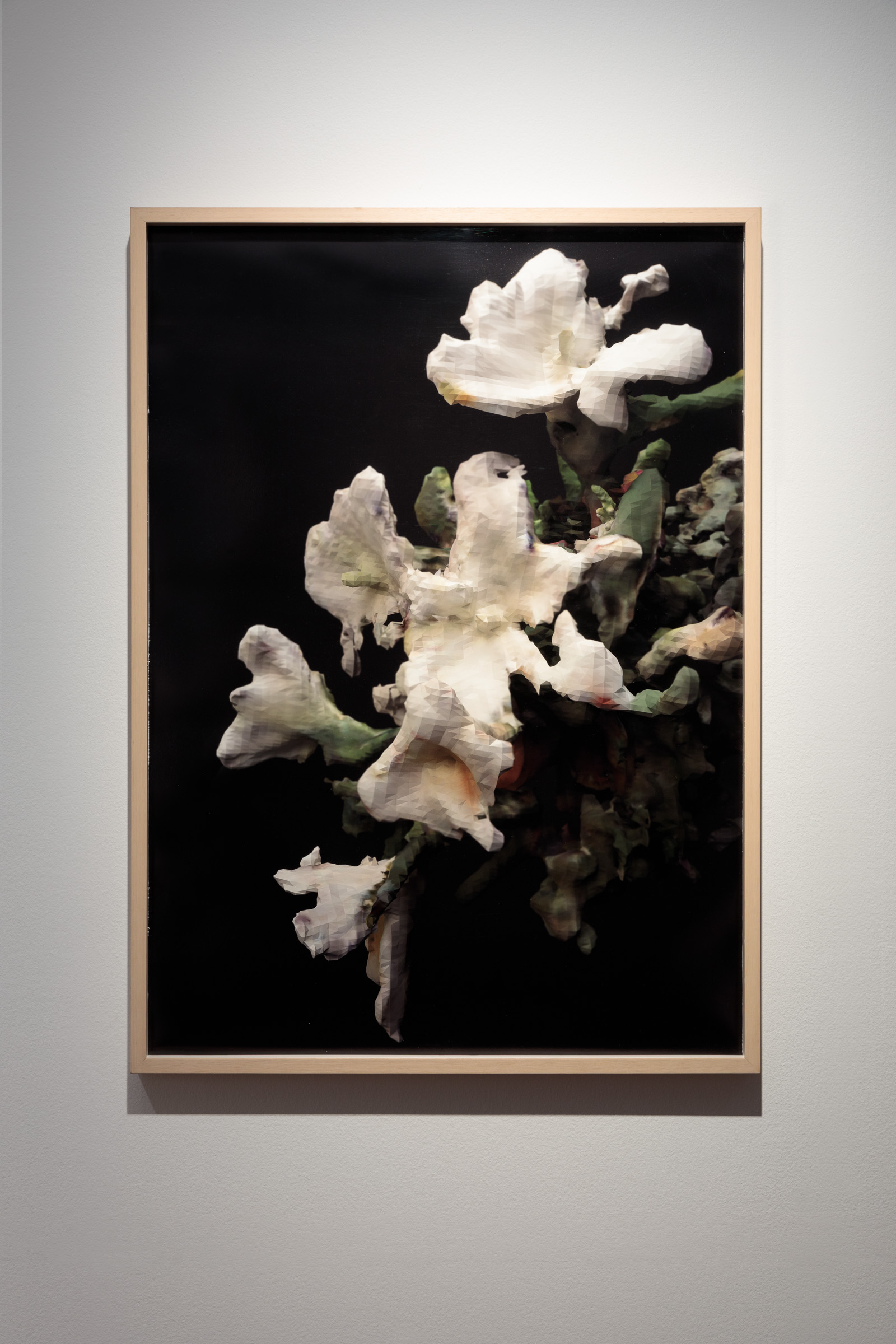
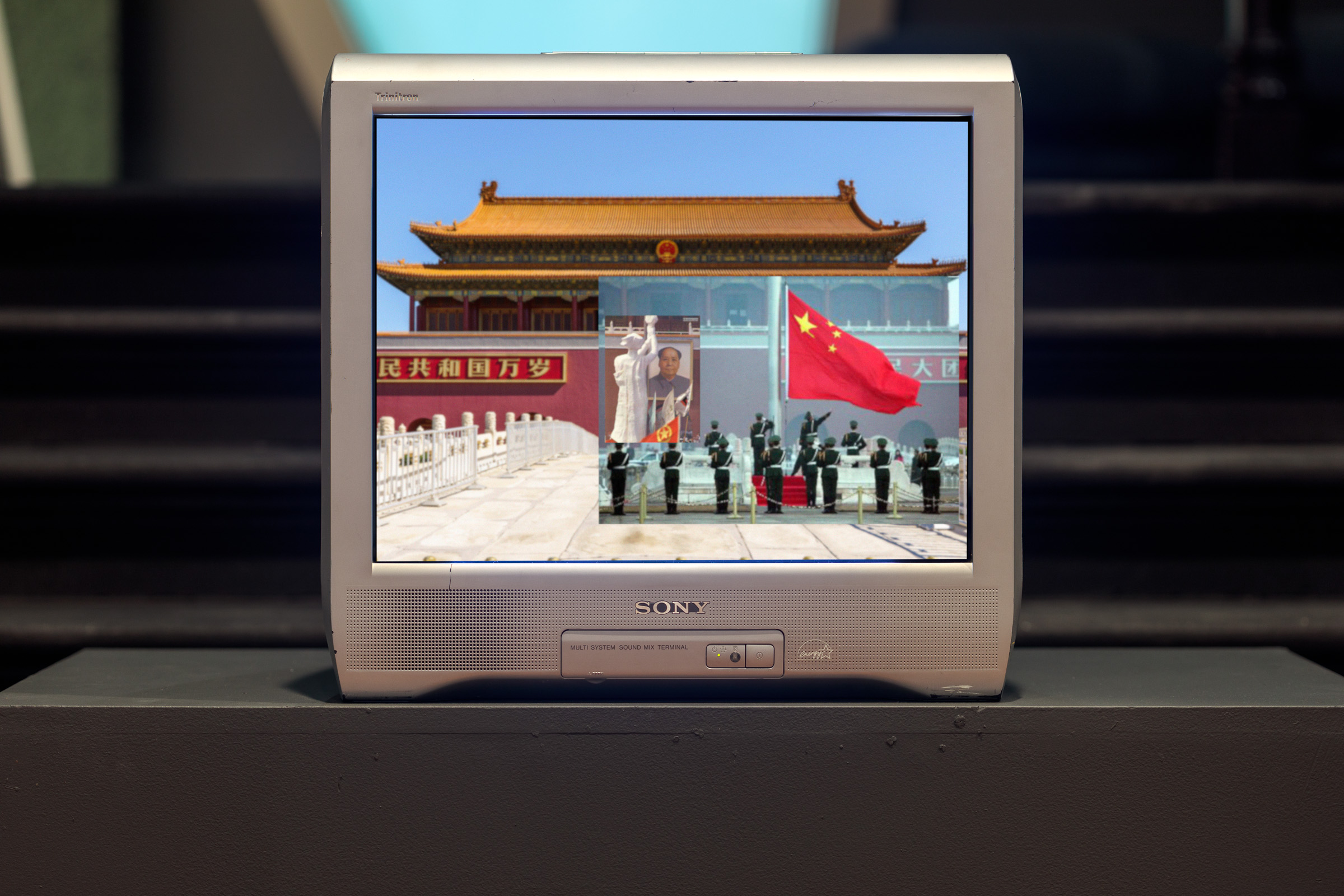
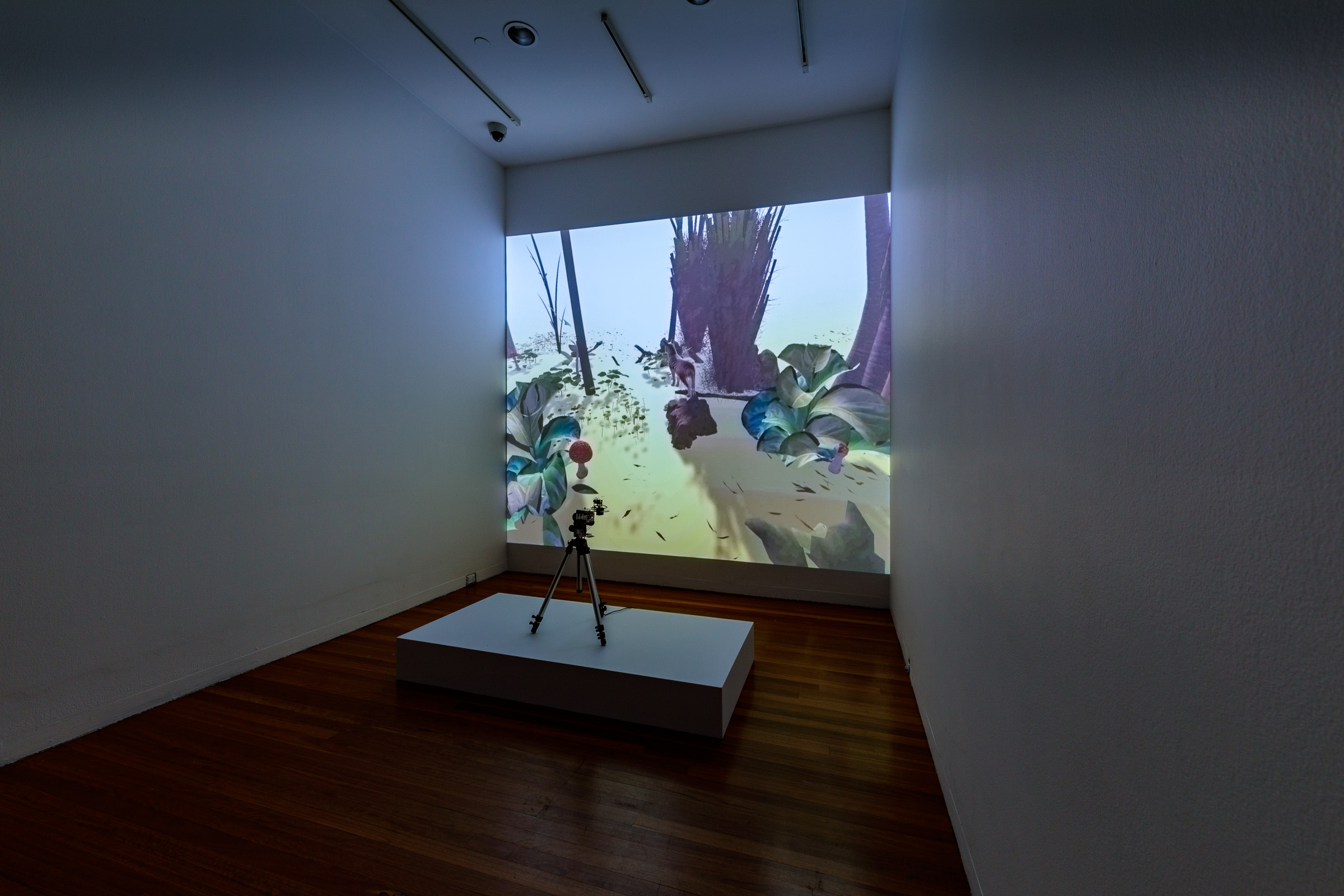
 Installation images: The Image Looks Back, RMIT Gallery. Photographs: Mark Ashkanasy ©RMIT Gallery
Installation images: The Image Looks Back, RMIT Gallery. Photographs: Mark Ashkanasy ©RMIT GalleryTo the Moon and Back
2019 | curated exhibition at the Ballarat astronomical observatory | part of the core program of the Ballarat International Foto Biennale, Australia | co-curated with Dr Colleen Boyle | supported by funding from the U.S. Embassy Public Diplomacy Small Grants Program
To the Moon and Back examined the lasting impact of the 1969 lunar landing on contemporary culture through the lens of photographic media. Archival images were exhibited with artwork by contemporary international artists within the heritage-listed Ballarat Astronomical Observatory and Museum. The exhibition examined how different artistic approaches to processes and conceptions of photography might offer a more complex view of the Apollo 11 Moon landing beyond a celebration of national technological and ideological achievement. To reconfigure historical narratives, NASA’s own image archive was used to amplify under-represented narratives. From the collective documentation of the Moon, to the politics of colonisation and naming practices, to utopian visions of inhabiting the Moon — the exhibition examined multifaceted perspectives of our nearest celestial neighbour. These explorations incorporate various forms of image-making that include analogue processes, collage, digital 3D imaging, and screenshots of publicly available online material.
Participating artists:
Andrew Curtis
Vincent Fournier
Sharon Harper
Sasha Huber
Penelope Umbrico
Qicong Lin
Matt Lipps
Jorge Mañes Rubio
Andrew Curtis
Vincent Fournier
Sharon Harper
Sasha Huber
Penelope Umbrico
Qicong Lin
Matt Lipps
Jorge Mañes Rubio

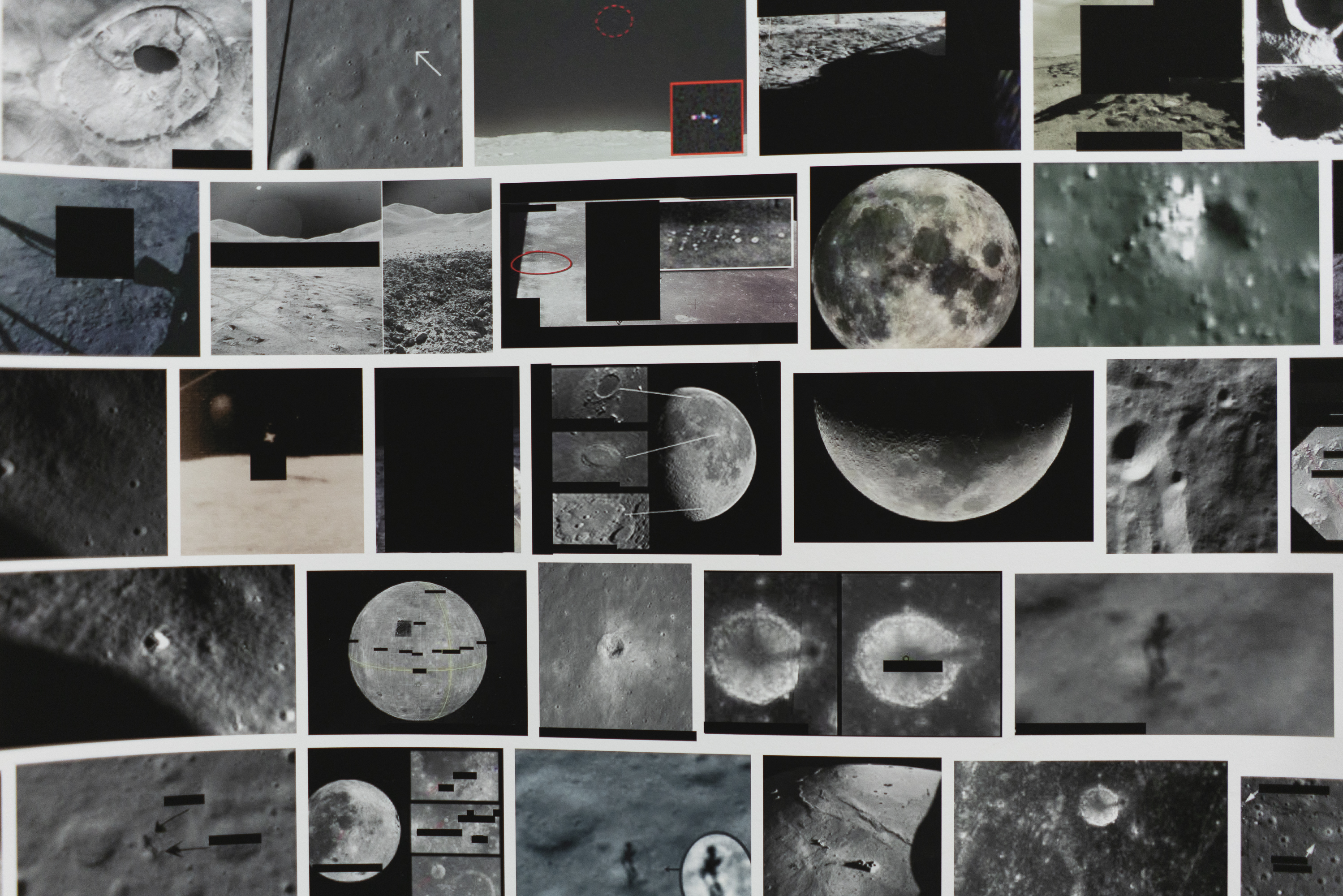
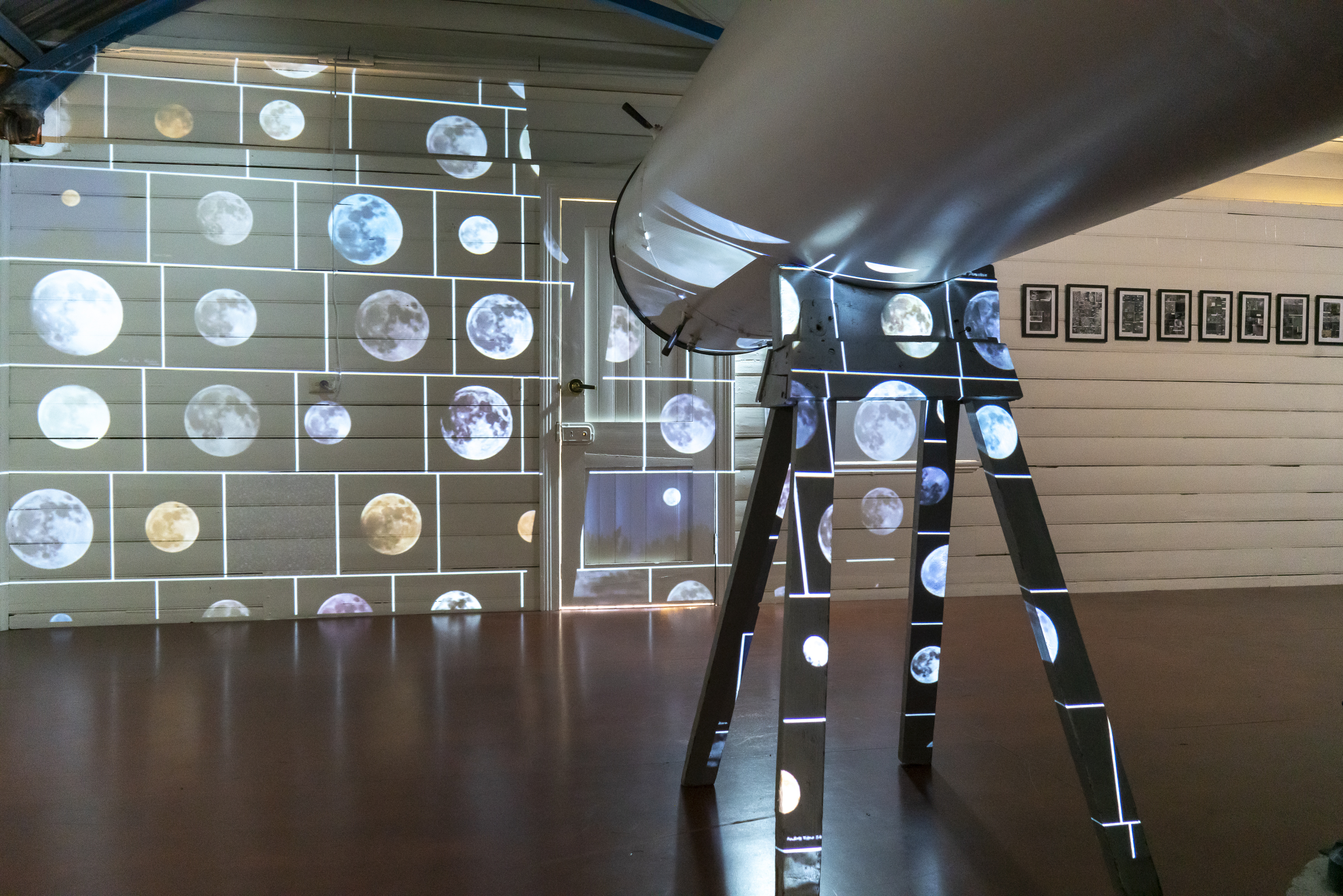
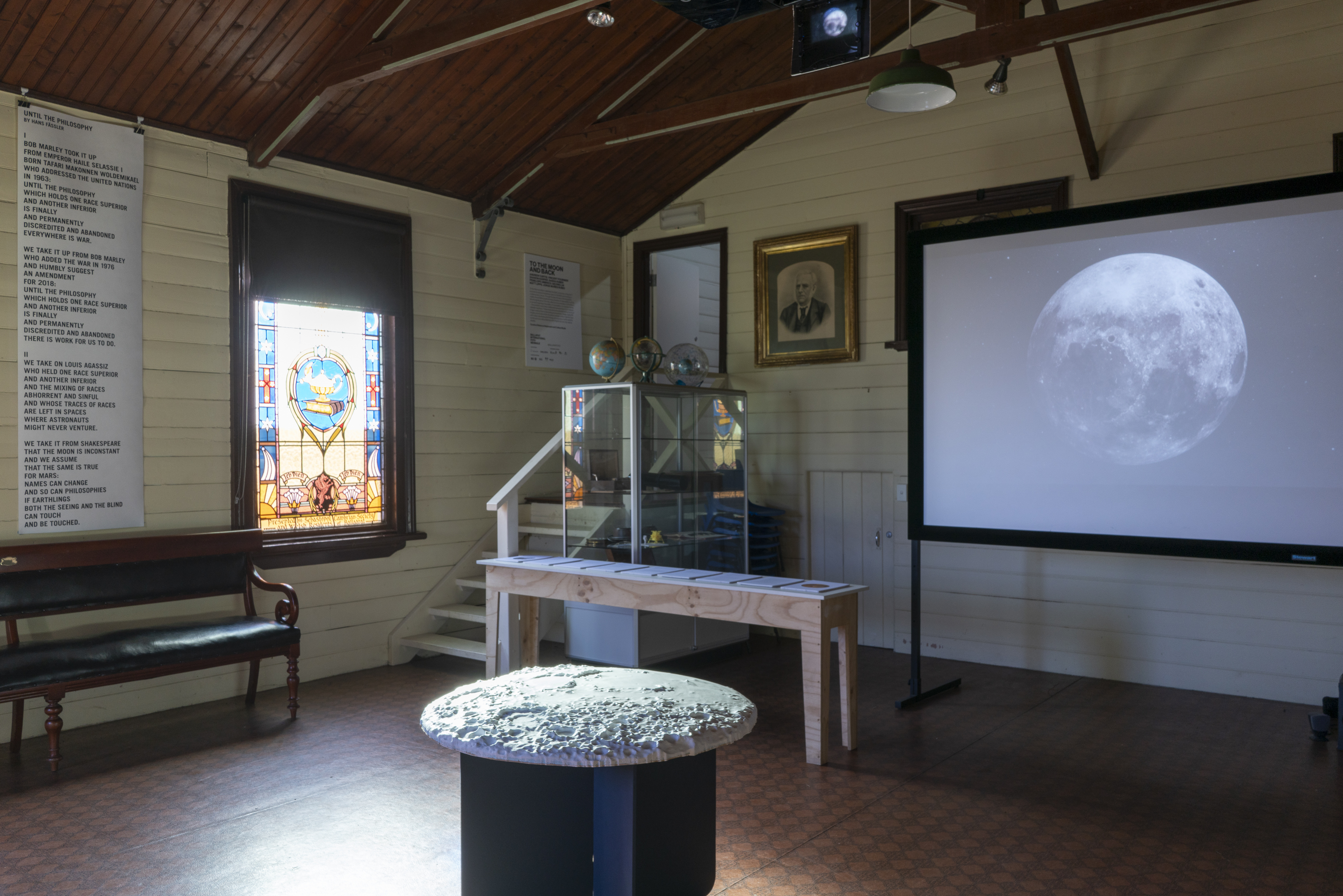
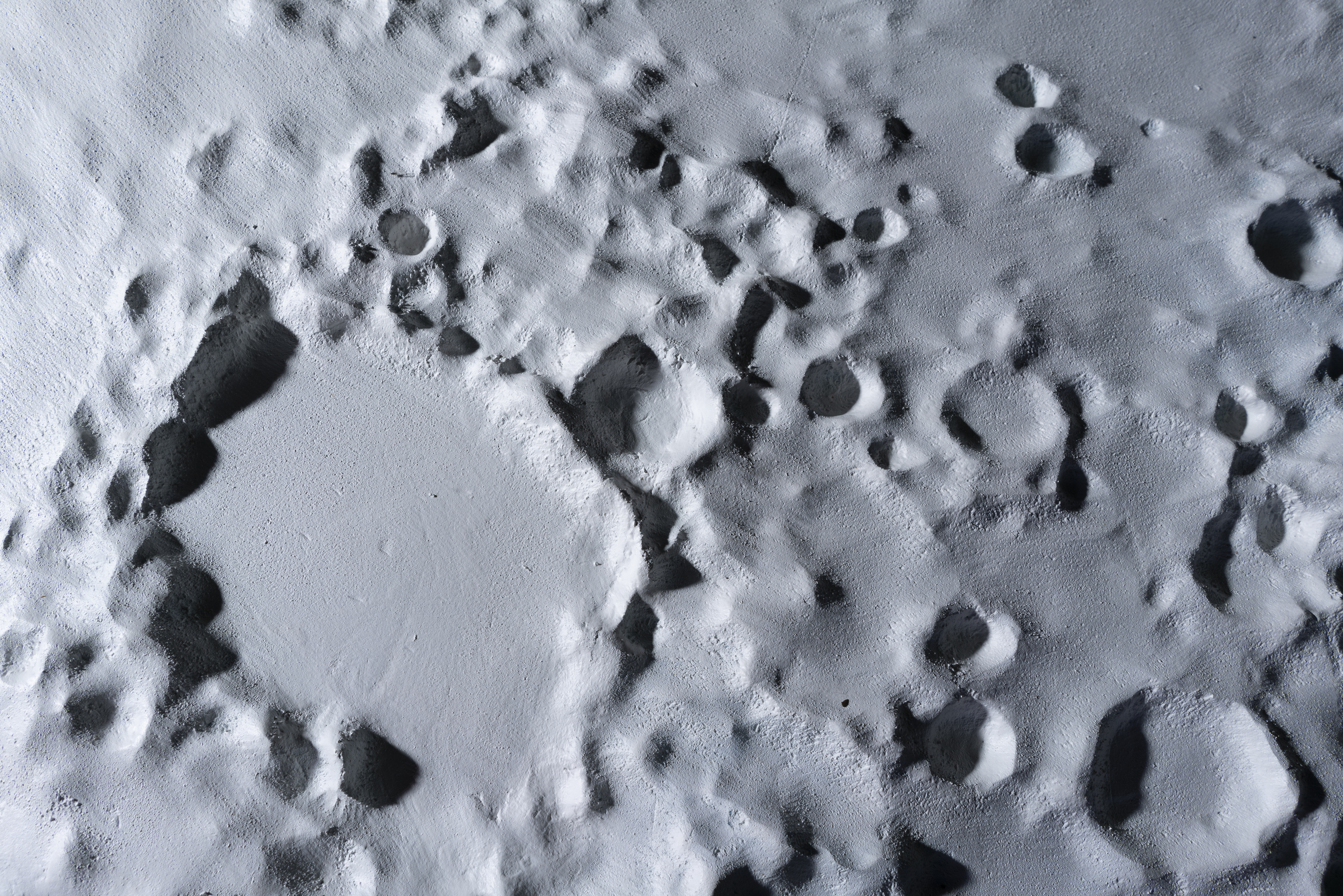
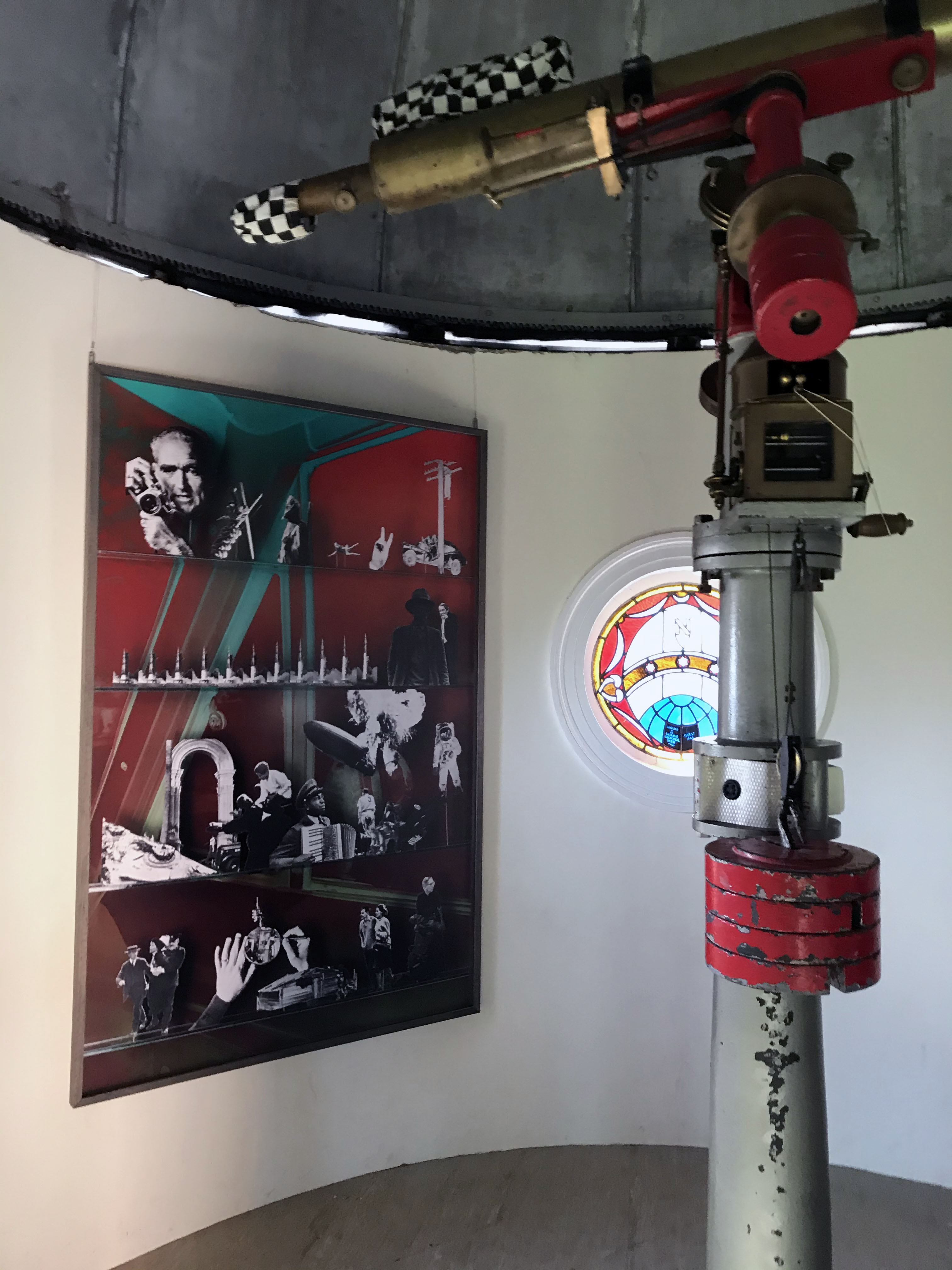




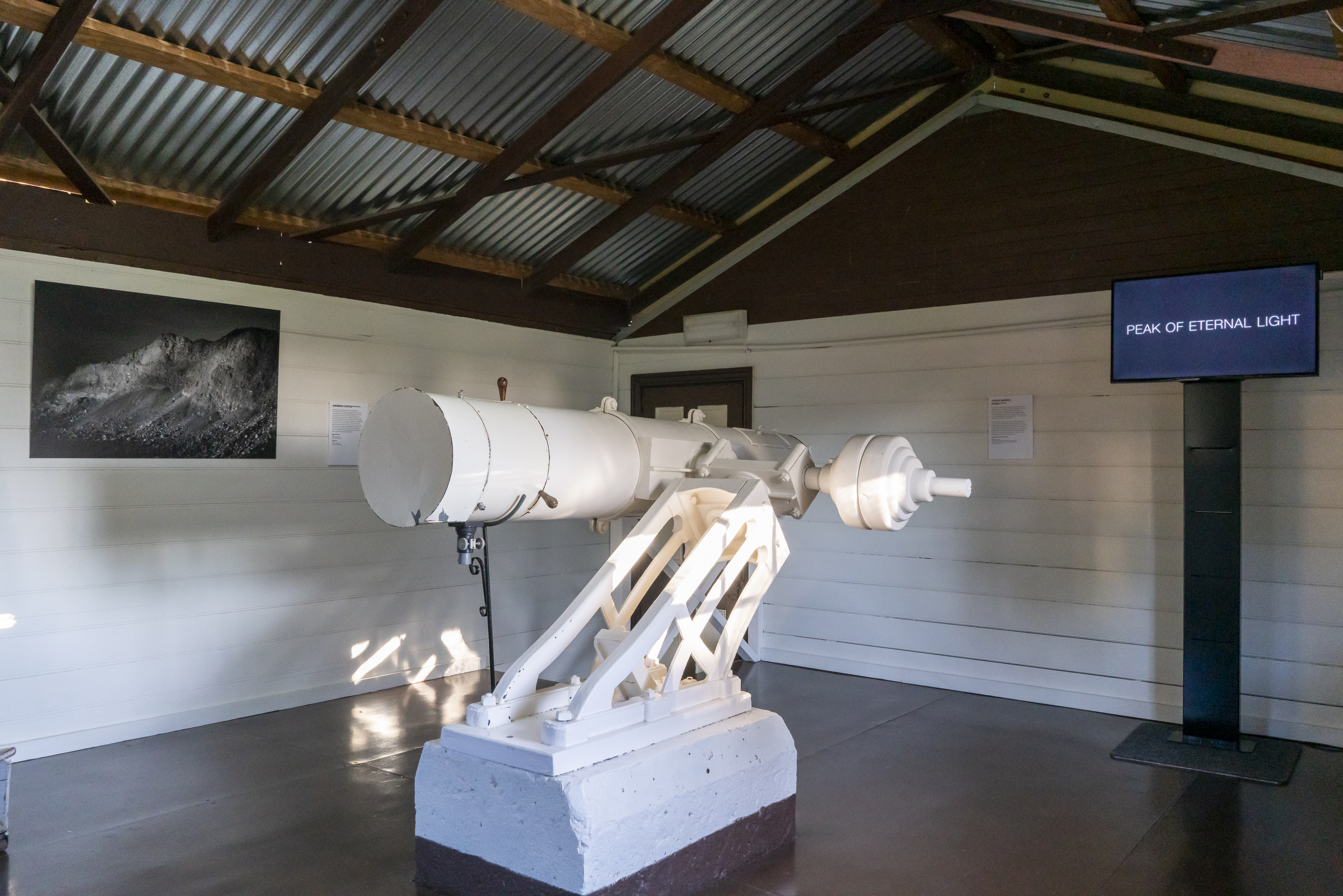
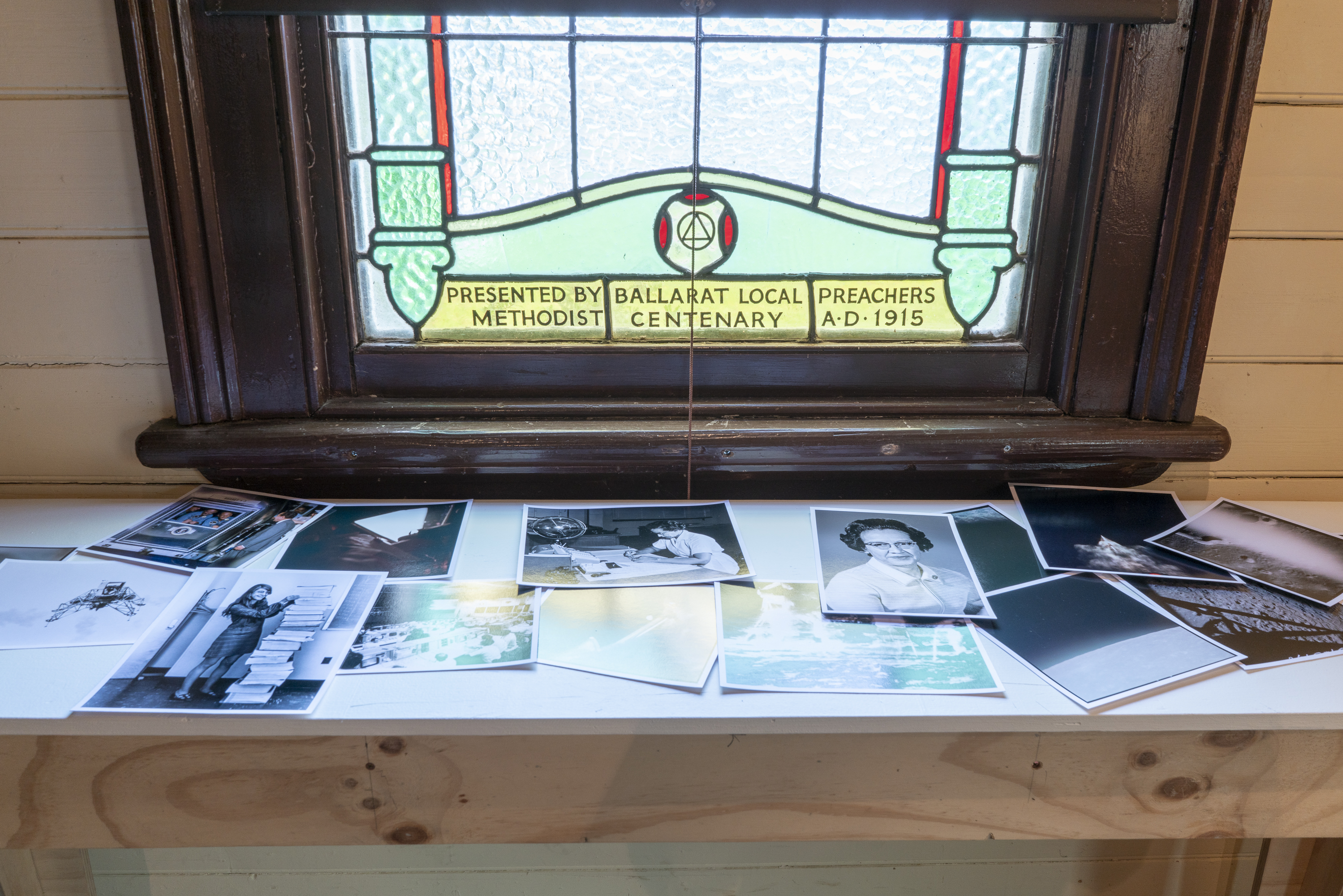
A Field Guide to the Stars
2017 | curated exhibition at the Ballarat astronomical observatory | part of the core program of the Ballarat International Foto Biennale, Australia
How do humans understand and imagine outer space? What technologies have shaped and expanded these perceptions of scale, distance and time? A Field Guide to the Stars pairs artworks and archival materials to explore how photography and related media operate within our shifting awareness of the cosmos.
Photography and astronomy have an intrinsic relationship, evidenced by technical advances and the collective imagination of space. For instance, photographs of the moon’s surface, including those in this exhibition from Lunar Orbiter V (1967), were crucial to making the 1969 moon landing possible. Whereas widely circulated and aesthetically compelling images of space, like nebulae captured from the Hubble Space Telescope, elicit curiosity and wonder in non-scientists. Astronomical observatories and archives bring together scientific evidence and the fanciful unknown, making them sites of discovery that hold cultural, historical, and symbolic weight. As a collection of astronomical photography and historical, scientific ephemera combined with contemporary photo-artistic practices, A Field Guide to the Stars explores the human impulse to orientate ourselves within the expanding universe.
participating artists:
Clare Benson
Alex Cherney
Kate Golding
Kate Robertson
Hillary Wiedmann
Eric William Carroll
Rebecca Najdowski
The catalog can be accessed here — includes an essay by Colin Edgington.
Clare Benson
Alex Cherney
Kate Golding
Kate Robertson
Hillary Wiedmann
Eric William Carroll
Rebecca Najdowski
The catalog can be accessed here — includes an essay by Colin Edgington.


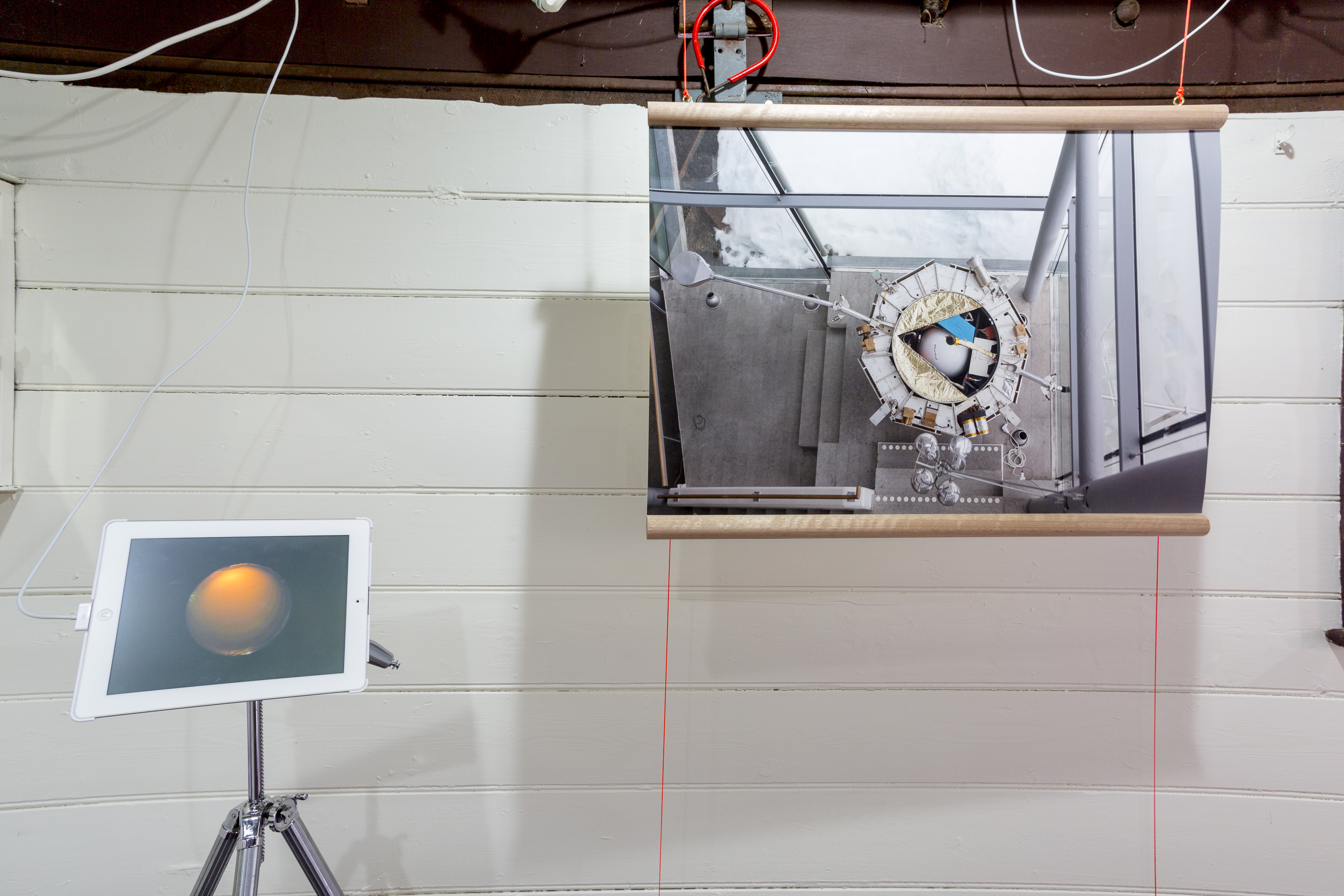



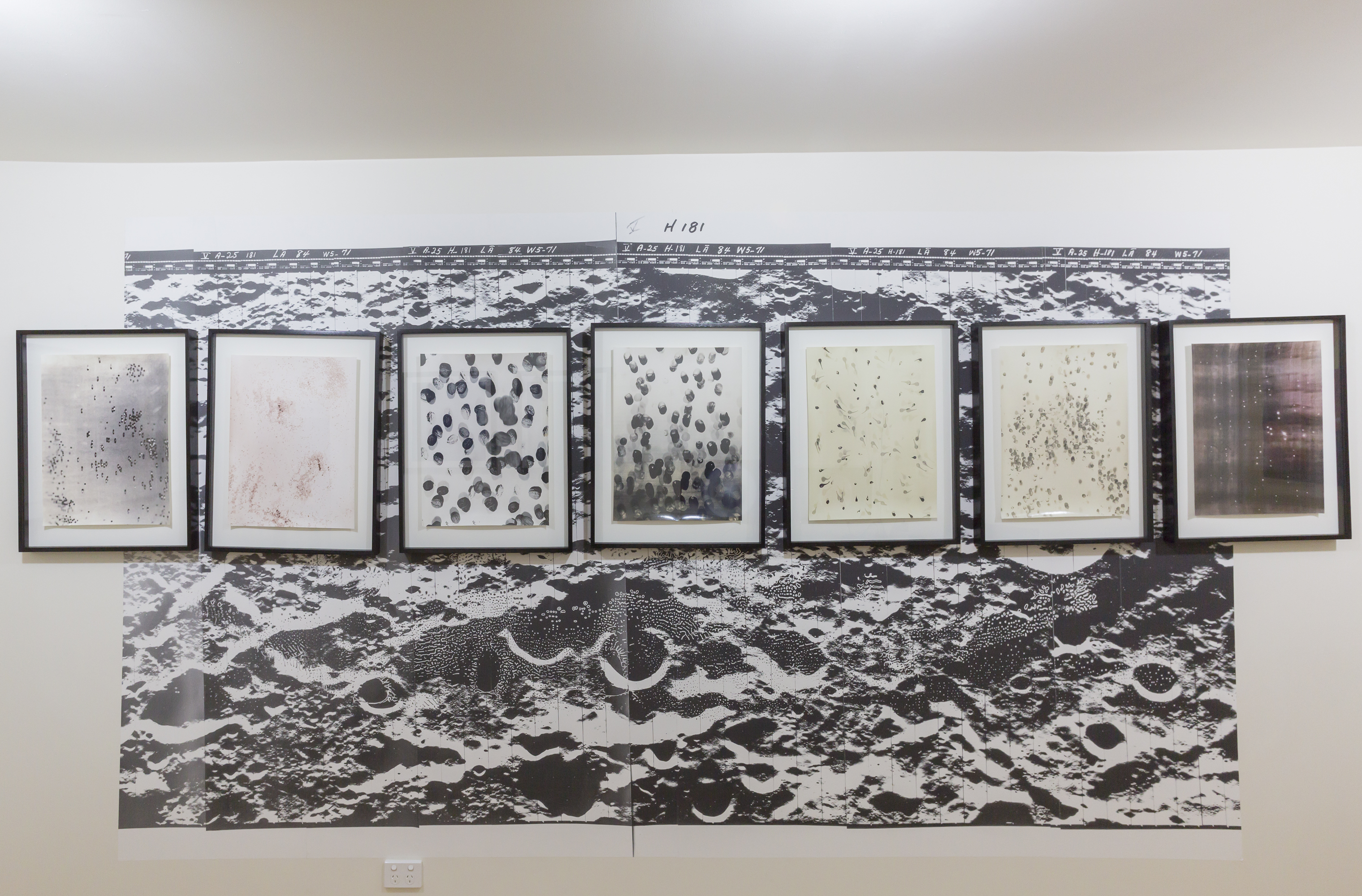


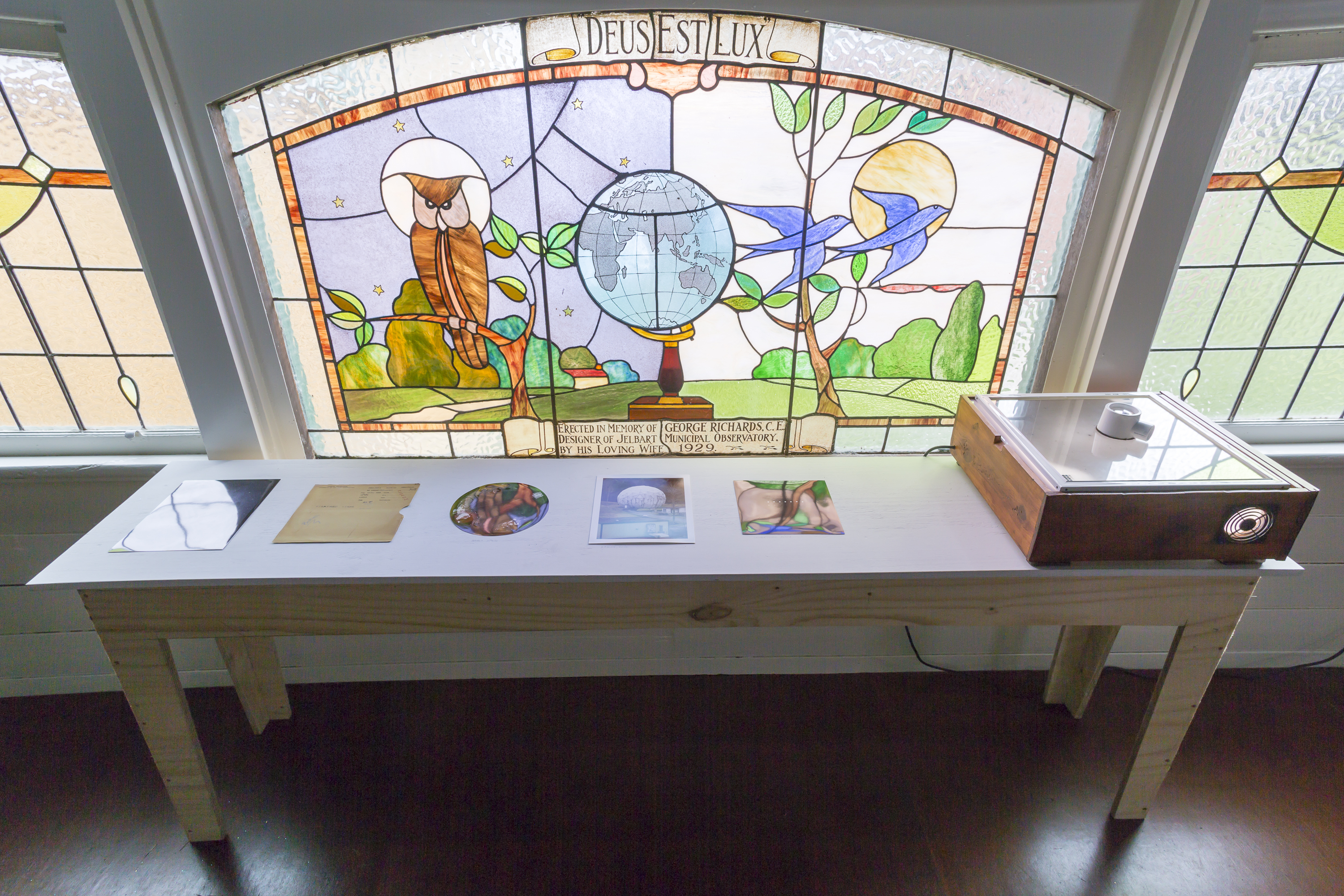
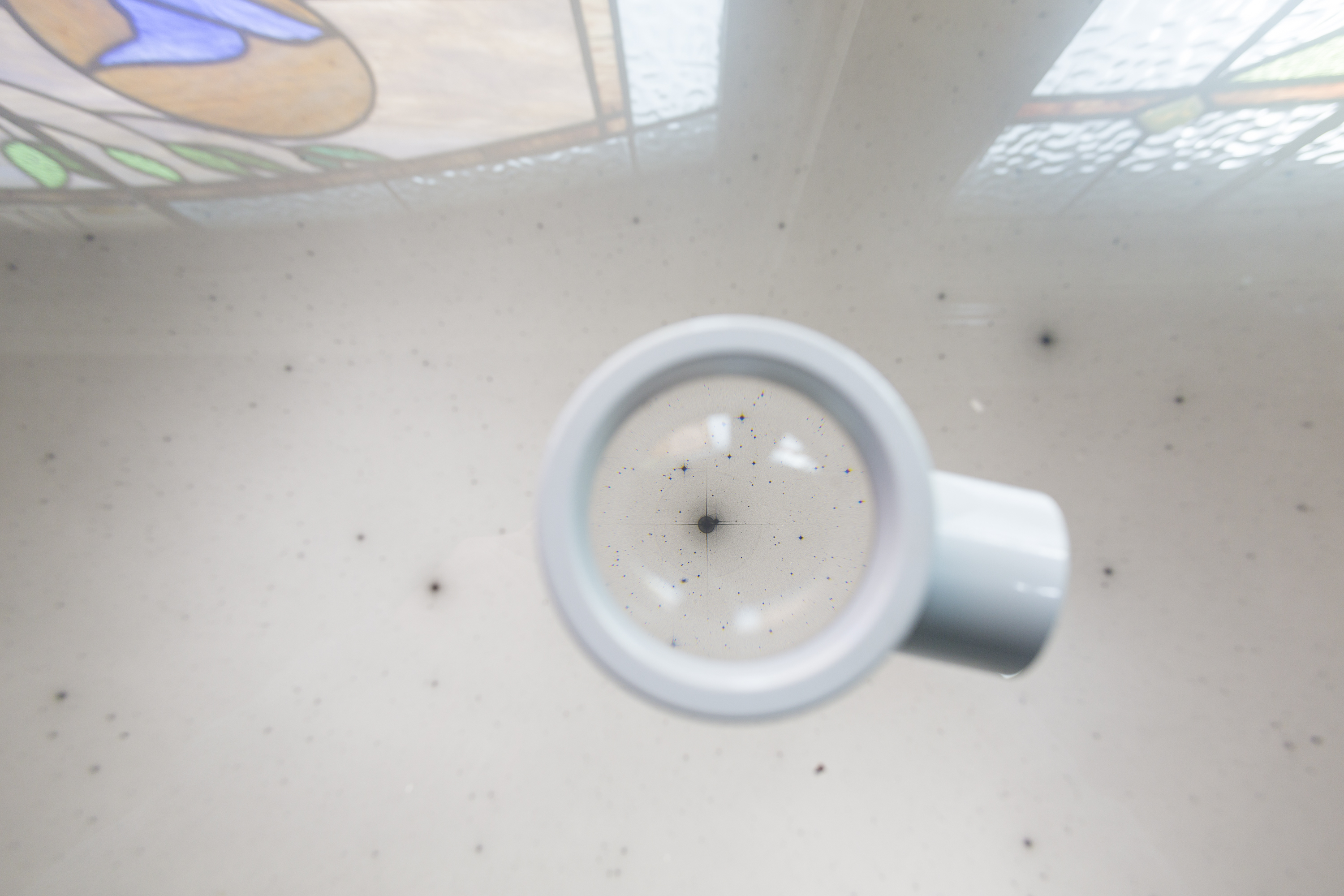

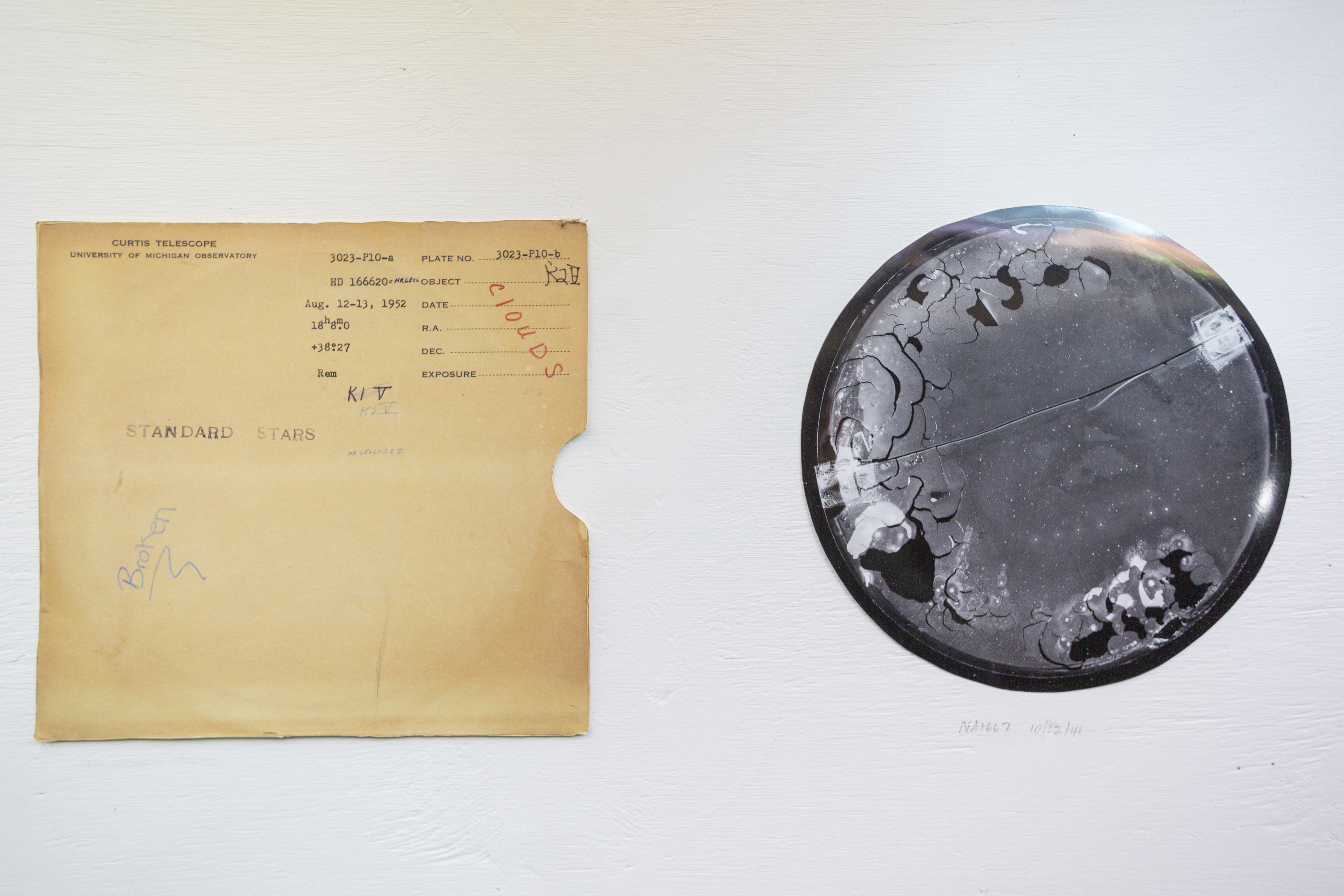
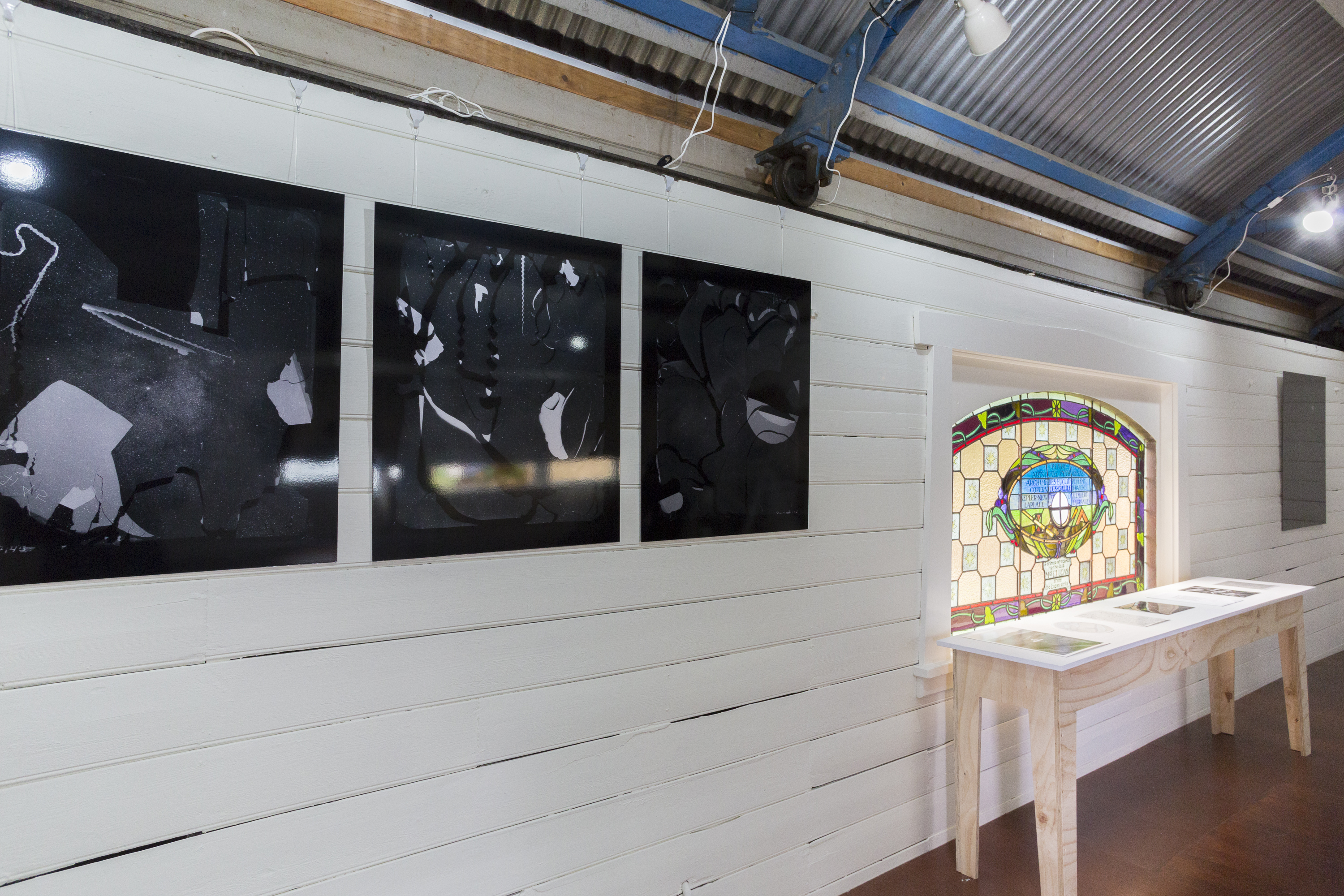
Give Them Distance
2017 | digital video and acrylic mirror, wood, and photographic adhesive sculpture
01:00 min preview of 03:05 min video.
Give Them Distance explores how we comprehend the cosmos and our place within it. Created from hundreds of slides discarded by a university Earth and Planetary Science department, the looped video animates a journey from Earth, through the solar system and space, returning to our planet via fallen meteorites. Juxtaposed with the cycling slide images, droning and degraded audio captured from Walt Disney’s 1979 super-8 sci-fi film “The Black Hole” provides a hypnotic rhythm. Give them Distance considers the idea that we have come to know the collectively-imagined cosmos through photomedia and sci-fi films. In this piece, outmoded visual and audio representations of earth and space reveal a cultural and material patina. The video, through its coupling of an unavoidable wearing down with cosmic expanse, attempts to point to the paradoxical coexistence of entropy and the infinite.



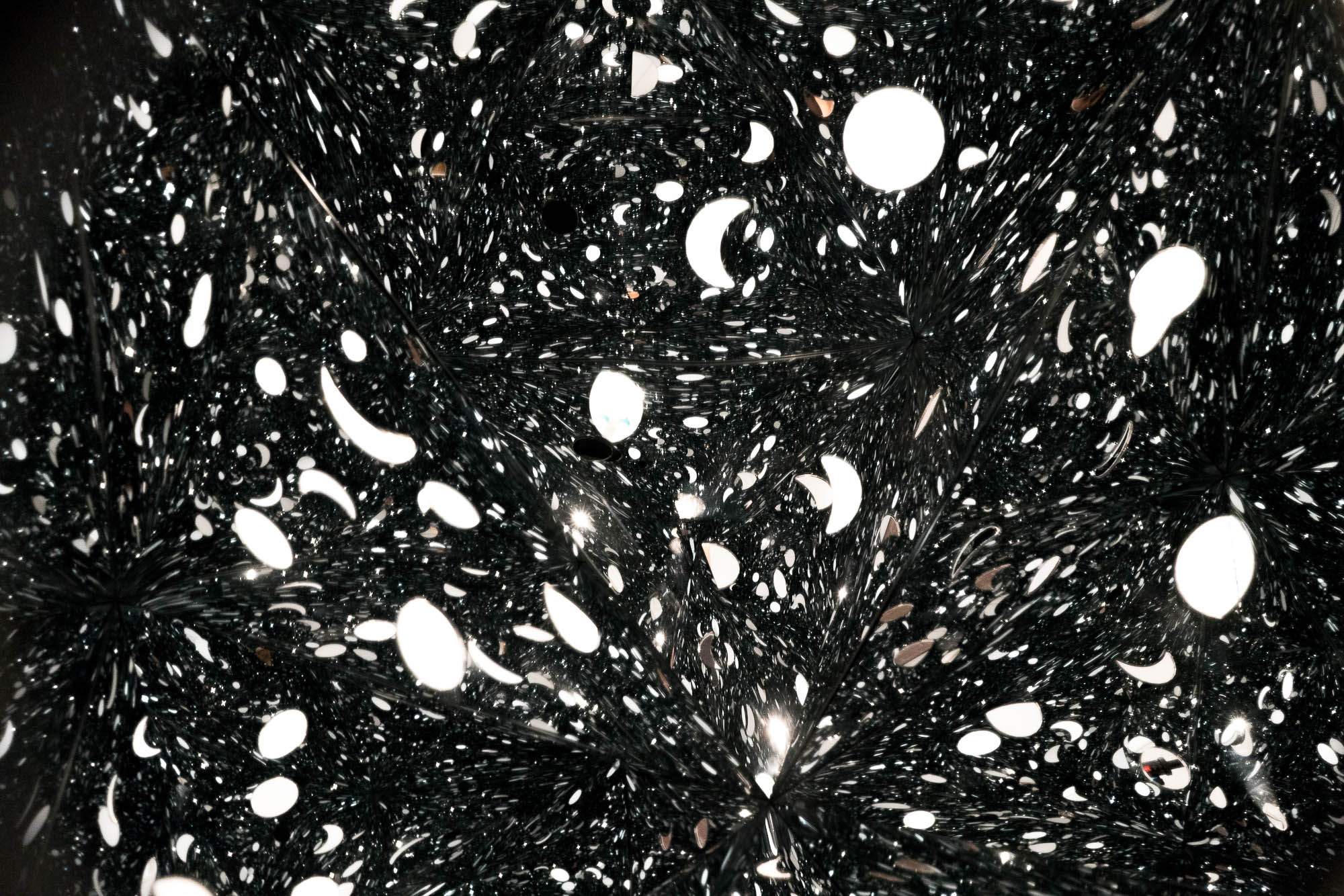
Desert Pictures
2014 | chromogenic photograms, digital video, gelatin silver solar prints, acrylic and light sculpture | supported by the University of Arizona and the Center for Creative Photography, Tucson, Arizona, US
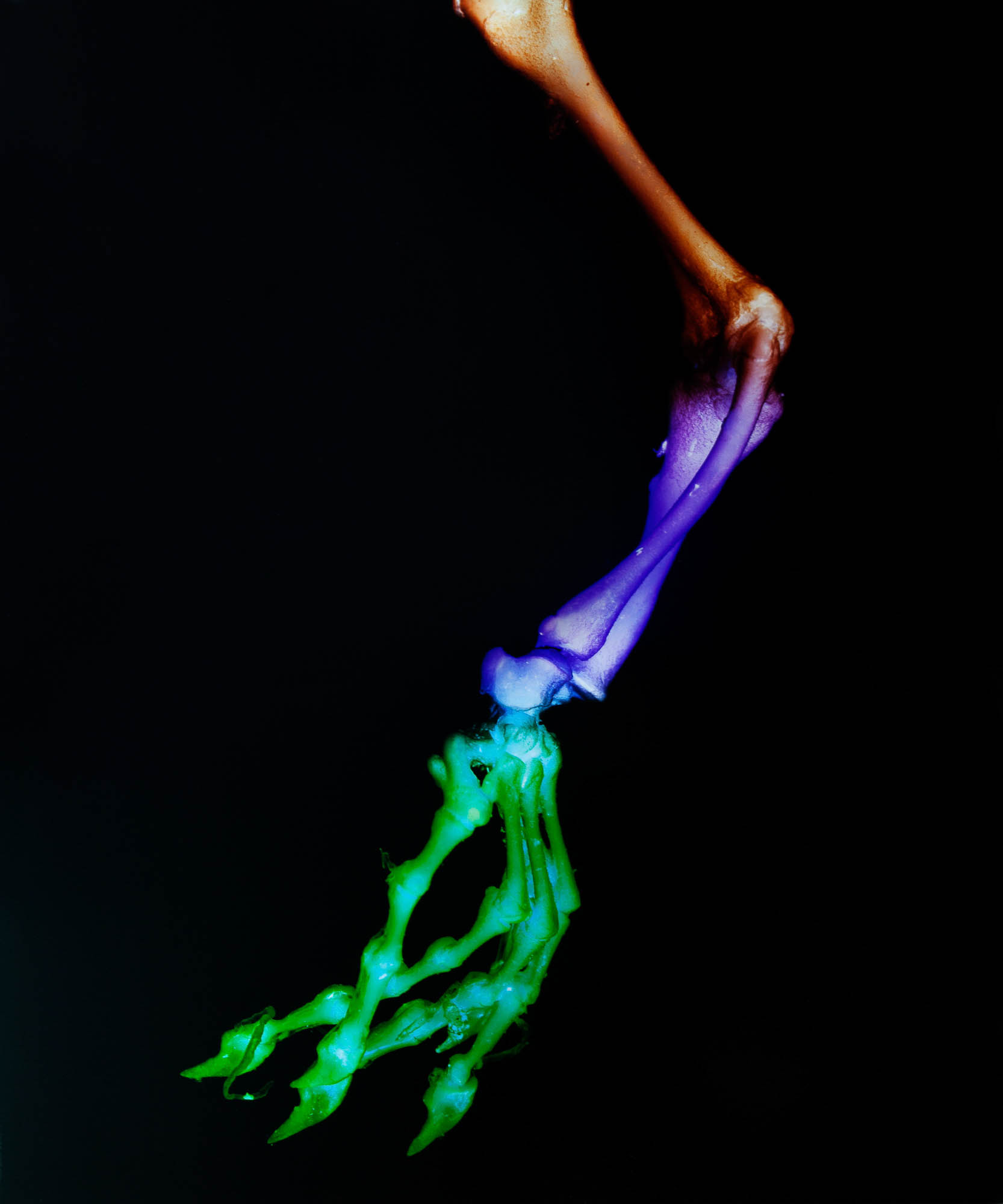



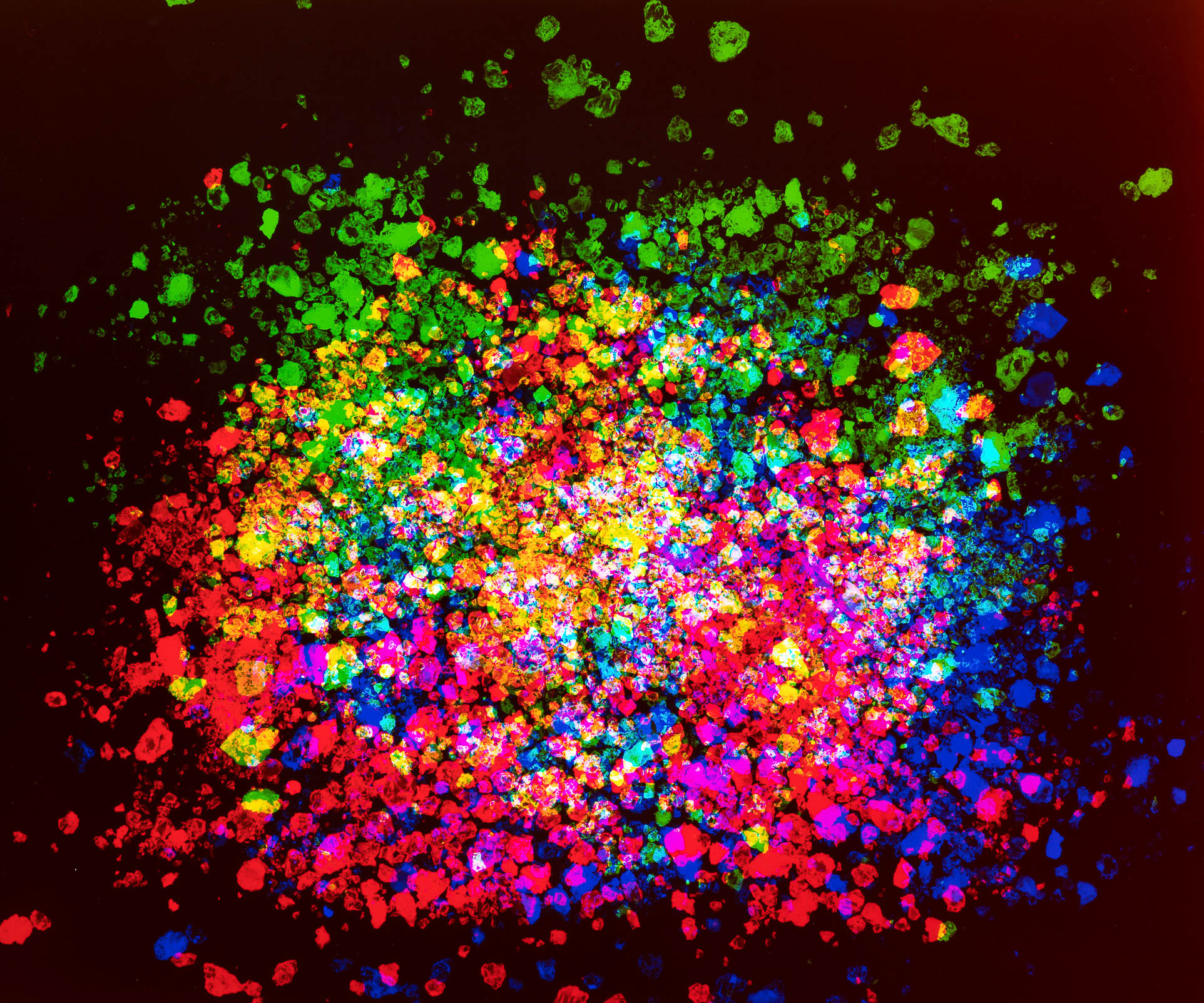

chromogenic photograms created from plants, animals, and minerals
Desert Pictures explores the notion of landscape through a series of images, objects and photo-driven experiments. Informed by a formative years in the deserts of the Southwestern United States, this work considers how desert environments are imaged and framed: can the spatial, perceptual, temporal, biological, and chemical of a place be embodied photographically? By focusing on optics, light, minerals, surface, time, and chemical and digital interactions this project incorporates these essential components of photography and video-imaging in order to reveal the conditions of representation. Desert Pictures was made in collaboration with the desert environment using minerals, rain, and the sun. A variety of approaches explore the materiality of analogue and digital media to suggest alternative ways to represent the multifaceted aspects of an environment, expanding the representation of environment far beyond the traditions of pictorial landscape photography.
Desert Pictures was developed during a fellowship at the Center for Creative Photography and works from this series are now part of their permanent collection.
untitled (sun), 1:00 minute preview of 2:33 video, looped
The video untitled (sun) engages with the idea of landscape representation through unconventional manipulations of imaging media. In the mid-day brightness of Northern Mexico, a digital camera was pointed directly at the sun, purposely causing overexposure of the image’s individual pixels. The chromatic aberrations caused by the malfunction of the camera’s sensor reveal the aesthetic possibilities of failure, depicting the sun as an ever-changing column of light, fringed with green and purple radiations. This sensor ‘bloom’ transforms the image of the sun while exposing the medium’s limits of representation.



untitled (Torus in 3 Space, 4 Dimensional Hypercube, Heterotic Superstring), etched arcylic panels, red, green, and blue light

selection from untitled (desert rain), gelatin silver paper, desert rain, gold toner


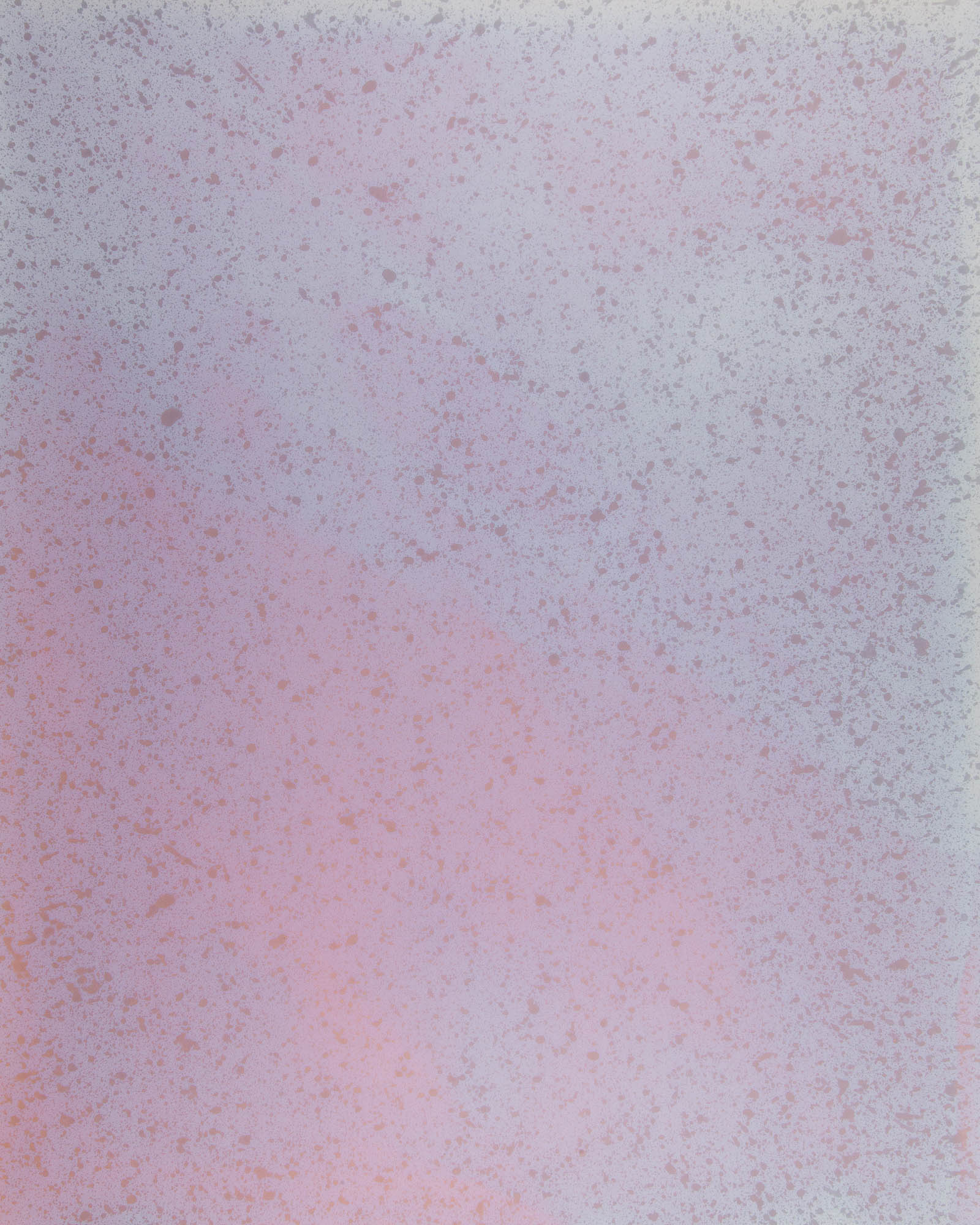

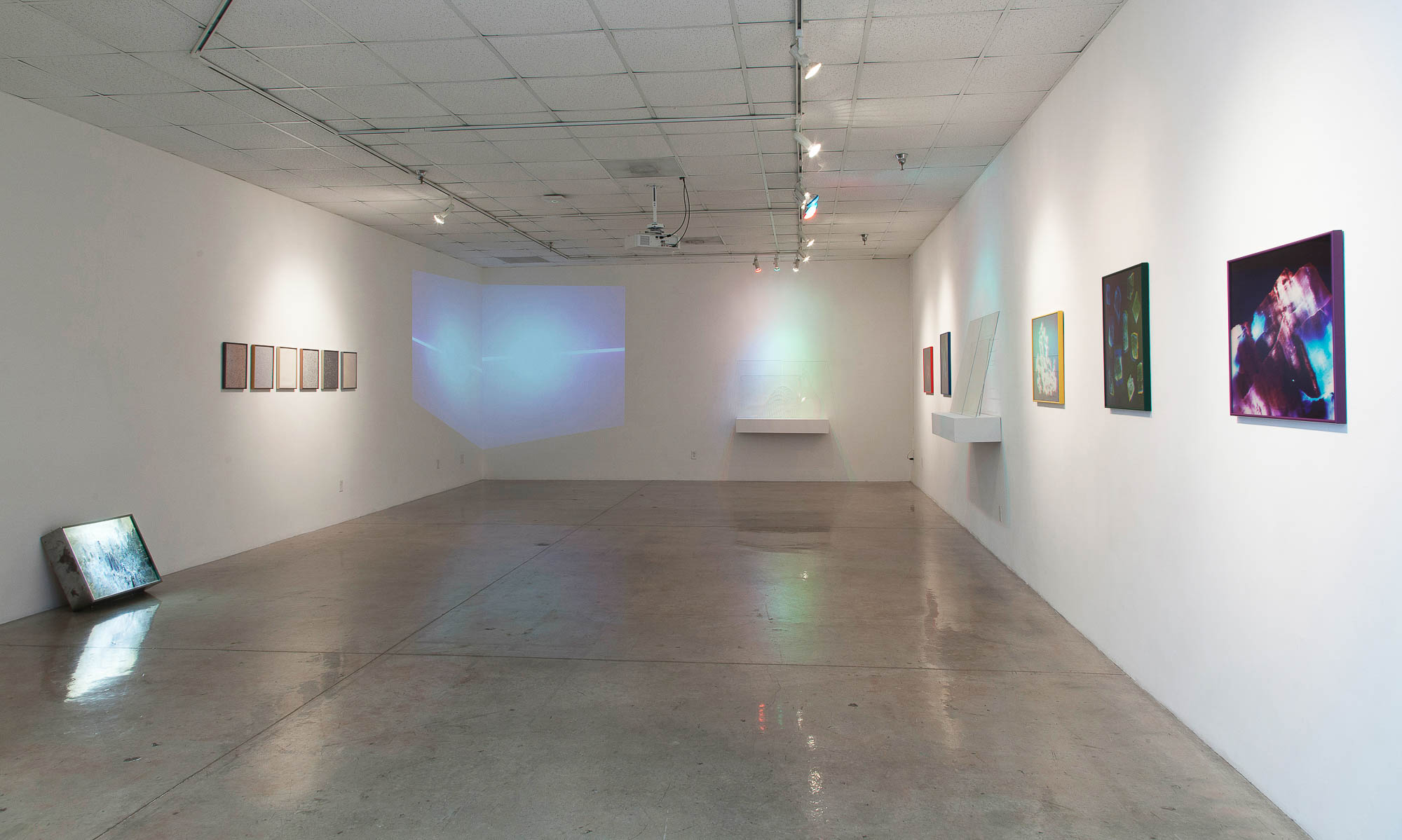
Octahedron
2012 | collaborative project with Steve Pacheco | augmented reality (AR) intervention at White Sands, New Mexico, US
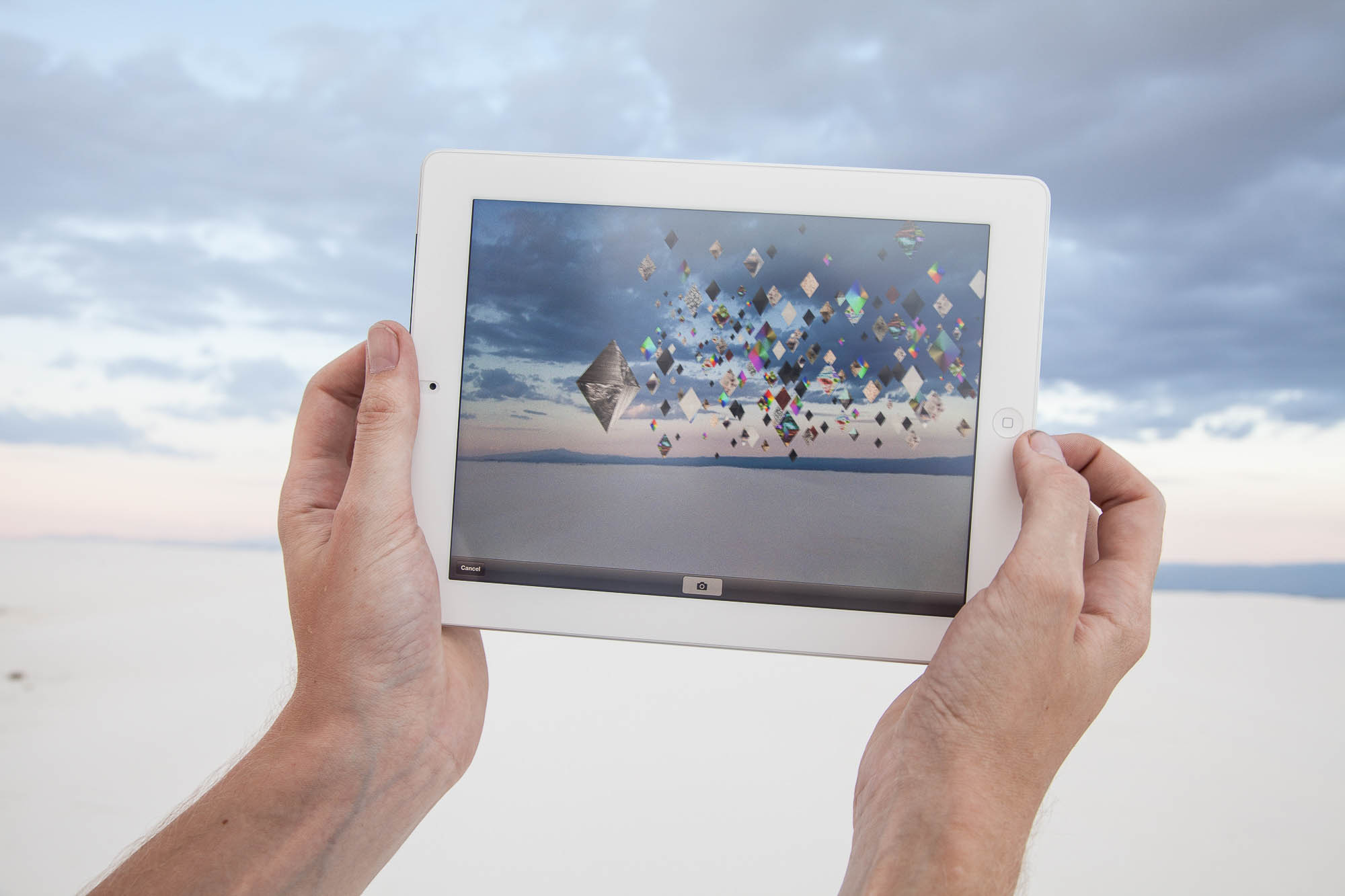
Octahedron is a collaborative project with designer and musician Steve Pacheco. An Augmented Reality (AR) art intervention, it creates an interplay between dimensions of the visible and invisible through geo-positioned digital layers within the landscape of White Sands National Monument in New Mexico. AR technology uses a special browser on smartphones and tablets that allows the device to “see” previously invisible digital layers, it conjures up additional, floating objects within a real space. Using Annie Bessant and CW Leadbeater’s 1901 publication “Thought-forms” as a starting point, the project explores their notion that conscious energy can manifest in a 3D form. The aim is that an encounter with the intervention will blur the distinction between visible/invisible, past/future, object/experience, and thought/form.




Above / Below
2013 | light installation from overhead projectors, aluminum foil

Above/Below is a primitive planetarium that shifts with the presence of the audience — viewer’s shadows and projected light collide to create a mutable space. The installation consists of six overhead projectors on the floor of a darkened room. On each sits a sheet of aluminum foil with hundreds of tiny holes. These function as apertures, projecting light passing through to create an array of ‘stars’ on the ceiling and walls. Above/Below references both the prehistoric conception of stars as punctures in the mythological fabric of a night sky as well as the camera obscura, a darkened room in which the ‘outside’ is revealed on the interior walls.



Black Sun
2010 | chromogenic photograms, digital video, and acrylic mirror and electroluminescent wire sculpture

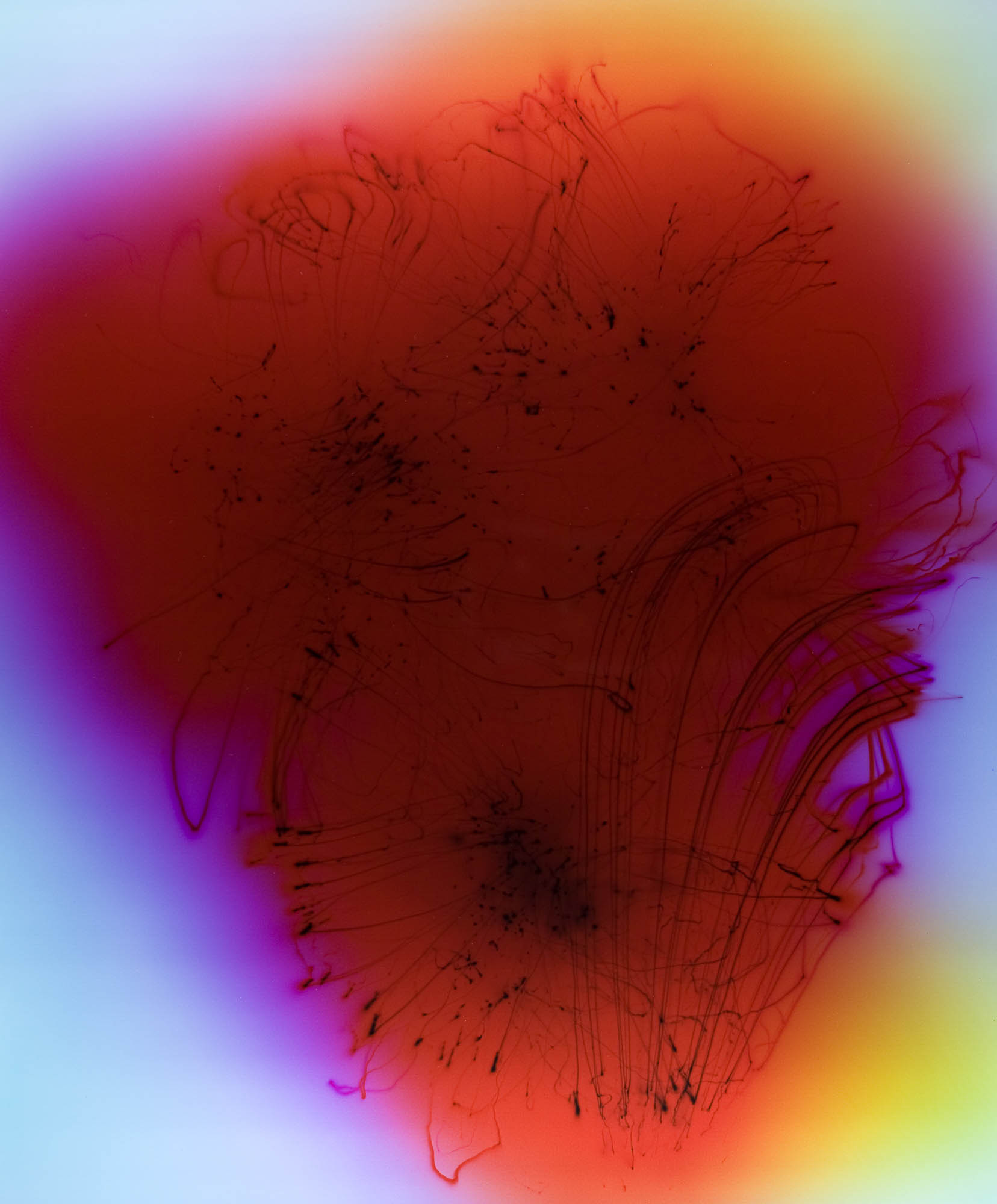





Black Sun centers on the connection between time, the desert, abstraction, and wonderment. The project includes digital videos, photograms, and a mirrored light sculpture. Combining stop-motion animation, time-lapse, and altered found footage the video series references New Age practices and plays with the coherence of time and perception through home-spun illusions and layering. Imagery in the series is dominated by the desert, representing a liminal space as it is one of nothingness and also inherent possibility. The lumiograms and photograms reflect photography’s history and materiality and consider what an alternative vision of photography can be. A productive uncertainty occurs in the darkroom as various enlarger filter combinations and unwieldy light sources create abstract forms. The result are metallic and glossy images that function as alternative moments that may have been in the video.
from the series Black Sun, video preview
Infinity Box #2 is a collaboration between the artist and her father. The sculpture is an updated version of a primary school science fair project that they both worked on. The original consisted of a shoe box, mirror, and a strand of lights and has since been lost. A preoccupation with the youthful curiosity and wonderment that it represented led to the development of a second version of the sculpture where the viewer looks through a hole at the top of the box revealing their eye peering back at them, surrounded by a psychedelic display of infinite electroluminescent lights.
